

























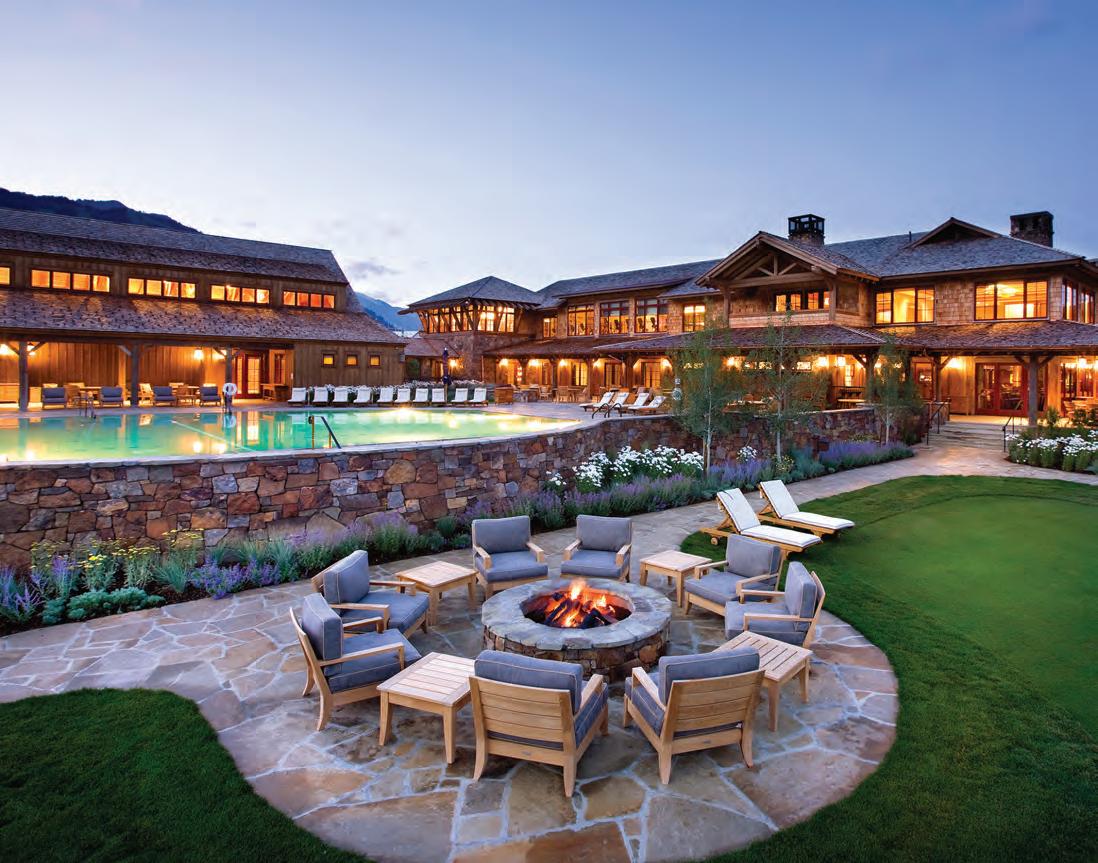








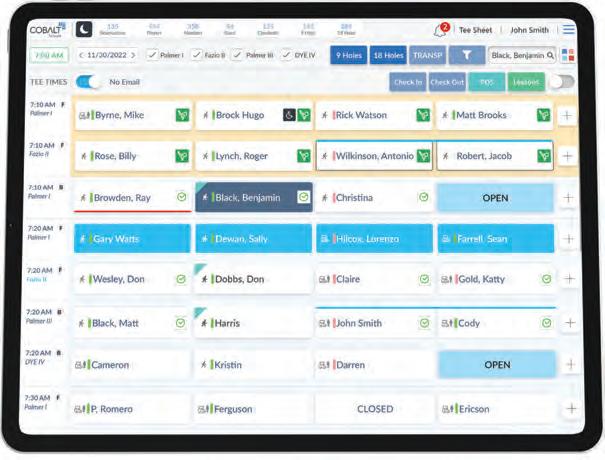
Empower Your Members & Staff


EDITOR’S NOTE

DAVE WHITE
Dave White is the editor of BoardRoom magazine. If you have comments on this article or suggestions for other topics, please send Dave an email to: dave@boardroommag.com.








































DAVE WHITE
Dave White is the editor of BoardRoom magazine. If you have comments on this article or suggestions for other topics, please send Dave an email to: dave@boardroommag.com.
BoardRoommagazine’sDistinguishedClubsand DistinguishedGolf Destinations are making their mark on the worldwide private club industry.
And as Distinguished Club’s Executive Vice President of International Business Development Ron Banaszak, in our cover story, explains, Morocco, a country in the Maghreb region of North Africa, is a “rising star in global golf destinations.”
And six Moroccan clubs that have now earned Distinguished Golf designations are featured in our July/August BoardRoom magazine.
Banaszak recently completed an audit of all six clubs, which resulted in their Distinguished Golf Destinations designations. The clubs include Royal Golf DarEs Salam, Iconic status; Golf Tazegzout, Elite status; Royal Golf El Jadida, Exceptional status; Royal Golf Fès, Exceptional status; Golf Oued Fès, Exceptional status, and Golf Les Dunes, Exceptional status.
As Banaszak writes, “For golf resorts, semi-private, daily fee and public golf courses that operate at the highest standards, BoardRoom magazine’s Distinguished Golf Destination designation program uses a specific rating system that recognizes the golf course, the facility and its management and staff based on a proprietary criteria validation process that distills and measures an outstanding golf experience.”
His Royal Highness Prince Moulay Rachid, president of the Royal Moroccan Golf Federation and the Hassan II Golf Trophy Association, developed this future vision for the game of golf in Morocco, and today, the Royal Moroccan Golf Federation counts 40 courses among its members.
For sure, this is the start of a worldwide expansion of BoardRoom magazine’s Distinguished Club and Distinguished Golf Destinations programs and we can likely expect more expansion in future.
n n n
As we’ve learned over the years, long-term, loyal staff members bring many benefits to private clubs, including stability, relationships with members, expertise, cost savings, mentorships, well-functioning team dynamics, and high morale.
Investing in the retention of loyal staffers becomes a valuable strategy for private clubs that want to provide an exceptional member experience.
That’s also the thrust of John Fornaro’s Publisher’s Perspective this issue. It focuses on the experiences of four long-time employees with four private clubs nationwide.
Simona Vasu, a 17-year employee, is the director of hotel operations with The Club at Admirals Cove in Jupiter, FL. Her story begins at age 26 in Transylvania, Romania, with her private club journey beginning at The Club at Admirals Cove in 2006. “Working at a private club offers a unique and deeply rewarding experience unlike any other,” Simona expressed.
Roberto Escalante, operations manager, the lower club has been working at the Bel-Air Bay Club, in Pacific Palisades, CA, for 38 years. It’s the club atmosphere that attracts Roberto.
“You begin your tenure needing a job for the money, but you stay because of the culture, development and empowerment the employer offers, and ultimately, the relationships you enjoy,” he commented.
Caesar Barcarcel, director of support services, has been with Jonathan Club, Los Angeles, for 45 and a half years. “The opportunity to grow and continue growing within the organization has been important to Caesar. And I cherish those opportunities where I can make a member feel special by calling them by their name as they enter with a guest, and you can see that they appreciate the acknowledgment,” he said.
Cassell Moore, a banquet supervisor, has been an employee of The Union League of Philadelphia for 46 years.
“I look forward to coming to work every day to see the members and my coworkers,” Cassell said. “The Union League is a great company to work for – the benefits and pay are great! If you give 100 percent, you will get 100 percent satisfaction and stay forever,” she added.
As John reiterates in his publisher’s perspective, longterm employees are significant factors in a private club’s success and the member experience… factors that contribute to a club’s long-term success and sustainability.
In this issue, we feature the final stories on our top presidents for 2023, including Michael Rappaport, President, Hunters Run Country Club, Boynton Beach, FL; Ira M. Schwartz, President, Naples Lake Country Club, Naples, FL; Christopher Shirling, President, Indian Hills Country Club, Mission Hills, Kansas; Keith Wandell, President, Colleton River Club, Bluffton, SC and Craig Welch III, President, Kent Country Club, Grand Rapid, MI. BR
Publisher/CEO
John G. Fornaro
Editor
Dave White
Chief Content Officer
Heather Arias de Cordoba
Copy Editor
Chryssoula Filippakopoulos
Innovative Ideas Editor
Chryssoula Filippakopoulos
APCD Executive Director
Bill Thomas
Editorial & Marketing Director
Dee Kaplan
Business Development
Joshua Nuzzi
Operations Director/Subscriptions
Krystal Santoro
Contact Information
www.BoardRoomMagazine.com www.apcd.com (949) 376-8889
Rick Coyne
John G. Fornaro
Bonnie J. Knutson
Dick Kopplin
Contributing
Heather Arias de Cordoba
Brian Armstrong
Skip Avery
Ron Banaszak
Bruce Barilla
Rita Barreto
Steve Berlin
Peter Cafaro
Jackie Carpenter
Timothy N. Castor
Jarrett Chirico
Ronald F. Cichy
Kurt Kuebler
Nancy Levenburg
Melissa Low Philip G. Newman
John Cochran
Frank Cordeiro
Henry DeLozier
Dave Doherty
Brandon Farrell
Chryssoula Filippakopoulos
Donna Figg
Angela Grande
Steve Graves
Wes Hagen
Andrew Hartsock
Larry Hirsh
Co-Founder/CEO
John G. Fornaro
President Keith Jarrett
Chief Analyst
Frank Gore
Chief Information Officer
Jeff Briggs
Executive Director
Bill Thomas
Executive Assistant/ Director of Support Joshua Nuzzi
Information www.DistinguishedClubs.com (949) 376-8889
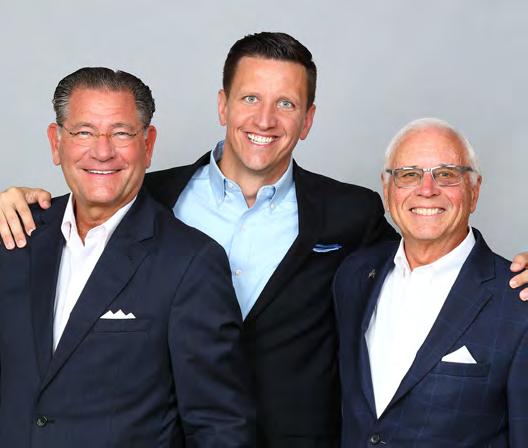
Gregg Patterson
Whitney Reid Pennell
Tom Wallace
Dave White
Cory Isom
Paul Jacobs
Christine Kane
Adrian Karapici
Kelli Larson
David Mackesey
Jacque Madison
Kristin Nichols
Zach Nicoludis
Bill O’Brien
Erik B. Peterson
Clay Pryor







Duncan Reno
Emad Saedi
Rick Snellinger
Brad D. Steele
Craig Stone
Michelle Tanzer
Christina Watson
Gordon Welch
Brian Whitlark
Frank Wolfe
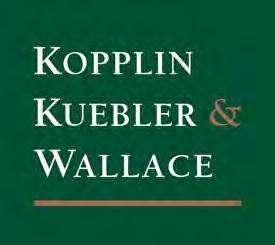













PUBLISHER’S PERSPECTIVE | 10

JOHN FORNARO
Staff loyalty, a cornerstone of private clubs, plays a pivotal role in the club’s success and the nurturing of a warm, home-away-fromhome atmosphere. These staffers have a deep understanding of the club’s culture, operations, member preferences and, of course, the member experience.

PHILIP G. NEWMAN
While attending the recent CMAA conference in Las Vegas, I caught up with a friend who’d just stepped into her first GM/ COO role at an HOA golf club. She expressed frustration over the lack of formal education for managers in this niche and highlighted the unique challenges HOA club leaders face, from complex legal compliance to managing passionate, resident-member interactions.

Introducing the ChauWALKqua, an evolution of the traditional Chautauqua experience designed for 2024 CMAA conference attendees to walk and reflect. This new format offers a unique opportunity for club professionals to bond, reflect, and engage in deep discussions about club culture and leadership, all while exploring the vibrant surroundings of the Mandalay Bay Resort.

RICK COYNE
Have you ever wondered what the odds are of successfully orchestrating a capital plan requiring a vote of the members? I have no empirical data to back up this supposition but based on my decades of experience, I’m guessing that less than 50 percent of capital improvement projects pass the first time, maybe not at all.
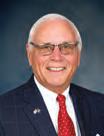


DICK KOPPLIN, KURT KUEBLER & TOM WALLACE
Producing flawless hospitality experiences consistently is complex. Planning for inevitable mistakes separates the best businesses from the average ones. Making every effort to win the customer back after an incident transcends the negative event, elevates the experience and solidifies member loyalty. This is a goal hospitality professionals strive to achieve.

WHITNEY REID PENNELL
The alarming rise of incivility in society underscores the vital role club and hospitality leaders play in restoring civility. By fostering a culture of respect and empathy through transparent communication, emotional intelligence training, and active engagement, every level of club leadership can contribute to a more positive and inclusive environment.

NANCY M. LEVENBURG
Before the 1970s, the term “work-life balance” didn’t exist. In fact, the idea of attempting to strike a balance between one’s career and family/personal life didn’t emerge until the 1980s when the Women’s Liberation Movement in the UK coined it to advocate for flexible work schedules and maternity leave for women. Today, work-life balance for younger employees means one thing: flexibility.

BONNIE J. KNUTSON
Joining a club is more than just submitting an application; it’s about making a memorable introduction that captures the essence of what your club offers. In this article, we explore the art of crafting an effective elevator pitch that hooks prospective members, communicates your club’s unique value, and inspires them to take the next step.

MELISSA
LOW
New regulations are reshaping the club industry, with the Department of Labor’s final rule on overtime eligibility set to take effect in July 2024 and OSHA’s clarification on employee representation during workplace inspections. Additionally, the article covers National Golf Day, highlighting the industry’s $102 billion economic impact and the advocacy efforts of club professionals on Capitol Hill.

After over two decades of innovation, Clubessential is an expert in serving private clubs. Superior customer and client support, continual investment in comprehensive technologies, and a spirit of respect for the lifestyle and brand of each club are hallmarks of Clubessential’s devotion to private clubs.
The thriving future of the private club industry is our destination, and you’re part of the journey. Join the Clubessential family and experience the excellence not only for yourself, but also for your members.
EXPERIENCE EXCELLENCE WITH CLUBESSENTIAL
“We were limited in using technology and needed a partner that would hold our hand through the entire process. Clubessential helped us plug in all our needs with solutions.”
GABRIELLE HART President, Hillendale Country Club
BORARDROOM

CLAY PRYOR INTERIORS......... 48-49
PHX ARCHITECTURE & CLUBDESIGN ASSOCIATES 50-51
DONNA FIGG DESIGN 52-53
HINT HARRIS INTERIORS 54-55
JBD JGA DESIGN AND ARCHITECTURE 56-57
LARSON NICHOLS 58-59
AM DESIGN GROUP 60
CHAMBERS 61
PEACOCK + LEWIS ARCHITECTS AND PLANNERS 62
STONE GROUP ARCHITECTS 63
XHIBTZ CONTRACT FURNISHINGS 64
ACTIVE URBAN LIFESTYLE 36 New York Athletic Club A Legacy of Olympian Excellence and Commitment By Heather Arias de Cordoba
THE FACTS OF WINE 38 A Pointed Assessment of the State of the Private Club Wine Program By Wes Hagen and Brandon Farrell
INDUSTRY UPDATES ............ 68-69 Kopplin Kuebler & Wallace
EXCELLENCE IN CLUB GOVERNANCE 99 Seating New Board Members in Your Club By
Henry DeLozier
DISTINGUISHED GOLF DESTINATIONS104 Big Cedar Lodge By Ron Banaszak
DISTINGUISHED CLUB SHOWCASE .. 105
Colonial Country Club By Ron Banaszak
THIS MUCH I KNOW FOR SURE 118 How to Move Forward When the Board Retreats By Dick
Kopplin
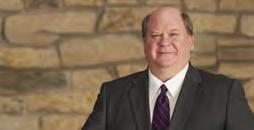
IN MEMORIAM ............ 70 Don Williams,
Jackie Carpenter




Intelligence By
Frank Wolfe
EXECUTIVE COMMITTEE
Must-Have for Your Club By
Gordon Welch


John G. Fornaro is the publisher/CEO of BoardRoom magazine, co-founder/CEO of Distinguished Clubs and the CEO of the Association of Private Club Directors (APCD). If you have comments on this article or suggestions for other topics, please contact John Fornaro at (949) 376-8889 or via email: johnf@apcd.com
Staff loyalty, a cornerstone of private clubs, plays a pivotal role in the club’s success and the nurturing of a warm, home-away-fromhome atmosphere.
And loyalty to long-term staff members can significantly impact member satisfaction, employee morale, operational efficiency and the club’s overall reputation.
Retaining long-term staff is essential because they bring consistency and quality of service. These staffers have a deep understanding of the club’s culture, operations, member preferences and, of course, the member experience.
On the other hand, what inspires long-term staff members to stay committed to their private club? Is it loyalty, job satisfaction, career advancement, relationships with club members, or ??? There are myriad reasons, as we’ll discover from the thoughts of four employees who have spent many years at their private club.

Jonathan Club, Los Angeles, CA, Distinguished Club with Iconic designation Matthew Allnatt, GM/COO
• Career Journey: Cesar Balcarcel began as a valet attendant at Jonathan Club in 1979 and rose to Director of Support Services by 1991.
• Club’s Impact: He was drawn to Jonathan Club’s prestige and the strong, family-oriented relationships between members and staff, which encouraged his growth within the organization.
• Personal Connections: Cesar values recognizing members and staff by name, which fosters a sense of respect and community.
• Work Environment: He emphasizes the club’s respect, fair treatment, excellent compensation, and great benefits, making Jonathan Club an attractive place to work.

Cesar emigrated from Guatemala to the United States in the 1970s and began his career as a valet attendant at Jonathan Club in March 1979. Over the years, he worked his way up and was appointed to his current position as Director of Support Services in 1991.
“At first, I was very excited to work at Jonathan Club because of its prestige and later embraced the unique family-oriented relationships built between members and employees. I was given the opportunity to grow and continue growing within the organization by club management over the years,” Balcarcel explained.
“Part of what makes the relationship so special is that I have accumulated a long list of member names over the years and can recognize them as they enter and exit the club. I cherish those opportunities where I can make a member feel special by calling them by their name as they enter with a guest, and you can see that they appreciate the acknowledgment.
“I also do this with many of our staff, so they know that I know who they are, and I respect them as a person, not just as an employee,” he added.
“If you want to work at a place where you are respected, treated fairly, compensated well with great benefits and life-long relationships, you definitely want to work at Jonathan Club.”
The 66-year-old Cesar is happily married to his wife, Sheila. He is the proud father of three sons and the grandfather of twin boys (7 years old).



RICK COYNE
Rick Coyne is founder and president of Club Mark Advisors. He can be reached via email: rcoyne@clubmark.com
Have you ever wondered what the odds are of successfully orchestrating a capital plan requiring a vote of the members?
I have no empirical data to back up this supposition but based on my decades of experience, I’m guessing that less than 50 percent of capital improvement projects pass the first time, maybe not at all. This statistic is likely worse for community-based clubs with common area projects.
I’m guessing again, but I doubt most members wait 20 years to do a major residential upgrade, renovation or replenishment. Within 20 years, many major club assets would be due for replacement, including greens, irrigation, heating, ventilation and air conditioning.
Carpet, flooring and some furniture, fixtures and equipment will need replenishment in less time. Most importantly, this doesn’t include the discretionary changes required to remain competitive and attractive. Failure to properly address depreciated assets costs your club in various ways.
Most informed club leaders see these realities, but mem bers are often a different story. Why? In my decades of strategic planning and consulting, I see it as insufficient communications, a lack of market research and data devel opment, and a resultant fear of creating panic.
Communication is critical. Don’t wait. Start talking about the realities of depreciating assets, competition, mainte nance and rising construction costs. Start well in advance of your building process. Build your story around realities. Some improvements cannot be delayed and cost more to maintain than to replace. Remaining competitive and sus taining values is critical for capital development and opera tional cash flow (property value for communities).
Be honest and transparent and share feedback in member forums. Summarize strategic planning minutes and post them on your website. Let the communication plan grow with the project. Be bold. Find spokespeople to appear in videos. Do
Be strategic in your thinking. Build trust and don’t make mistakes financially. Even with a well-planned and orchestrated voting process, remember that approximately 20 percent of your members will vote against the plan for no reason and 20 percent will likely vote for it because they love the club. Your delta is the 60 percent that needs to be convinced.
Maintenance expenses increase along with the risk of system failures and shutdowns. Not addressing cosmetics within the campus creates perception issues and an inability to compete and often results in a reduction of fees/value for membership.
With inflation and interest rates, the longer you wait, the higher the price and cost of borrowing. Assessments likewise increase the longer you wait. Allowing assets to degrade is often the beginning of the end and/or makes the cost of truly renovating almost impossible.
Many clubs used the increase in membership that resulted from the COVID-19 pandemic to spend tremendous amounts building around the new demand for social dining, golf training facilities and more resort-style amenities. It worked. Members see their club differently with a more resort atmosphere, creating a vacation lifestyle.
While low turnover retention is good, we are currently analyzing the low turnover and its effect on capital formation through initiation fee revenues or deposits.

it professionally with scripting and post-editing. Underlying all of your communication, make it important. Use multiple media channels, surveys, focus groups, town halls and fireside chats. When developing your strategic planning committee, build it with background and experience in planning. Avoid participants with agendas and biases.
Avoid small projects that will likely require demolition with a future master plan. Be strategic in your thinking. Don’t make mistakes financially and build trust. Even with a wellplanned and orchestrated voting process, remember that approximately 20 percent of your members will vote against the plan for no reason and 20 percent will likely vote for it because they love the club. Your delta is the 60 percent that needs to be convinced.
For over five decades, these basic principles have guided me well; however, it takes a team, a strategy and a wellthought-out, transparent and honest communication plan to resonate and make sense to leadership and members. BR

Start your search with the only team you’ll need! Let us connect you with the most talented and qualified industry professionals to manage your operation. pgaexecusearch.com


Nancy Levenburg, PhD, is professor emerita in Management from the Seidman College of Business at Grand Valley State University in Grand Rapids, MI. She has published hundreds of articles in business and professional journals, and has assisted over 200 organizations with strategic planning, marketing strategy and improving operations. She is the president of Edgewater Consulting and a member of Spring Lake Country Club in Spring Lake, MI. For more information, contact her at: levenbun@gvsu.edu or (616) 821-5678.
“Never get so busy making a living that you forget to make a life.”
– Dolly Parton
“Hard work never killed anybody, but why take a chance?”
– Edgar Bergen
My dad was born in 1921. He was a member of the Greatest Generation – those born between 1901 and 1924 and who “came of age during the Great Depression and the Second World War and went on to build modern America – men and women whose everyday lives of duty, honor, achievement, and courage gave us the world we have today.” That’s a quote from Tom Brokaw’s 1998 book, The Greatest Generation. Members of the Greatest Generation have been described as driven, patriotic and self-sacrificial team players. From them, Baby Boomers (like me) were taught the importance of:
• Taking personal responsibility for yourself and your family.
• Humility.
• Saving money. Among Depression-era families, being frugal was the discipline of the day and every last penny counted. For them, it was necessary simply to survive. For our family, it meant cooking nearly everything “from scratch.”
• Faithful commitment to work and family. They displayed dedication and loyalty to their employers, often staying with one company for their entire careers.
• Strong work ethic. The Greatest Generation valued working hard and working long hours.
Baby Boomers – those born between 1946 and 1964 –followed in their footsteps, displaying many of the same characteristics as their parents. Yet today, Baby Boomers are retiring at a faster rate than ever before. Reportedly, nearly 10,000 Baby Boomers turn 65 every day and by 2030, all Baby Boomers will be over retirement age.
So, who will step into Baby Boomers’ leadership shoes as they head off to the pickleball courts? Generation X (those born between 1965 and 1980), Millennials (or Gen Yers, born between the early 1980s and 1996) and Generation Z (born between 1997 and 2010).
These groups possess different interests, values and priorities than their parents and grandparents. So it’s important that organizations recognize these differences and prepare for (and embrace!) a new multigenerational work environment. Because as Bob Dylan sang, “The times they are a-changin.”
Before the 1970s, the term “work-life balance” didn’t exist. In fact, the idea of attempting to strike a balance between one’s career and family/personal life didn’t emerge until the 1980s when the Women’s Liberation Movement in the UK coined it to advocate for flexible work schedules and maternity leave for women.
Today, work-life balance for younger employees (Millennials and Gen Zers) means one thing: flexibility. They want to work from home, and why not? They’ve grown up with technology at their fingertips. They want flexible, varying daytime work hours. And they want more time off to nurture their physical, mental and emotional health. They want extended maternity/paternity time and plenty of vacation time. They see all this as necessary prerequisites to work.
In short, they’re more interested in finding a career path that will support their “lifestyle” than the reverse. They want it all.
This means that today’s employers must become increasingly sensitive to understanding work-life balance in a multigenerational, multicultural work environment … and accommodate diverse needs if they seek to support and encourage all employees. BR
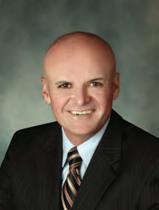
Philip G. Newman, CPA, CIA, CGFM is a partner with RSM US LLP. He can be reached via email: philip.newman@rsmus.com
Walking the halls at the most recent Club Management Association of America world conference in Las Vegas, I ran into a longtime friend who had recently taken her first position as general manager/chief operating officer at a bundled community golf club, where club amenities reside within the legal structure of a homeowners association.
Despite being a seasoned manager, she was lamenting the insufficient formal education available for managers wishing to enter that part of the club industry. She also appeared frustrated at what she perceived as a limited awareness of the unique challenges and issues HOA club managers face. While GM/COOs need to understand the financial, tax, legal and operational differences between a bundled community club and a traditional member-owned club, two nuanced challenges stand alone.
Most significant issues and decisions for a HOA require legal review for compliance, with governing documents and state statutes. Often, the GM/COO must be familiar with a large body of knowledge, and some states have licensing requirements for compensated individuals who perform roles requiring specialized knowledge, judgment and managerial skill.
State law may also dictate how board elections are administered, board meetings are announced, conducted and reported on and what documents members can demand to inspect. State statutes make open board meetings the norm in many HOA communities. This means that many topics discussed privately in a traditional club board meeting must be dealt with in front of all HOA members who attend.
Board members and the GM/COO must also ensure what constitutes a board meeting under state law. This can lead to some awkward tee time scheduling to ensure board members are separated. Consequently, a good working relationship with an experienced HOA attorney should also be a priority for an HOA GM/COO.
While we appreciate how enthusiastic members can be about their club and how they often have no qualms voicing their opinions at town hall meetings or on the club’s social media pages, we would argue that passions at HOA clubs run even higher. Why? Because club members are also residents, club amenities become a de facto extension of the member home. Factor in concerns about maintaining and increasing home val-
ues and it’s easy to understand why emotions and tempers at an HOA club can often surpass those at traditional clubs.
The community and societal pressures from the COVID-19 era and the general decline in political civility nationally have also intensified residents’ feelings in many bundled club com munities. Budgets and financial results are challenged more aggressively than ever, and trust levels between members, management and the board can deteriorate rapidly as the homeowners members try to balance their personal financial challenges with those of their community.
Having placed many GM/COOs at HOA clubs around the country, Kurt Kuebler and Tom Wallace of Kopplin Kuebler & Wallace are uniquely qualified to answer the ultimate question many executives ask: Are homeowners associations/commu nity clubs more challenging to manage?
“Yes! The diverse stakeholders, the complex governance structures demand a higher level of conflict-resolution skills. Financial management can be more complex and time-consum ing. Maintenance and upkeep of the property is often a much larger job with a lot of complexity,” Kuebler and Wallace said.
“Communication is challenging in all clubs, but effective communication is crucial in HOAs and community clubs to keep stakeholders informed, address concerns and foster a sense of community. However, managing communication channels and ensuring timely and clear communication can be difficult, especially in large communities.
“You just have to be ready for the tremendous, upped in volvement with members because they live there and have a much more focused interest in everything. That is the biggest challenge; if you don’t have great relationship skills (versus transactional expertise), you’ll fail or struggle in the HOA world.”
These observations from industry leaders make one won der why a GM/COO would ever enter the HOA side of the club world.
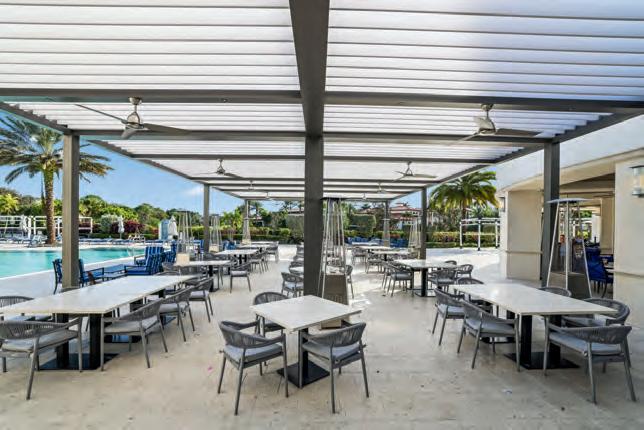

Kuebler and Wallace have the perfect answer: “Ultimately, managing HOA clubs demands a strong leader. This leader must possess a unique blend of organizational skills, interpersonal skills, knowledge of legal and financial matters and, above all, a deep commitment to serving the best interests of the community and club. It’s a challenging role, but one that can be immensely rewarding for those who are inspired to take it on. Great club leaders find a way to adapt, learn and thrive as GM/COOs of HOA clubs.” BR




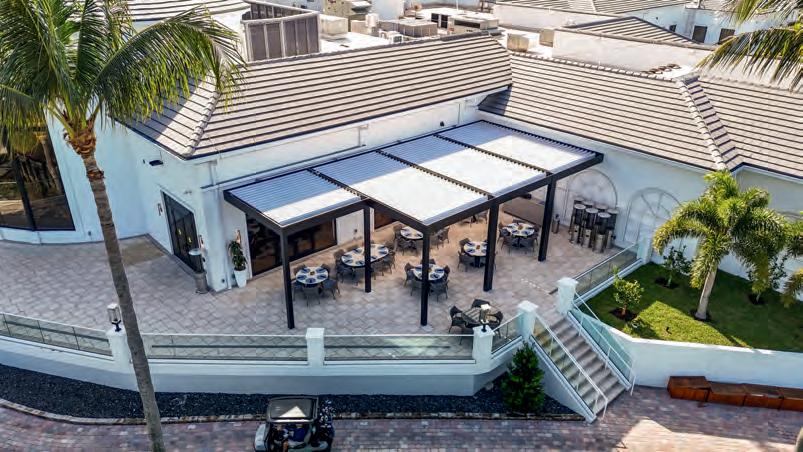


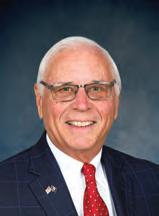
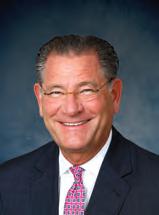
Hospitality is an imperfect business and while you can plan to deliver the highest levels of product and service consistently, even the world’s best service providers have breakdowns.
Planning for inevitable mistakes separates the best businesses from the average ones. Making every effort to win the customer back after an incident transcends the negative event, elevates the experience and solidifies member loyalty. This is a goal hospitality professionals strive to achieve.
Producing flawless hospitality experiences consistently is complex. Take serving a steak, for example. While a club can have the highest standards for meat quality, selection, preparation and service, numerous factors come into play, each of which can dramatically alter the outcome:
• What did the cow eat?
• How was the meat processed/packaged?
• How was it stored and aged?
• Who prepared the meat?
• Who cooked it?
• Who ordered it and what is their version of medium rare?
• How long did it sit in the kitchen window waiting to be delivered to the table?
• Who prepared the sauce and sides that accompanied the steak?
Even if all of the above are impeccably answered and the steak is perfection on a plate headed out of the kitchen for delivery to the table, the server could slip and send the dish flying into the air. The steak in all its glory ends up a monstrosity on the dining room floor. Now the 18-minute ticket time has turned into a 36-minute ticket time, and the member is furious.
You can do everything right: hire the right people, train them well, have the highest standards for quality and preparation, develop your people with ongoing education, evaluate your service standards regularly, and yet things still happen. It’s a human business with endless variables that result in an experience that tends to be entirely subjective.
We all want to surprise and delight our members on the front end, but service recovery is how to win loyalty. Recognize that no matter how good you may be, mistakes will happen. That’s why developing and implementing a service recovery plan is critical. Have the standard to reconcile the situation, plus one. This means you fix the problem and more.
For example, The Club at Mediterra designates an “Oops Plate” every shift. The chef identifies one or two small dishes, such as a salad, appetizer or intermezzo, and lists them on the whiteboard in the kitchen. Should an incident happen where a meal was cooked improperly or ordered incorrectly, the server can request and deliver the most appropriate “Oops Plate” to the guest.
The server explains that the item is for the guest to enjoy while the meal is being corrected and apologizes for the incon-
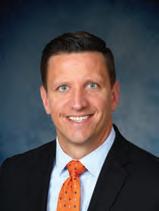
venience. Once the meal has been rectified and enjoyed, the server brings a complimentary plate of small indulgence desserts to the table before offering dessert (the plus one). When a problem occurs, the staff person notifies the manager on duty and records what happened, with the member’s name, the date and time on the Winning Them Back List.
The Winning Them Back List lives on the POS, making it visible and accessible to employees across all departments. The list communicates incidents that occur so employees are empowered to extend extra time and effort to ensure a positive experience when that member returns to the club. The Winning Them Back List exists for all club areas, not just food and beverage, and is an exceptional resource for continuing service recovery for weeks after an incident.
As the service industry struggles to find its footing today with a shortage of applicants, increased turnover and an ongoing need for training and development, hiring the right people becomes increasingly more important. Solution-oriented, innovative thinkers who can adapt to problems in real time have ideal qualities that should be drawn out of candidates during the hiring process. These soft skills can be developed and enhanced in those who have them but are harder to train and instill in those who don’t.
Service recovery also requires learning from mistakes. Analyzing what happened and why is a powerful approach to ensuring the incident doesn’t happen again. Having an internal process to eliminate recurring mistakes and update training and development to eradicate the likelihood of future occurrences is a necessary tactic.
Communication may be the most essential ingredient in service recovery. The best-intended processes can fall flat when the communication loop isn’t closed completely. When something goes wrong, the manager(s) should be notified about what happened and why, and the member should be informed that the mistake is being addressed immediately.
Empowering employees to take ownership of a problem can be a game-changer in service recovery. Members who are upset do not want to hear, “My manager or someone else will get back to you soon.” They want the situation solved immediately. Ensuring employees know the importance of following up with members, sometimes more than once, instills confidence in members that they are important and a solution is being worked on.
While you can prepare, plan and predict as much as possible to eliminate mistakes, they are inevitable. When organizations transition from sweeping mistakes under the rug to looking at every glitch as an opportunity to strengthen the relationship, build trust and instill loyalty, magic happens. That is when we achieve a powerful recovery that surprises and delights our members. BR





Golf’s journey in Morocco began over a century ago with the establishment of the first golf course in Tangier in 1914.
This North African kingdom, known for its diverse geography, rich culinary heritage and vibrant cultural tapestry, offers a unique blend of experiences, making it an exceptional destination for golf enthusiasts. Morocco’s landscape, from the Mediterranean and Atlantic coastlines to the Sahara Desert and mountainous terrains, provides a stunning backdrop for its golf courses.
The nation’s culinary scene, influenced by French and Spanish traditions and its rich cultural heritage—a fusion of Arab, Berber, and European influences—further enhance its allure. World-renowned cities like Casablanca, Marrakech and Fez add to Morocco’s charm and appeal as a golfing destination.
Over the years, many fantastic golf courses have been built on the coast, in the mountains and on the flatlands of Morocco. Today, there are more than 40 golf courses, which led to the creation of the Royal Moroccan Golf Federation (frag.ma) in 1960.
The vision for the significant development of the game of golf in Morocco launched in 2019. Led by His Royal Highness Prince Moulay Rachid, president of the Royal Moroccan Golf Federation and the Hassan II Golf Trophy Association, it is the result of a process of reflection, exchange and consultation with the various golf stakeholders. The Federation’s primary goal is to increase the number of players and to develop champions capable of competing on the major circuits.
We are proud to announce the following golf courses in Morocco have earned the prestigious Distinguished Golf Destination designation. And we’ll review my recent site visits to these six outstanding Moroccan golf courses.
Royal Golf Dar Es Salam, Iconic status
Golf Tazegzout, Elite status
Royal Golf El Jadida, Exceptional status
Royal Golf Fès, Exceptional status
Golf Oued Fès, Exceptional status
Golf Les Dunes, Exceptional status

For golf resorts, semi-private, daily fee and public golf courses that operate at the highest standards, BoardRoom magazine’s Distinguished Golf Destination designation program uses a specific rating system that recognizes the golf course, the facility and its management and staff based on a proprietary criteria validation process that distills and measures an outstanding golf experience.
Ideally placed in the heart of 1,000 acres of flowers, lakes and a cork oak forest, the Royal Golf Dar Es Salam, designed by Robert Trent Jones, Sr., is a wonder of its kind. Living up to its meaning, “Place of Peace,” this golf course is perfectly manicured with a landscape of incomparable beauty.
Golfers and art lovers will undeniably find the magic of one of the most beautiful golf courses in the world in this place – only 15 minutes away from the center of Rabat, the capital of the Kingdom of Morocco.
In 1969, King Hassan II of Morocco asked Robert Trent Jones, Sr. to design a golf course near his summer palace in Rabat, the nation’s capital. The King was an enthusiastic golf fanatic, starting in 1968. Plunging into the game, he brought

Claude Harmon to Morocco for weeks of lessons. During their first visit, the King told Jones he wanted him to build the “most magnificent” golf courses the world had ever seen.
Madaëf Golfs, led by general manager Laila Bensouda, pictured right, is a 100 percent subsidiary of Madaëf (the leading Moroccan tourism experts), the largest Moroccan golf course management company. Madaëf Golfs manages the first network of nine golf courses in Morocco and five of the newest Distinguished Golf Destinations

Madaëf Golfs has established itself as the leader in golf course management in Morocco, dedicated to innovative golfer experiences, access to the latest digital technologies, excellent playing surfaces, as well as being environmental leaders. It is dedicated to quality golf and the entire golfer’s experience, including lodging. The company manages luxurious hotels, including two that I had the pleasure of staying in, including the Hyatt Place Taghazout and the Marriott Rabat Hotel. Both hotels feature outstanding amenities and are reasonably priced.

Set in the heart of the Taghazout Bay resort, the Tazegzout Golf Course, a 7,360-yard par 72, offers the discriminating golfer several spectacular holes set amidst Argan trees, with the stunning Atlantic Ocean as a backdrop offering breathtaking views. Fostering a sustainable development approach, the Tazegzout golf course is based on environmentally friendly products and uses reclaimed water for irrigation.
This is a golf course not to be missed, because the golfer becomes connected to the surrounding nature in a fantastic way. The routing meanders through the natural Argan vegetation, rising to a crescendo on the final three holes. Playing
over two deep rocky ravines and along a 262-foot cliff edge, these finishing holes will test every level of golfer.
Designed by Kyle Phillips, Tazegzout Golf Course is laid out on 188 acres of land perched 265 feet above sea level. From its elevated position, the clubhouse commands a dramatic cliff-top setting, stunning views over the magnificent bay of Taghazout, and excellent views of the 18th green. The 150-room Hyatt Place Taghazout Bay Hotel, located adjacent to the Golf Course, offers first-class accommodation for golf and spa breaks.
“Visitors to Tazegzout Golf will appreciate the rhythm of the course!” Kyle Phillips.

Opened in 1993, this magnificent 6,808-yard Par 72 ocean course sneaks through a eucalyptus forest enhanced by the sweet smell of acacia and the splendor of araucarias. Located along the Atlantic coast, this superb course, designed by Cabell Robinson, is undoubtedly one of Morocco’s jewels. Holes 16 to 18 border the Atlantic Ocean as a links course with amazing views. The pro shop is something to visit, offering a variety of golfers’ apparel and local handmade items, a perfect gift for a loved one.

A few minutes from the city center of Fez, 2,300 feet above sea level, Le Royal Golf Fez, a 7,154-yard par 72, is in the heart of a vast olive grove with stunning views of the peaks of the Middle Atlas. Designed by Cabell B. Robinson, the hilly terrain captivates the golfer with its rustic charm and stunning view of the peaks of the Middle Atlas. The hilly terrain is lined with lakes and provides a unique experience for experienced golfers looking for stimulation and excitement.

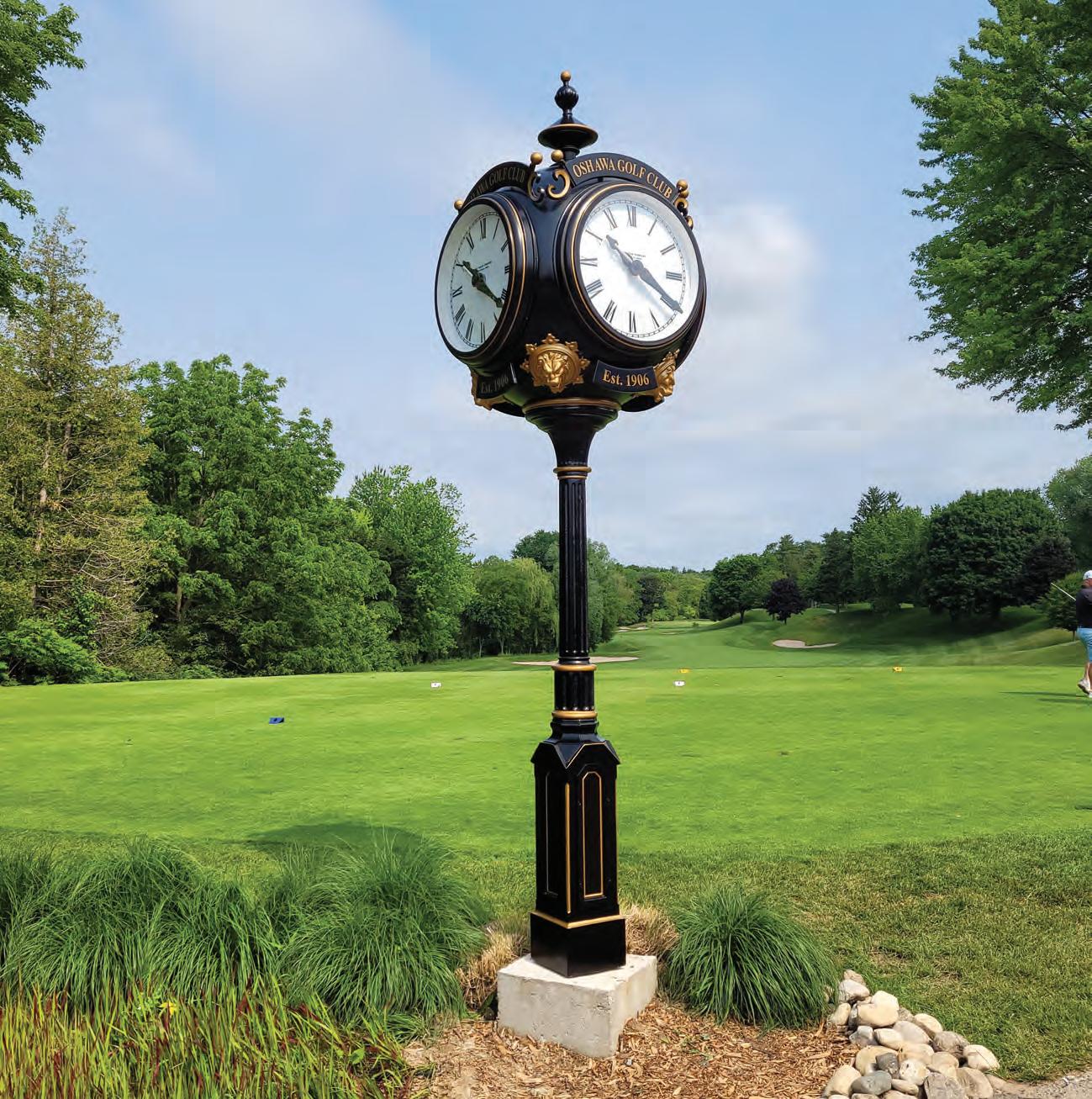


Created in 1991, this internationally renowned 27-hole course covers 250 acres on superb hilly terrain planted with eucalyptus, broom, tamarisk and palm trees. Four beautiful lakes surround the course, enhancing its exceptional character. The 27-hole par 36 (10,243 yards) is among the most remarkable golfing experiences on the African continent.
The talented designer Cabell B. Robinson, a disciple of Robert Trent Jones, imagined beautiful challenges on the three nine holes of this course, which will delight beginners and
experienced golfers alike. (Eucalyptus 3416 yards, Tamaris 3,472 yards and Oued 3,355 yards).
Benefiting from Agadir’s oceanic climate, which has mild winters and the coolest summer seasons in Morocco, Golf Les Dunes is one of the rare golfing destinations worthy of yearround play.
During the site visit, this fantastic golf course was undergoing a clubhouse renovation. Temporary clubhouse facilities were available, and the property will be rated again after the renovation is completed.

Opened in 2012, Oued Fez Golf is a creation of Jonathan Gaunt, a famous Scottish golf course architect of international renown. The golfer will be impressed by its magnificent 6,827-yard par 72, elegantly combining wooded and meadow areas. The course is known for its fairways winding between the woods and along a large ravine, where lagoons and water features have been placed on both sides to offer golfers a unique and challenging playing experience.
This golf course is a green oasis designed to respect and care for the environment in which it is located. The lakes serve as reservoirs for rainwater for irrigation. The course is
outlined by eucalyptus trees, palm trees and Aleppo pines, serving as a reminder of this eco-responsible golf course that puts nature at the heart of its activity.
During my travels in Morocco, I was most impressed by the warmth and hospitality of the citizens, their love for their country and their King, and my safety and security. Morocco is truly an incredible country, full of amazingly reasonably priced golf, food and accommodations.
All of us at Distinguished Golf Destinations look forward to observing and reporting on the growth of the game of golf in Morocco and the federation’s achievement of its goal of fostering the game and creating some of the world’s best golfers. BR
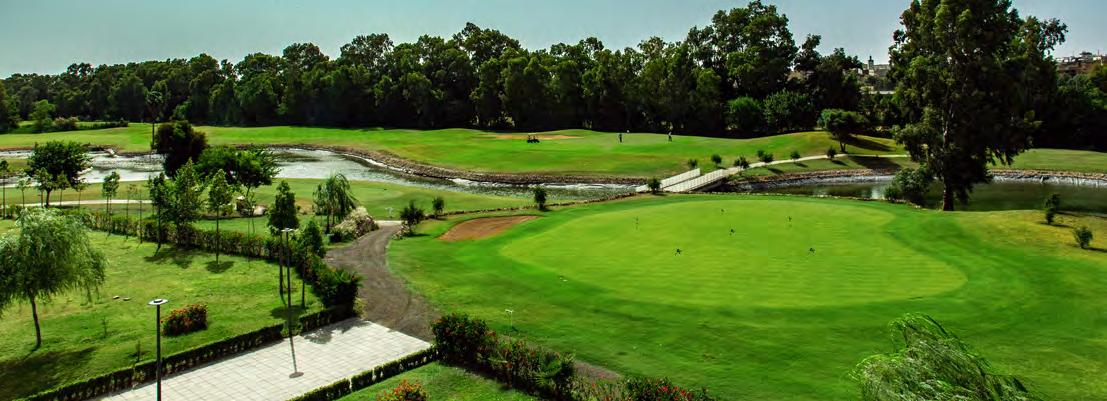
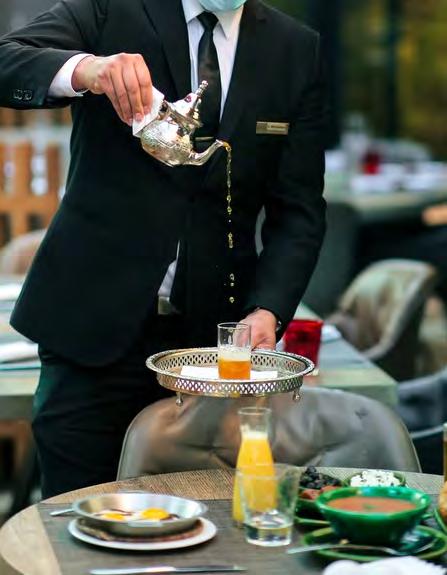
From pre-hire to retire, ClubPay streamlines operations with a custom suite of outsourced Payroll and HR solutions to meet your club management needs.


Colby Spooner, Account Manager

RITA BARETTO
Rita Barreto is an engaging, motivational speaker on the national stage. She also has 30-plus years as an award-winning human resource executive for a Fortune 500 company. She offers customized, industry-specific consulting services to navigate change and build an agile and thriving company culture. Don’t hesitate to visit toptierleadership.com and then call Rita to book a free 20-minute consultation.
The best estimate is that the United States has close to 9,000 golf and country clubs.
Add in about 1,000 boating and yacht clubs and then, of course, we can’t forget the 5,000 hunting and fishing clubs, bridge clubs, dance clubs – and the list goes on.
Humans are social animals who desire to spend time with others who share common interests, goals and lifestyle choices. Social interaction, friendship, like-minded sporting competition, additional amenities and a sense of belonging all come into play.
While every club has a unique history and culture, the club experience is ultimately a key factor in retaining members. Club managers strive to provide exceptional experiences from the moment you drive through the gate until the last cocktail is served at night.
At the club, you will find manicured lawns, lush landscaping, an impeccable clubhouse, plush locker rooms, sparkling pools, a fitness room, welcoming retail shops and wonderful dining.
The elite clubs know that their secret sauce is their professional staff and the high standards they provide. It’s the personal touch of well-trained, knowledgeable employees who interact at the highest level with members, treating them like family. These are the club’s superstars, with egos in check. Their presence makes members feel like they belong and are essential; it’s a feeling of coming home. “My home club” has a nice ring, won’t you agree?
You expect staff turnover at a public golf course, the neighborhood pub and the municipal tennis court. You can’t get a game; it’s too bad. Poor member-guest turnout, maybe next year. Your new clubs are still back ordered; what the hell?
Today’s club manager needs superb leadership and communication skills to attract, engage and retain top professional talent. The hospitality industry has become increasingly competitive. Club managers need to provide their top professionals with multiple avenues of growth opportunities
How do you attract the professional talent that will set your club apart? Sure, compensation is a factor, but these high achievers need much more than that. From the golf professionals to the spa director, the tennis pro, the food
and beverage manager, and even the locker room attendants, they need to know they are a vital part of the team.
A high-performance team is valued, trained, nurtured and supported with staffing assistants, resources, technology, travel perks, bonuses and a hefty dose of appreciation. Employee expectations have evolved and sourcing quality candidates is time-consuming and costly to the bottom line, causing disruption and lower productivity. Change often affects morale when a beloved leader departs.
CEOs must be committed to a culture of mutual respect, engagement, inspiration, recognition, health and wellness, and work-life integration. Top-notch talent and people are not just club assets but the heart of the club’s success. Elevate your club’s level of employee satisfaction with a few simple tips:
• Collectively develop an inspiring vision
• Set clear goals; high performers excel when there is a challenge
• Learn about different communication styles and customize
• Be proactive and conduct “stay” interviews rather than wait and find you are doing an exit
• Adopt the mindset that training and development is an investment, not a cost
• Begin an employee experience with a robust onboarding process
• Ensure employees have the tools to do their jobs
• Build a culture of accountability
• Be deliberate about cultivating a winning culture
• Never miss an opportunity to provide recognition
• Give a shout-out at the next managers’ meeting
• Acknowledge achievement in the club newsletter
• Post a note of appreciation on the bulletin board
• Reimagine outdated policies and procedures
• Express admiration at the member-guest awards celebration
• Gift a restaurant dining certificate to demonstrate high regard for a job well done.
The bottom line is that you need to be proactive in becoming THE place to work. If you plan for it and execute your plan, you will be the sought-after employer. BR




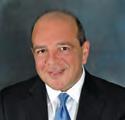








GSI Executive Search has been serving the private club industry for over 25 years, providing a wide range of executive search and placement services. Our mission is to contribute to our clients’ growth and stability and to foster the career goals of our candidates. We will always conduct our business with a high degree of integrity and ethics. GSI services clients and candidates throughout the U.S.
GSI PRINCIPALS ARE ESTABLISHED, RESPECTED & highly skilled 12-24 month guarantee of collective private club operations experience competitive fee structure

RONALD F. CICHY
Dr. Ronald F. Cichy, O.M. is professor emeritus, Michigan State University. He can be reached via email: cichy@bus.msu.edu
Starting in 1968 while attending Michigan State University, I have experienced hero and mentor relationships for over 50 years with College Brother Bill, College Brother Louie, College Brother Giles and College Brother Craig.
Here are selected thoughts and feelings of our times together.
Heroes: These college brothers have kind hearts individually and together. They are my real heroes. A kind heart is a soft, pliable and moldable heart. Our hearts are molded by the people we hang out with; our heroes.
H: Some are looking for heroes; we have found college brothers. Heroes are welcoming, friendly, warm, kind and generous. Heroes are humble. Heroes are more than role models. They are those you want to emulate. To be like. And to be with. We are in harmony with one another.
E: Heroes empower others enthusiastically. Coach others. Encourage and inspire them to be emboldened and energized. My college brothers teach and encourage each of us to endure.
R: Readers are leaders. They are students who are bibliophiles. They are bookworms. They like music, books and podcasts. They learn over a lifetime in a variety of ways.
O: Other focused. Indicates the way to relationships with others, especially college brothers, who lead to the truth.
Real hero assessment: Underline Yes or No as each statement applies to you.
Yes No My heart is humble.
Yes No I have a soft, pliable heart.
Yes No My heart is kind and moldable.
Yes No I have welcoming, friendly, warm, kind and generous heroes who I emulate.
Yes No To be like my heroes is a SMARTER goal.
Yes No My heroes empower others enthusiastically.
Yes No Readers are leaders.
Yes No My heroes are other focused.
Yes No My heroes help develop others.
Yes No My heroes encourage and inspire me to be emboldened and energized.
Hero assessment scoring. Yes = 1 each; 10 total
What is your total?
TOTAL = 1 TO 4
Reread this story. Retake the hero assessment. Where can you improve your results? Choose one or two on which to focus. When you achieve the desired outcomes, move to the next.
TOTAL = 5 TO 8
You can improve your connections with heroes and be a brother to others. Practice to make it permanent. Review the ideas presented in this story.
Total = 9 to 10
You have identified real heroes and are doing what it takes to learn from them. You are becoming a brother others respect.
Real heroes: A hero is a brother mentor, someone you can look up to. My real heroes are BroBill, BroLouie, BroG and BroCraig.
R = R stands for being resilient. And for relationships and recognition. Brothers build relationships as colleagues, family and friends in different networks. Relationships are based on respect for each other. Recognize individuals and remind them that they are valuable and valued. They are appreciated. Recognize those who make SMARTER (Specific, Measurable, Attainable, Realistically high, Timely, Evaluate, Reevaluate) goals come to life.
E = Energy powers movement. Energetic in maintaining personal health. Show a passion about working and being. Be excited and show it because you love what you are doing and who you are being. Energetic heroes create a positive vibe for self and others. The energy vibe inspires.
A = A is appreciation, attitude and authentic. Heroes know when and how to show appreciation to others. People who are appreciated are more willing to work diligently; they care more about the results they are experiencing with others. Attitude is everything. A positive attitude defines the direction. Authentic college brothers are synchronized in actions and words.
L = L means listen. Listen to the college brothers, what they say and what they mean. Ask questions and listen. People feel valued when they are heard and know they are being understood. Listen and learn from college brothers. Encourage everyone’s voice and listen. Create a legacy together.
A brother is sincere and humble; he is humility personified. Sincerity develops as the brother exposes his real heart to others. A brother is there for you.
A brother places your needs, wants, expectations, desires and big dreams ahead of his. The focus is on the other. Being there for the other. Helping others. Being rather than doing. BR


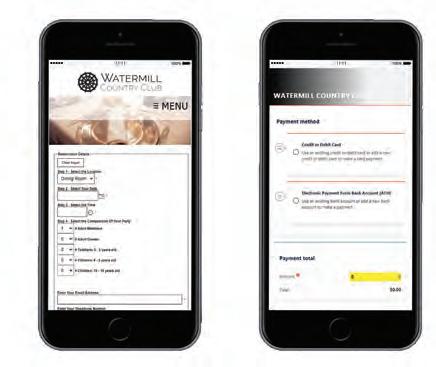



Does your board of governors employ the consent agenda protocol at its meetings?
If not, consider it. If so, congratulations, you are ahead of many.


Like making a good first impression or starting your day on the right foot, the consent agenda is the most effective way to begin a productive board meeting. This productivity is important for obvious reasons and powerful for less obvious ones.
The productive reasons come first, like saving time and energy while avoiding unfocused and meandering conversations. Smart indeed … but enough on that.
The power lies in the less obvious. The consent agenda protocol creates an environment where everyone must be prepared before the meeting. Here are a few examples:
• The responsibility to prepare a quality agenda and board packet is in the hands of those most qualified to complete the task. In most clubs, the professional manager and the president prepare the agenda. Knowing that the consent agenda protocol is used, the bar is high on all elements of board meeting preparation.
• Studying the meeting materials and preparation become the responsibility of all governors. The governor who prepares and is ready to contribute becomes apparent. Those less prepared face the age-old dilemma of “staying silent and thought a fool, or speaking up and removing all doubt.” The less prepared are unlikely to repeat the same mistake and are encouraged to be contributors in the future.
• The administrative portion of the meeting is separate from the substantive. This delineation separates the tactical from the strategic. It naturally follows that more time moves to important discussions promptly, which respects the valuable time volunteers commit to their club and facilitates decisions that advance the club’s interests in meaningful ways.
Once a standard governance practice, it seamlessly becomes another aspect of club excellence.
Your most effective volunteer leaders will appreciate the power of the consent agenda. After all, the most effective leaders are central to the club’s success.
Consent agenda best practices:
• The consent agenda is the first item on the agenda
• Consent agenda items require no discussion
• A formal motion is required to approve consent agenda items.
Examples of items to include on the consent agenda are minutes, committee reports, management reports and general correspondence (moving items to the regular agenda requires a motion and majority support).
Note: The consent agenda for high-functioning boards, with established trust, often will include membership approvals and financial reports. An aspirational item if your club is not ready.
Frank Cordeiro, CCM, is the chief operating officer of Colonial Country Club, Fort Worth, TX. He can be reached via email: fcordeiro@colonialfw.com
David Mackesey, Diablo Country Club president (2013-2015), club historian and retired president, The Wine Group Inc.

“Working with Gecko Hospitality was a refreshing experience. We received vetted quality candidates within a few short days of signing the contract.”
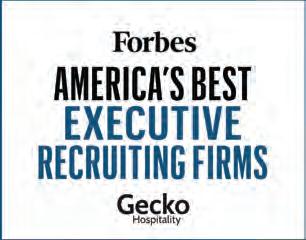
Are you searching for exceptional leaders to steer your private club towards unparalleled success? Look no further! Gecko Hospitality, named by Forbes Magazine as one of ‘America’s Best Executive Recruiting Firms’, specializes in identifying and securing top-tier management talent tailored to your unique needs.
Let Gecko be your trusted and experienced hiring partner.
Connecting people and changing lives, one career at a time.®
Recruiting all levels for the following positions for your club:
Controller
General Manager
COO Chief Engineer
Club Manager Director of Food & Beverage
Executive Chef
Sous Chef

Bill O’Brien is senior vice president of Operations for Troon. He can be reached at bobrien@troon.com.
I spent several hours in the emergency room recently (it’s all good … in fact, from a health perspective, I was fortunate that it was patently unremarkable).
In the end, it was anything but boring, and the overall experience far outweighed the waiting. Staged in a hallway near a compact space where doctors and nurses responded to arrivals and pages, my front-row seat to what the team of professionals accomplished over many hours was a classroom to behold. It will stay with me for a long time.
Eventually, I realized that the leadership and teamwork I witnessed in the ER can be applied to various contexts, including the world within a private club.
What an ecosystem of doctors, nurses, technicians, assistants, first responders, security, transportation folks, and administrators. Their precisely coordinated efforts were aligned with purpose and intent the entire time.
Emergency room team members have specific roles but collaborate to address complex medical issues. Similarly, private club employees should clearly understand their roles and be willing to collaborate across departments to effectively and efficiently meet members’ needs.
No one sat. Nobody was on the phone or emailing. No calls were made without headphones (except for the patient in the room adjacent to me calling for his ride). There were no computers to hide behind, only those used to track patient logistics. Brevity underscored every interaction – both in words and actions.
In the emergency room, communication is crucial to patient care. This involves a concise yet comprehensive and ongoing exchange of information among healthcare professionals to ensure swift and accurate decision-making. We may not save lives in a private club, but clear communication among the staff is essential for smooth operations, timely service and a positive member experience.
Triage … just, wow. In the ER, healthcare professionals and triage systems prioritize and control access based on the severity of medical conditions presented.
What a great filter for addressing the most important matters first. The criteria, process and shared understanding of what to solve first are on display despite the chaos and distractions. And all of it is deliberately executed with poise and composure.
Although it may happen occasionally, as a patient I did not hear one loud voice or notice any cross looks within the micro-community of professionals. When this behavior is translated to private clubs, the staff can be more adaptable and flexible to better respond to member requests, changing preferences and unexpected events.
Upon further inspection, “hospital” means more than I had originally thought. From Google, I learned that the word is derived from “hospes,” a Latin word meaning stranger or foreigner – a guest. Another noun derived from this is “hospitum,” which has come to signify hospitality and the relation between the guest and the individual or space providing shelter. In a private club industry devoted to the service of others with passion, commitment, roles and duties, how many know this fascinating root of the word?
Comparing an emergency room to a private club might seem unconventional. Yet, while the services and amenities differ vastly, both places focus on catering to the needs of people in different ways.
ER teams must demonstrate empathy and emotional intelligence when interacting with patients and their families during challenging times.
Private club employees who empathize with members’ needs and emotions can build stronger relationships and deliver personalized service.
By applying the lessons learned in the emergency room to private clubs, we’re better able to create a culture of excellence, collaboration and member satisfaction – without the medical emergency. BR
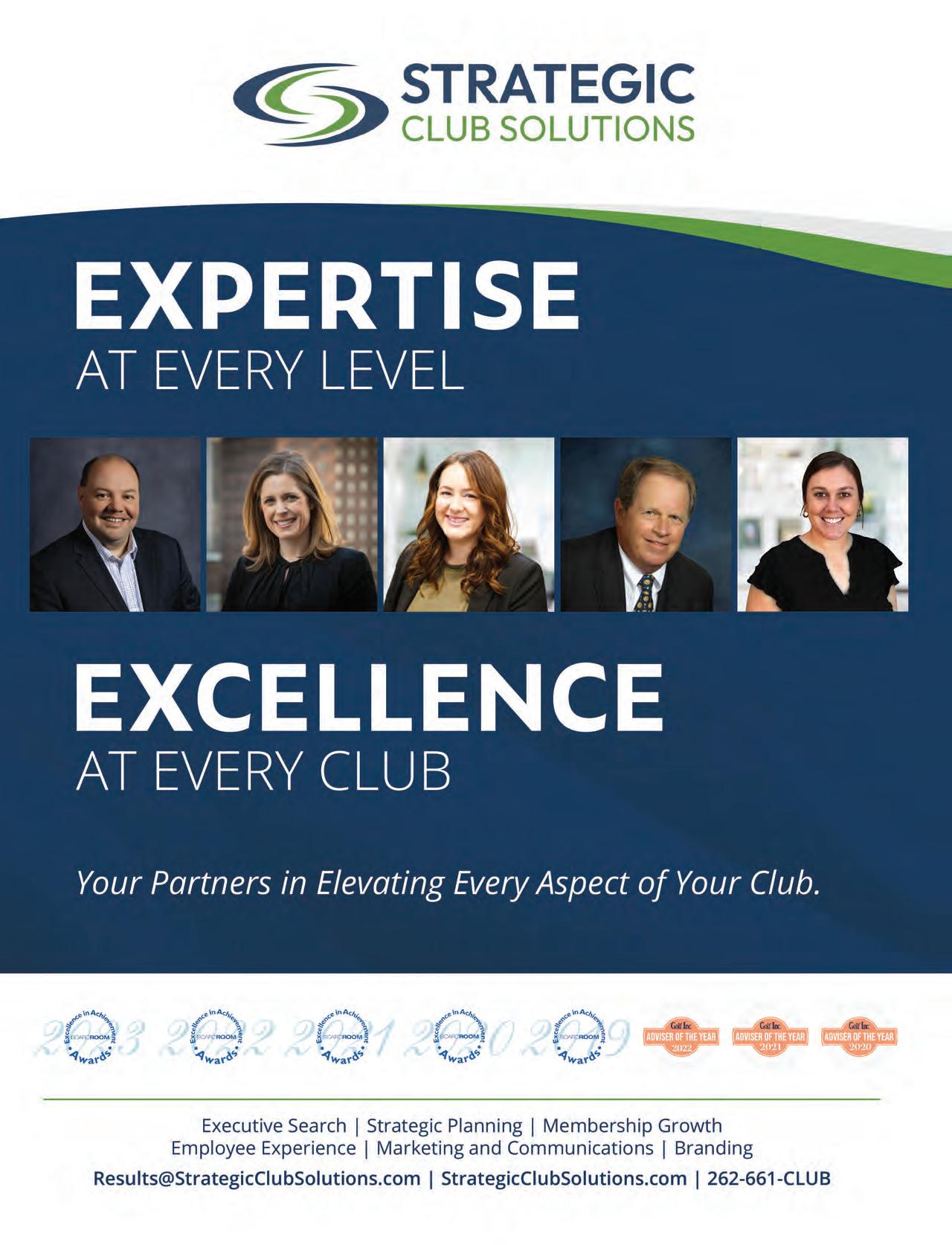

CHRISTINA WATSON
Christina
The role of a board member transcends traditional leadership and demands a deep commitment to stewardship.
Being an effective board member requires an earnest dedication to preserving the club’s legacy while steering it toward future success. This involves more than attending board meetings; it’s about active engagement, understanding the business intricately and championing positive changes that enhance the club’s value to its members. Here are practical examples of what effective board members do.
Effective board members view their role through the lens of stewardship rather than mere leadership. This approach emphasizes safeguarding the club’s legacy and prioritizing its long-term success over immediate benefits or personal preferences. Such stewardship is about making prudent decisions and fostering transparency, ethical governance and maintaining the highest standards of integrity. These efforts ensure that club activities and decisions align with the club’s core values and long-term objectives.
An effective board member might approach a major club renovation by conducting a detailed analysis of the longterm financial implications and gathering member feedback, ensuring the project respects the club’s history while adding modern features. This would involve clear communication and ethical decision-making to balance tradition with innovation, securing the club’s future and member satisfaction.
Board members must have a profound understanding of the club’s operations. This means going beyond a surface-level acquaintance with the club and diving deep into how each department operates and contributes to the club’s overall success. Familiarity with the club’s services, member demographics, key performance indicators and market position empowers board members to make informed strategic decisions and provide meaningful support to management teams.
An effective board member might shadow the maintenance department to understand the upkeep challenges and operational needs of the club’s facilities and use these insights to advocate for budget adjustments or technology upgrades that enhance efficiency and member experience.
Board members should be visible and active within the club beyond the confines of the boardroom. Participation in club events and initiatives demonstrates a genuine interest in the club’s welfare. Engaging directly with these activities helps board members grasp members’ needs and experiences firsthand, fostering strong relationships with members and staff. Such involvement bolsters a board member’s influence and showcases a commitment to leading by example.
An effective board member might attend club social mixers and introductory events, meeting new members and welcoming them. By engaging in conversations, listening to their feedback and connecting them with relevant club activities and existing members, the board member helps foster a welcoming environment that encourages new members to stay and participate actively.
Board members advocate for and implement innovation that aligns with the club’s mission and enhances the membership experience. This could mean supporting technological advancements or introducing new member services. Promoting a culture receptive to change and new ideas enhances the club’s adaptability and competitive edge. Championing such changes involves endorsing and leading beneficial initiatives and navigating resistance.
An effective board member might champion enhanced employee benefits, such as improved health insurance, flexible working hours and professional development opportunities, to ensure the club is recognized as a top employer in the hospitality industry. By leading the effort to improve staff welfare and advocating for these changes in board meetings, the board member helps attract and retain top talent, directly contributing to the club’s service quality and reputation.
Engaged, well-informed and proactive board members have never been more critical. As a board member, it’s important to adopt these principles of effective stewardship, immerse yourself in the intricacies of our business, actively participate, educate yourself continually and champion meaningful change. Commit not just to the status quo but to elevating your club to a new level of excellence and innovation. BR



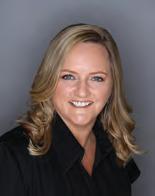
HEATHER ARIAS DE CORDOBA
Heather Arias de Cordoba is the chief content creator at BoardRoom magazine. She can be reached at heather@studiodelmar.net
The New York Athletic Club (NYAC), established in 1868, has a storied history of supporting Olympic athletes.
Founded by Civil War veterans John Babcock, Henry Buermeyer and William Curtis, the club was inspired by the London Athletic Club and aimed to bring a formalized organizational structure to athletics in the United States.
The NYAC has been a beacon of athletic excellence since its inception, as reflected in its iconic winged foot logo. Derived from Greek mythology and associated with Hermes, the winged foot represents speed, power, and athletic prowess. This emblem reflects the club’s mission and has become synonymous with the Olympians who have brought glory to the nation—and pride to the club.
“The NYAC, a BoardRoom magazine Distinguished Club with Icon status, was founded with the vision of supporting and promoting athletic excellence,” said Roger Simon, COO and general manager of the club. “Our founders recognized the importance of organized athletics, and this vision has guided us for over 150 years.” The club’s commitment to its athletes is not just about tradition; it is about fostering a sense of community and pride among its members.




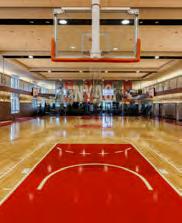

The NYAC’s involvement with the Olympics dates back to the first modern Games in Athens in 1896. Club member Thomas Burke won both the 100m and 400m races, setting a precedent for NYAC athletes that continues to this day.
This early success marked the beginning of a long-standing tradition of excellence, with the club becoming a dominant force in sports such as fencing, water polo, wrestling, judo, track and field, and rowing. Since 1896, and leading up to The Olympic Games Paris 2024, NYAC members had already won 291 Olympic medals—164 gold, 57 silver and 70 bronze— and five Paralympic medals—two gold, two silver and one bronze—with more expected to follow this summer.
Over the decades, the NYAC has been home to some of the most celebrated Olympians in history. Thomas Burke’s victories in 1896 were just the beginning. Ray Ewry, who won 10 Olympic gold medals in the early 1900s, became a global sensation. Al Oerter, the first man to win the same track and field event (Discus Throw) at four consecutive Olympic Games, is another legendary figure from the NYAC.
“Great things are expected of you when you wear the winged foot,” Oerter famously said, a sentiment that has since become the club’s motto. This spirit of excellence continues to inspire NYAC athletes to this day.
All competing athletes are members of the club. The NYAC maintains an “Athletic” membership category specifically for its elite competitors. This support is rooted in the club’s founding purpose, but it also brings excitement and camaraderie to the club, especially during Olympic years when athletes’ competitions are widely broadcast.
“Our athletes’ successes generate immense pride and excitement throughout the club,” Simon noted. “Their achievements are not just personal victories; they are victories for the entire NYAC community. We celebrate these moments together, and it strengthens our bond as a club.”
The club’s support for its athletes is multifaceted. In addition to providing state-of-the-art training facilities, the NYAC ensures that its athletes have access to the best coaching and resources available. This comprehensive support system has been instrumental in helping athletes achieve their full potential and reach the pinnacle of their respective sports.

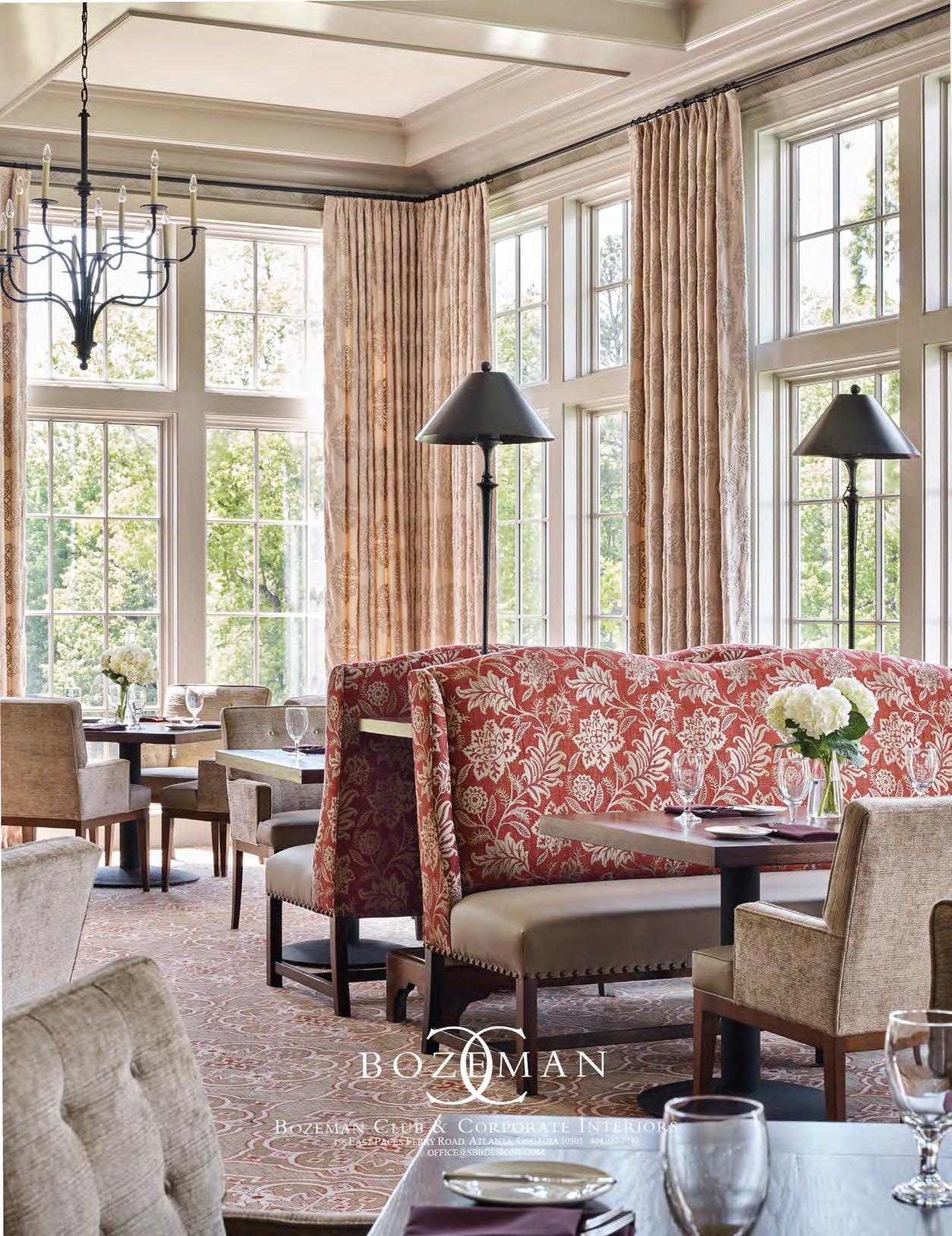


“How can we create a wine list that caters to a diverse membership with varying taste preferences while still ensuring staff can confidently recommend wines and navigate service effectively?”
Art Barajas, COO/GM of Glendora Country Club in Glendora, CA, posed this tough question in the May/June issue of BoardRoom magazine.
In my research to answer the question effectively in a limited space, I was visited by an august wine personage from the East Coast, Brandon Farrell. He is the director of operations and somm at Eastern Yacht Club in Marblehead, MA. He owns his own wine label and consulting company. We began to chat about private club wine programs and his assessment was searing.
Brandon: Private clubs run some of the most challenged wine lists in the country. We’re all overworked in hospitality and management, and it’s very easy to phone in a wine program or allow a single distributor to fill it. GMs and AGMs have largely taken over for wine professionals in making club wine programs, and it shows. Lack of passion, agency/ effort, and vision is where I would place the blame. SKU replacement is no substitute for real research, hard work and an educated, global vision for your lists (and how they match the menus).
Wes: When I posed Art’s question about a wine list that caters to members but can be taught to the staff in a meaningful way, you answered.
Brandon: It’s very simple. Passion. Samples. Education. Make wine fun—not intimidating
Wes: Let’s take those one at a time and see what this looks like on the floor of your club dining room, cantinas and bars. Let’s start with passion.
Brandon: Passion can quickly be the first victim of an overworked or under-educated staff. Passion is the lynchpin of a wine program—or more precisely, a food and wine pairing program—which should be the focus of an overarching F&B concept. You need to start with passionate employees who are led by a manager who loves food and wine. The right manager, wine buyer and educator “has the wine bug,”
and that passion is contagious with the staff. I’ve seen this happen and there’s no substitute for developing a membership that moves from a vague interest in wine (and food) to a membership awakened to the thrill of traveling the world in a wine glass, and on a plate, every night. Passion is the currency.
Wes: I love it. When you say the second key is samples, are you referring to staff wine tasting and training?
Brandon: Precisely, but more than that. It ties in with passion. The club needs to invest in wine and food training that might not immediately show up on the P&L but will set up success in the future. The staff should have weekly preshift meals where they taste the menu with the wines on the list, learn some culinary and wine history about regions and grape varieties. Ask your distributors for “sample wines for training” and bite the bullet and give your staff (and members) the chance to taste and understand the more expensive and rare wines on the list. Invest in a wine program, never stop sampling and educating and you will see the results in member satisfaction and the bottom line.
Wes: Passion, sharing wines from the list, and you touched on education. What can you share personally on how club wine education helped?
Brandon: We all have members who don’t like to spend a lot on wine. You can change that with rapport and connections to members on the fence with their wine purchases. We can move members from California Cab to old Bordeaux with a single, enlightened moment with the right glass and bottle. Flavor and deliciousness are never intimidating, nor is proper wine service. Educating one member at a time, one server at a time. It’s a lot of work, but so is everything that matters in this life.
Next issue: A framework for meaningful wine staff training.
Wes Hagen is brand ambassador and educator for Native9 Wine (native9.com) and an international wine consultant. He can be reached at weswines@gmail.com or (805) 450-2324.
Special Guest Brandon Farrell, DO/Sommelier Eastern Yacht Club





Trends established by architects and designers play a pivotal role in enhancing the private club member experience. Catering to a discerning clientele, these clubs rely on innovative and aesthetically pleasing environments to create an exclusive and memorable atmosphere.
Architectural trends influence private club spaces’ layout, functionality and visual appeal. By incorporating various elements and designs, sustainable materials and technological integration, clubs can offer members modern and luxurious spaces. These trends also ensure clubs remain relevant and competitive in a rapidly evolving landscape.
Case studies of successful architectural and design projects provide invaluable insights into optimizing member experiences. By analyzing real-world examples, private clubs can glean inspiration and best practices for space use, ambiance and unique amenities. For instance, a case study on a club with stunning outdoor amenities can inspire other clubs to reconsider amenities that offer their members an inviting and inclusive social setting.
Design case studies also inform the selection of color schemes, furnishings, and decorative elements. Clubs seeking to evoke ambiance, such as a calming oasis or a vibrant social hub, can draw on precedents.
Incorporating architectural and design trends and insights from case studies ensure that private clubs continually enhance their offerings. Members benefit from aesthetically pleasing, functional and unique spaces that cater to their desires and needs. Biophilic design principles which integrate natural elements into the club environment, multimedia installations for entertainment, trends and case studies empower private clubs to create unforgettable experiences that foster a sense of exclusivity and belonging among their members.



















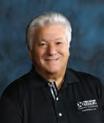



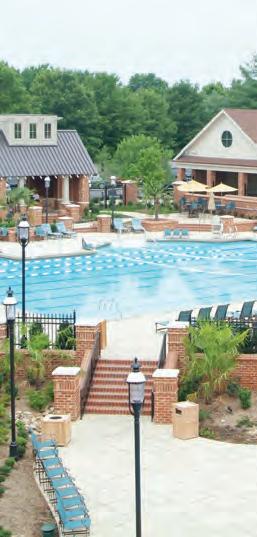





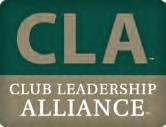
by Angela Grande
It has been a robust time for country clubs, and we are invigorated by the opportunity to work with club committees on significant renovations.
Members’ evolving lifestyles have made it necessary to repurpose both interior and exterior spaces and expand areas that have become more in demand. The addition of new amenities has become inherent to every club’s success.
As clubhouse interior design specialists, we bring a wealth of experience and expertise to the table. We see great opportunities to reinvent what has been done over the years and create areas that are important today in clubhouse life that will carry the club into the future.
Our work today touches on all aspects of clubhouse expansions and renovations. Members have asked us to keep in mind that they do not want dark, enclosed interiors but want to see the views of their courses and experience the outside. We are responding to members’ requests for more inviting, casual, family-friendly dining rooms and the option for outdoor dining. They want to sit at a bar, see their friends, and not face a wall.
More and more club members want their club to be a destination with accommodations featuring all aspects of their lifestyles. We are creating fitness and wellness centers, which members are more than welcome to have at their club.



Training centers with state-of-the-art simulators and bar lounges bring both learning and social aspects to the campus.
Personal accommodations have elevated the homeaway-from-home aspect of belonging to a club. Wine collectors’ need to have their wines on hand has made wine lockers a design feature in our bar lounge interiors.
The current state of the club industry has given designers and architects a window of opportunity to deliver new clubhouses that offer their members experiences that didn’t exist before. We are excited to be a part of this transformation and to bring these new experiences to your club. BR
Angela Grande Design is an award-winning full-service interior design firm specializing in clubhouse and high-end residential interiors. Angela Grande, principal, can be reached at: (917) 873-2425 or via email at agrande @ agrandedesign.com.
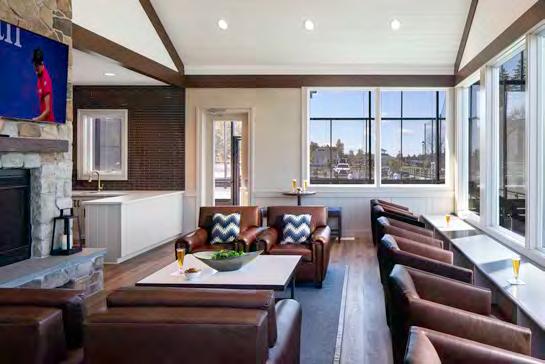



“creating your club’s road map to best in class facilities”

our conceptual planning
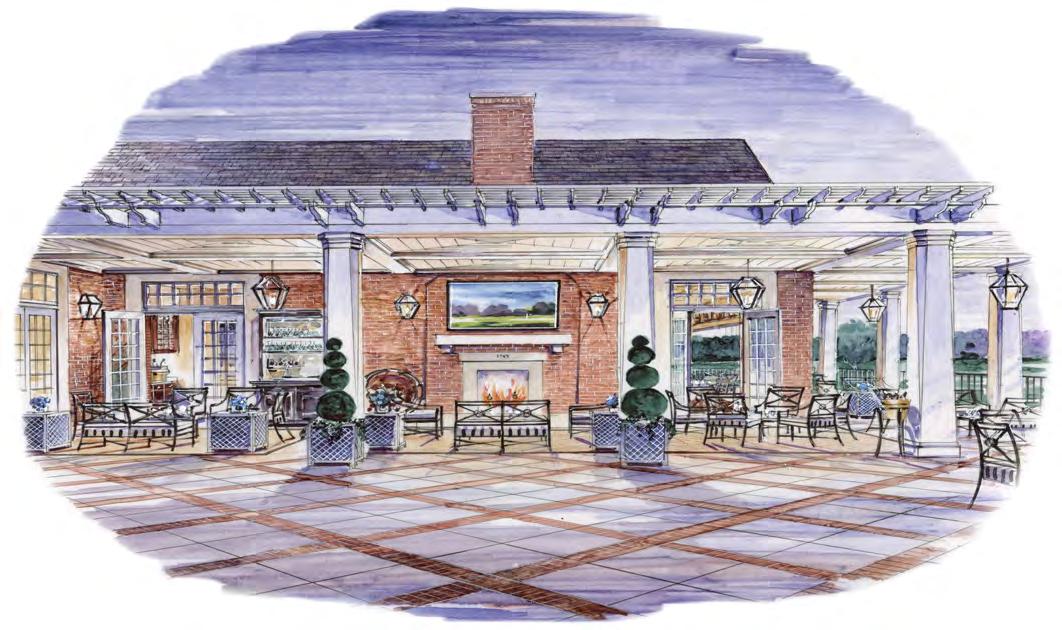
C2’s (Craig and Christina’s) vision and final design has transformed Bellerive Country Club. Our members are proud to visit the Club to enjoy the re-envisioned spaces and are equally enthusiastic about sharing the Club with their families and guests.
Carlos Arraya General Manager & Chief Executive Officer

“transformative change to operations & member experience”
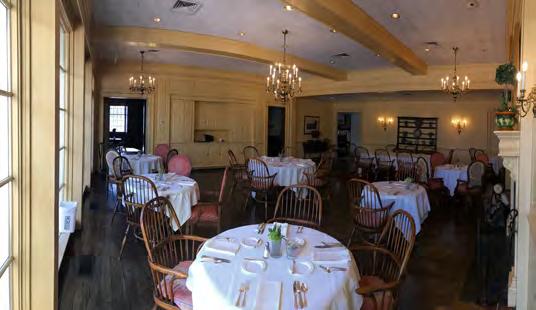
before after
“I cannot more highly recommend C2 Limited for private clubs looking to update and enhance their spaces. Their approach, process, and results speak for themselves. We are so pleased with their entire team’s engagement and commitment to delivering the best possible result for their clients. It is a rare occurrence in a private club when there is zero negative feedback when a major renovation project is completed. We were the exception to that rule after Craig, Christina, and their team finished their vision for our new casual dining space. We plan to have C2 Limited lead all future renovation projects for our Clubhouse spaces in the future.”
Nathan M. Stewart
GM/COO
Kansas City Country Club
Kansas City Country Club

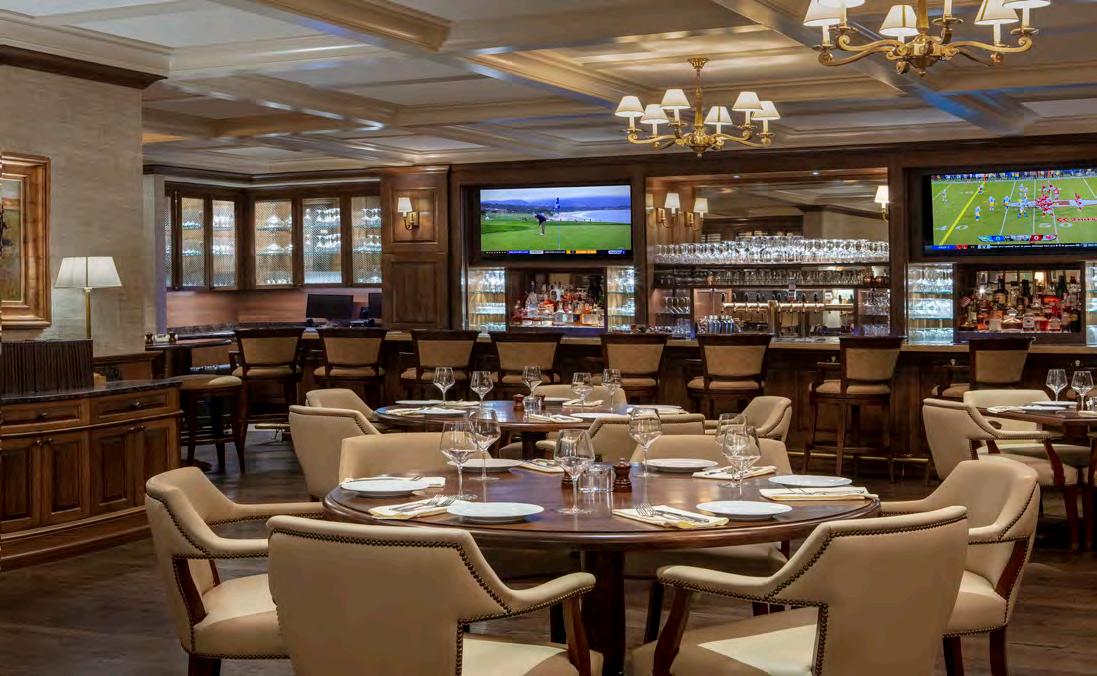









by Timothy N. Castor
Ironwood Country Club, under the leadership of Josh Tanner COO, planned to refresh their clubhouse interior with what we call in the industry–a paint and powder. Typically, this includes paint, carpet, and new decorative lighting.
Many architects and designers immediately reach for their favorite sources to select something “out of the box.” However, members desire more from their club interiors and need the decorative lighting to be more appealing. This may require customizing chandeliers and wall sconces.
With Ironwood’s interior transformation, we were challenged to design and provide new custom chandeliers appropriate to their existing clubhouse. A specialty of Castor Design, we immediately went to work designing beautiful custom chandeliers. We needed to over-size the fixture to fit the scale of the clubhouse, which is much larger than a residential home.
Several manufacturers specialize in producing such custom lighting. These hospitality lighting manufacturers typically supply custom lighting in hotels, casinos, and cruise ships. They will assist in developing the concept and shop drawings for client approval. Furthermore, they have the facilities to produce the fixtures and ship
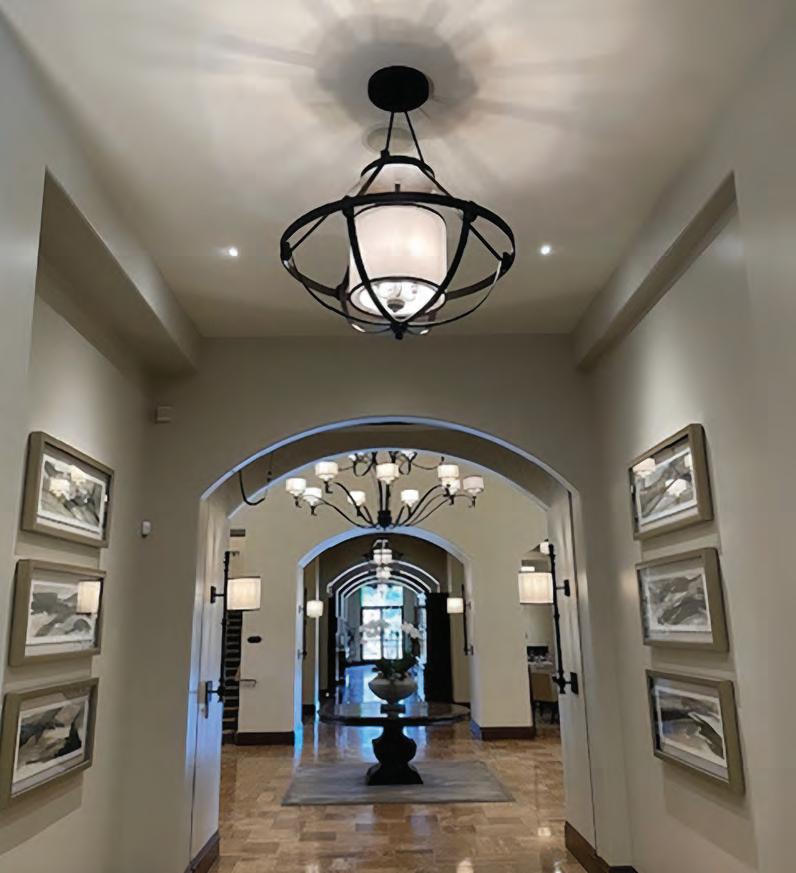

them directly to the club, as well as offer installation technical support.
The first step involves assessing the club’s desired look and scale. Next, we create conceptual designs to present to the client for feedback. After a direction and design were approved, we worked closely with the manufacturer to obtain shop drawings, which detail scale, wiring, finishes and lamping specifications. They also provided finish samples for approval before manufacturing the fixtures.
Once the finished product was shipped to the clubhouse, the electrician collaborated closely with us to install these fixtures carefully. It is important to note that many of these larger fixtures have a heavier weight than standard fixtures. We look at this weight and collaborate with an engineer to determine if additional support is needed. Often, scissor lifts raise the fixtures (and electricians) high enough to install safely.
The new custom iron chandeliers and shades, made specifically for Ironwood Country Club, have been well received by the members. Combined with a fresh, lighter-toned paint color system, this space is now more open and welcoming to anyone who visits. Members could not have been happier with the expenditure of their dollars. The custom chandeliers, sconces, along with fresh paint colors including new carpet renewed Ironwood Country Club’s spaces for a high-impact look. BR
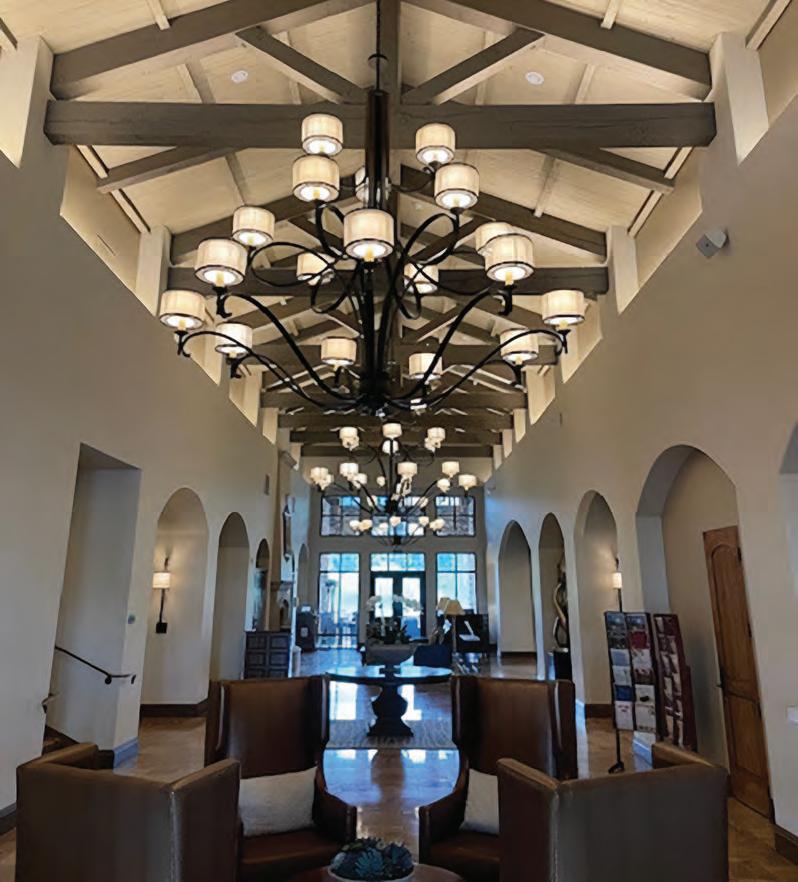
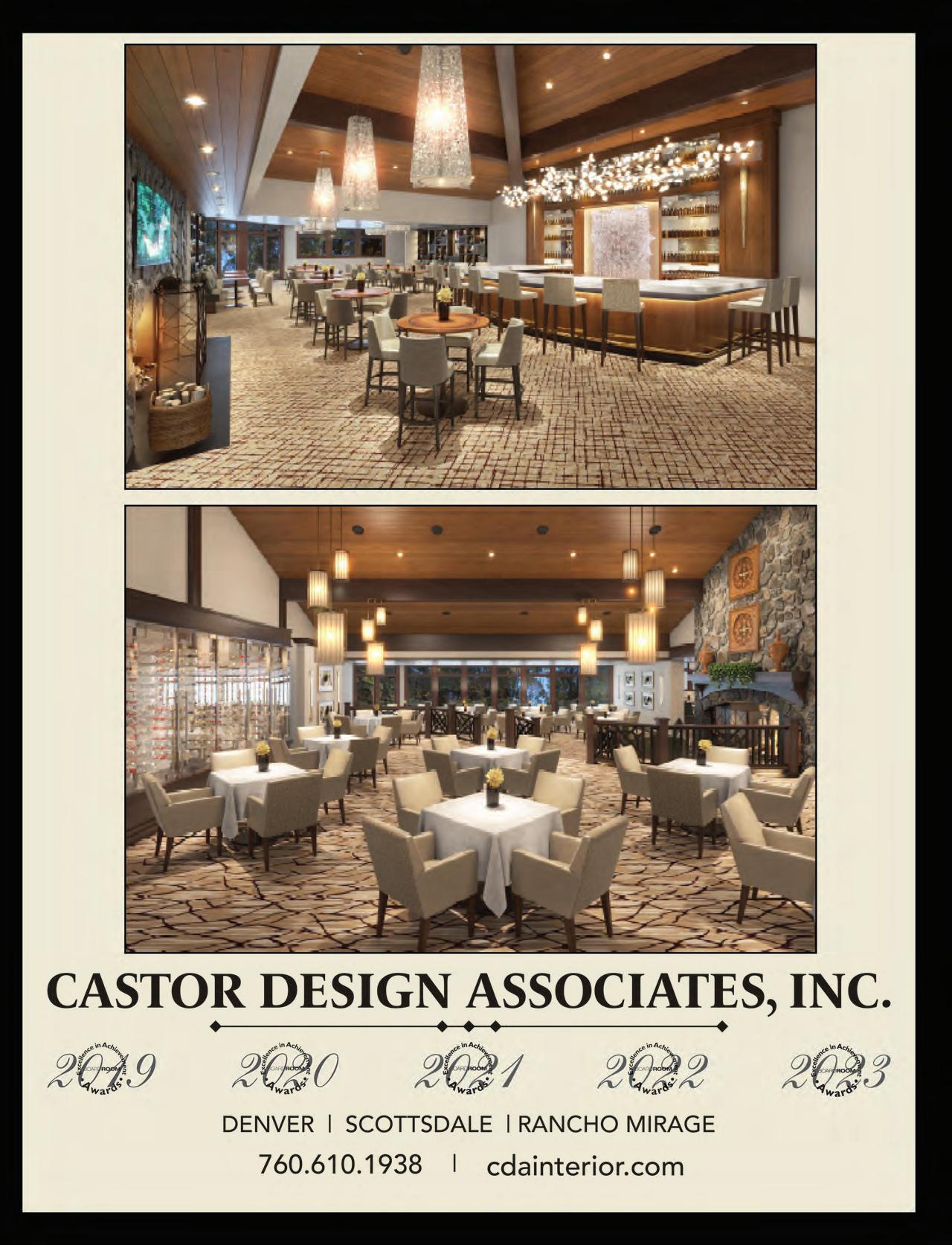
Clay Pryor Interiors | BOARDROOM DESIGN FEATURE by
Clay Pryor
OUR PHILOSOPHY
Our team is a creative cell that captures the spirit of collaboration, dedicated to creating spaces that embody a true sense of place.
Natural colorations and sculptural forms inspired through nature’s organic displays strongly control our approach to interior design—anything authentic, unexpected, collected and rediscovered, is on the table.
We like to take risks. The introduction of bold, vivid hues mixed with classic neutrals can enhance the element of surprise.
EACH PROJECT IS LIKE A STORY— EVERYTHING HAS A PURPOSE AND PERSPECTIVE
The art of storytelling drives our team to capture a strong point of view for each project. Whether we are focused on historic renovations, modernizing existing properties or developing a fresh program for new construction, we are inspired to tell a story through livable environments that function for today’s lifestyles.
Clay Pryor Interiors offers a full range of interior design services employing standards in every phase of every project. The CPI team takes historical, geographical, and cultural influences into account, as well as regional art and artisans, natural resources, local building materials, and construction capabilities.
Our design philosophy is simple: We design for your market. We seek to incorporate a unique flavor into each project, involving ourselves with the custom design of interior architectural details, interior finishes and materials, furniture, lighting, textiles, artwork, and accessories. A project’s interior vision should be an investment toward creating spaces that showcase our clients’ personalities. BR

OUR PASSION IS TO CREATE SPACES THAT...EXCITE, INSPIRE AND RENEW OUR LIVES.
The Project: Private Golf Club
Interior Design: Clay Pryor Interiors | Architecture: Swaback Architects
Trends for design in today’s resort golf club market embark on creating upscale environments through combinations of style that have a sophisticated beauty with an urban attitude. Our goal for this private golf club is to develop interiors that will be seductive yet timeless. Playful, yet powerful. The approach is to create interiors that provide a highly personalized customer experience that stands out in the marketplace. Here, you experience mixing and matching new contemporary expressions with more traditional classic inspirations to build spaces with a true sense of soul!
Natural craftsmanship is the goal. Whether it’s nature’s work or humankind, our desire to incorporate a sense of craftsmanship is present within the club’s interiors. There is a strong call for the use of organic materials and an abundance of texture. Colors, patterns and textures drawn from the outdoor environments have an effective impression on the patrons. The lines are blurred between the indoor and outdoor transitions. The combined experience for the interior program focuses on strong relationships between the indoor and outdoor living spaces. The interior design captures and utilizes natural qualities of light and shade.
Modern rustication through expressions of color is achieved. We are inspired by colors that do not mimic the hues of nature as much as recreate their effect. Therefore, we chose a color palette that creates interior fields of color-blocking in which almost any combination of people, furnishings, art and unique objects settle together in harmony. The club displays a specific palette of textures, materials and hues that provide a memorable experience for the Patrons. The introduction of pops-of-color pays homage to natural displays found in the desert itself. BR
Clay Pryor is creative director/principal at Clay Pryor Interiors. For more information, please call (720) 252-0990, email claypryor@ymail.com or visit www.krisclaystudios.com
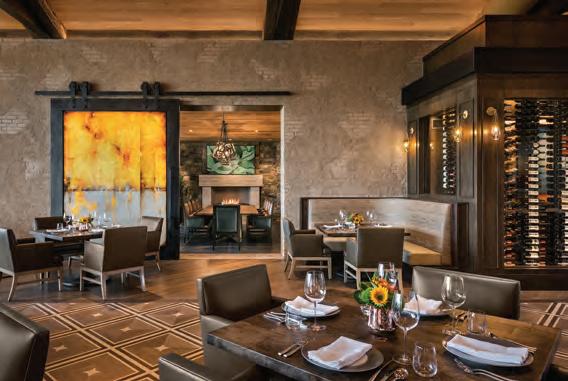
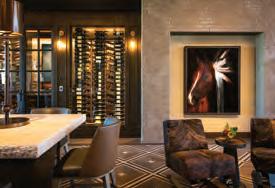


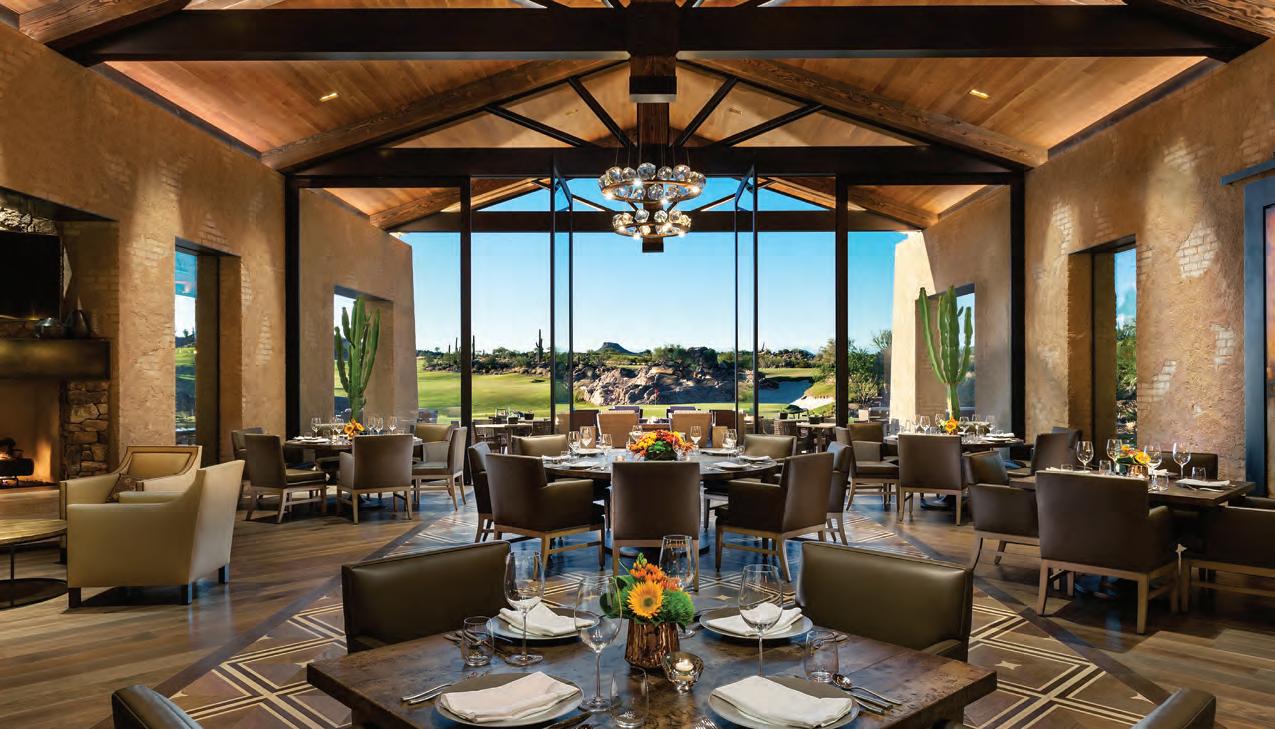


PHX Architecture & ClubDesign Associates | BOARDROOM DESIGN FEATURE
by Erik B. Peterson, AIA & John Cochran


A SOPHISTICATED MENU, VIBRANT LOCAL FLAVORS, AND A MODERN RUSTIC DESIGN CREATE AN UNFORGETTABLE DINING EXPERIENCE WITH BREATHTAKING VIEWS AT THE NEWLY RENOVATED LOG CABIN
The newly renovated Log Cabin at The Club at Las Campanas, a BoardRoom magazine Distinguished Club, is a modern southwestern restaurant that elevates dining to a new level with its sophisticated menu and indulgent cocktails. Designed to offer a unique culinary experience, the restaurant’s dedicated culinary team meticulously sources fresh ingredients from local farms, ensuring every dish is infused with the vibrant flavors of the region. Their menu caters to a variety of tastes, featuring an array of casual options perfect for a relaxed meal, as well as comforting classics that provide a nostalgic touch. Each dish is crafted with care, reflecting the rich culinary traditions of the Southwest while incorporating innovative twists that delight the palate.
One of the biggest challenges of this project was adding to an existing pre-manufactured log cabin. We aimed to preserve the rustic charm that everyone loved while giving it a fresh, updated look. We achieved this through carefully selected design details, from a custom leather belt feature wall to thoughtfully chosen artwork, breathing new life into the cabin and creating a spectacular atmosphere. Additionally, we installed a new metal roof to complement the existing aesthetic and modernize the overall look.
A key standout feature of the Log Cabin is its expanded patio, which offers members an unparalleled dining atmosphere. Guests can enjoy their meals with breathtaking views of the World-Class Equestrian Center and the stunning Jemez Mountains as their backdrop. Whether it’s a casual lunch with friends or a special evening out, the Log Cabin provides a dining experience that is both memorable and distinctly regional. BR
For more information, contact Erik B. Peterson, AIA, PHX Architecture, www.phxarch.com, (888) 217-1117 or John Cochran, ClubDesign Associates, www.clubdesignassociates.com, (866) 484-9853.

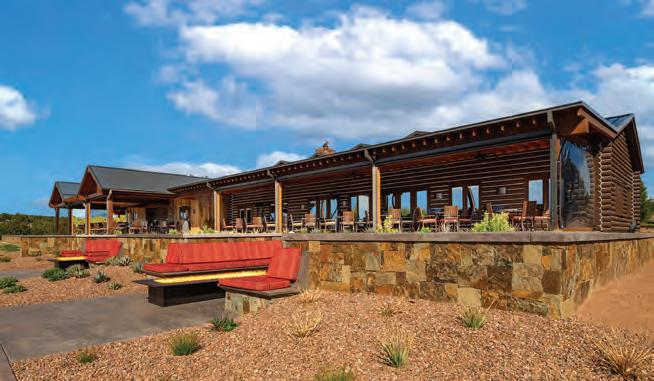



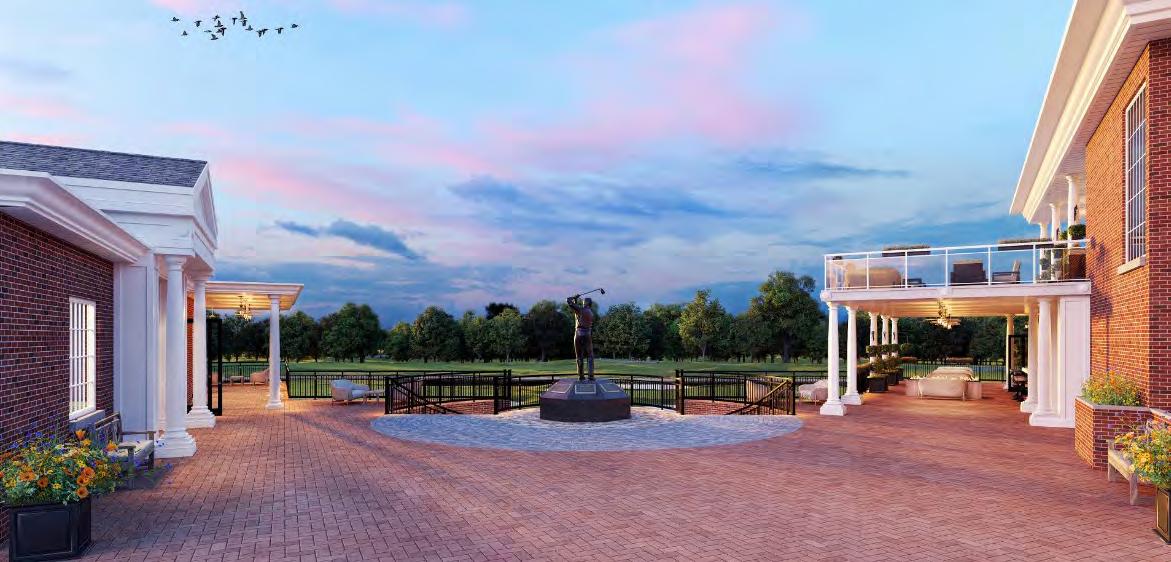

by Donna Figg, Principal
The Talisker Clubhouse is situated in the idyllic mountain landscape of Park City. Our journey to renovate the clubhouse, began with a comprehensive exploration of the architecture and surroundings. We immersed ourselves in the natural beauty of Utah’s mountainous terrain, drawing inspiration from its rugged landscape, crisp air, and serene ambiance. This served as the foundation for the “mountain modern” concept—a harmonious fusion of rustic warmth and relaxed sophistication.
It was important to strike the perfect balance between old and new, while also meeting the club’s functional needs. The existing architecture, with its traditional detailing and charm, posed a formidable counterpart to the clean lines of modern furnishings. By strategically layering textures, tones, and materials, we created a visual dialogue between the past and present, allowing each component to complement and enhance the other. The club also needed to maximize their seating capacity for the various groups, including large families, foursomes and even bar seating, within the same room. We worked with them to vary the table sizes and heights needed to create a highly functioning space.
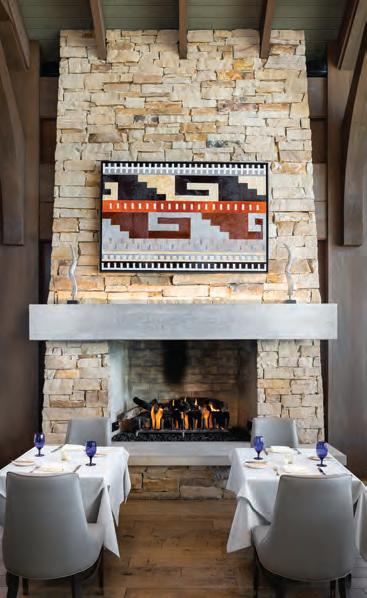

Drawing upon a palette of cool tones interspersed with hints of vibrant hues, we curated a collection of custom furniture, textiles, lighting fixtures and custom artwork that spoke to both tradition and modern sensibilities. One of the key art pieces included a bespoke hairon-hide piece based on regional influences, which is featured over the fireplace. We also discovered a local artisan with the skills to intricately capture the majestic mountainous landscape into a textile tapestry in the entry.
Each element was carefully chosen to evoke a sense of understated luxury and comfort, reflecting the laid-back yet refined lifestyle synonymous with “mountain modern” living. BR
Donna Figg Design, founded in 2012, specializes in creating vibrant and thoughtfully designed interiors for private clubs, among other spaces. With a team of CIDA-accredited designers experienced in both furnishings and interior design, DFD is dedicated to bringing fresh, detailed, and purpose-driven design solutions to life. Their approach ensures that every project becomes a unique and personalized expression of style. For more information please call (512) 298-2588 or visit www.donnafiggdesign.com.
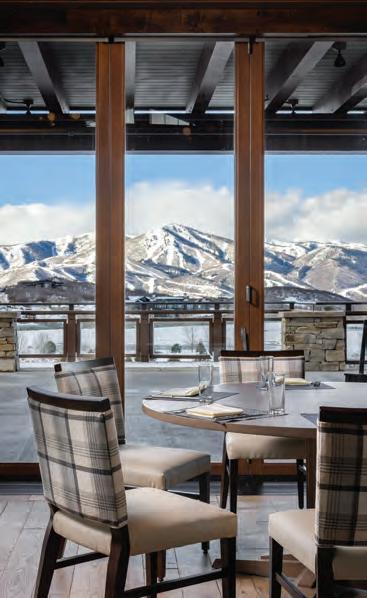
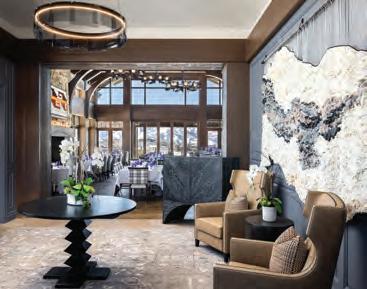

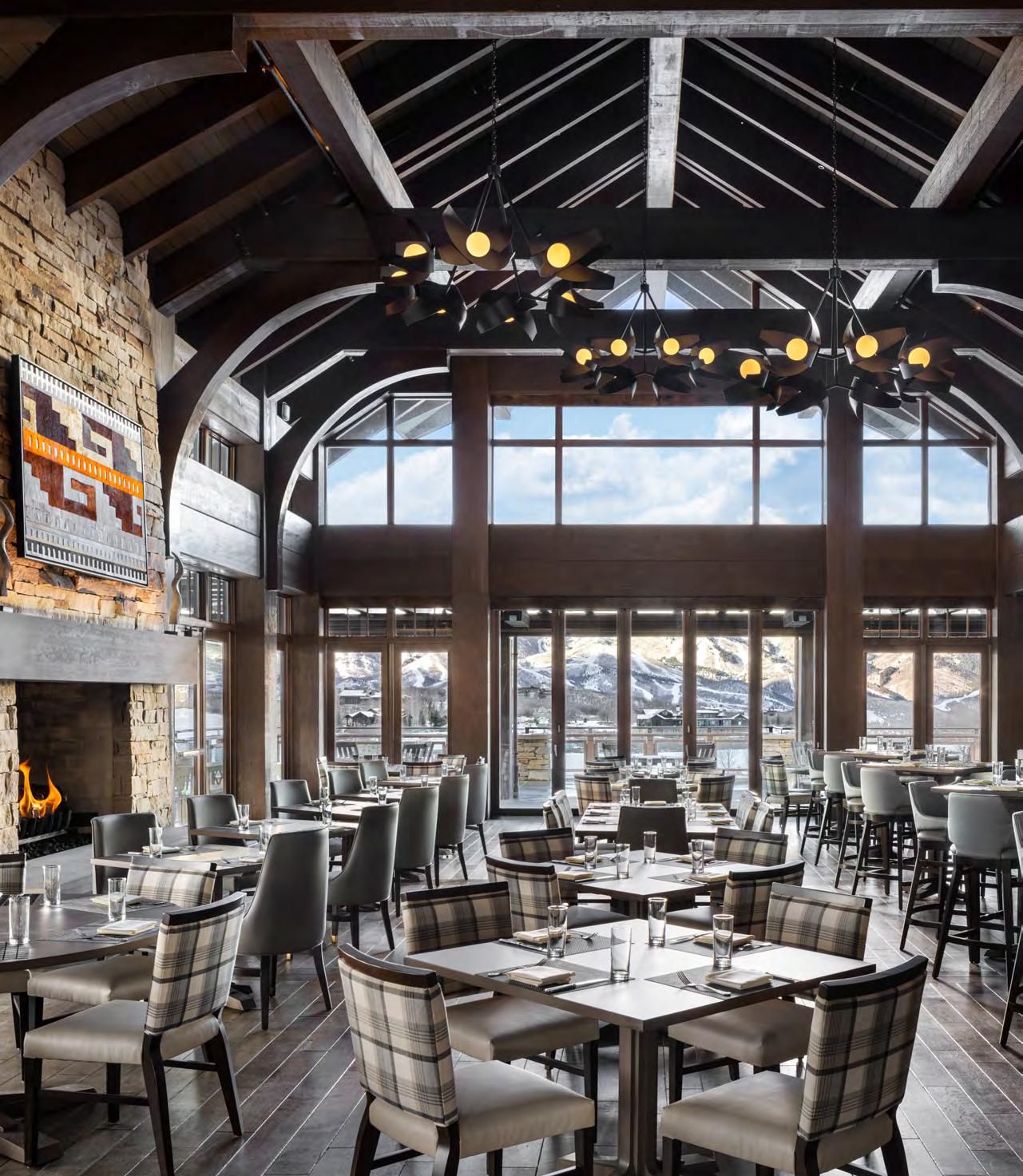







by Peter Cafaro
For the past 25 years of my professional career and far longer back into the careers of some of you reading this article, the age-old question has been posed over and over again: Why does private club food and beverage lose money?
I have heard members make statements like, “Golf is the only thing that makes money,” “Food and beverage is the largest line item on our income statement, and it’s a loser,” and “Restaurants make money; why can’t we?”
Well, we all know that if clubs had a potential market of thousands of patrons, could require reservations, didn’t have to stay open and staffed regardless of the number of diners, and could have more than a single seating, and if staff were tipped, and on and on... the situation might be different.
Let’s look at this from a different angle.
We all know golf is the biggest loser at most clubs, meaning it takes up a significant amount of the annual operating budget when considering materials, maintenance and staffing. The dilemma is that members perceive that dues (the most extensive line item on the income statement) pay for golf but not anything else. Perhaps the reason for members’ confusion is because we charge for food and beverage.
What if we changed the model?
Make food and beverage a bit more like golf:
• Menu item prices include food and preparation costs (back of house) for only the members and are priced to cover the annual budget.
• Menu item prices for guests carry a “guest fee.”
• Servers are paid for by dining members for themselves and their guests as an extra service like carts or caddies. Members can walk to the kitchen to pick up their food if they choose to.
• Servers are tipped for their service and advice on menu selections, like caddies.
• Diners must reserve their “dine times” two weeks in advance and for no more than four in a group.
• Members and guests stagger arrival and ordering times so there is no “slow play.” Dining times are spread throughout the day to avoid overcrowding the restaurant, allowing staffing for the exact number of people eating at specific times.
• Diners pay close attention to the “conditions” in the dining room and are eager to make regular improvements to the facility, willingly paying for those upgrades.

We all know that none of this will ever happen, nor should it. But perhaps if this analogy is presented to those members who are regularly “advising their club professionals on how the club should be run,” we may be able to open some eyes and calm some angst. Dining, like golf, the pool, racquets, and fitness, is an amenity. Dues pay for amenities—dining is no exception. BR
Peter Cafaro is senior vice president, JBD JGA Design and Architecture, a ClubWorks Company, in Pawtucket, RI. He can be reached via email at PCafaro@JBD-JGA.com


by Kelli Larson and Kristin Nichols

The Moorings at Hawk’s Nest is the sister property to the Moorings Yacht and Country Club. We renovated the entry, grill, men’s card room, locker rooms, and golf pro shop. The clubhouse is primarily used by golfers coming off the course and wanting to stay for dinne r or head to the locker room for a game of cards. Hardwood flooring along with decorative chandeliers, case pieces with lamps, artwork, and a focal table were added to the entry. This creates a sense of arrival and gives members the feeling that they are entering someone’s home.
The existing mill work included painted yellow openings with golf memorabilia. We created the feel of a built-in mill work book shelf, by painting the entire piece in a deep blue gray, adding glass shelves, and installing a grass cloth wall covering behind the shelves. Acce ssories were purchased from several different antique markets and local finds. A soft seating group was added across from the reception desk along wit h a gallery grouping of Intaglios. Again, the goal was create a sense of comfort and warmth with the table lamp and lounge seating.
The previous color palette included the classic country club green, gold, and plaid finishes. We knew that a lighter, fresher c olor palette was needed. We achieved this by painting the millwork surrounding the existing fireplace in the dining room. A commissioned piece of artwork was installed above the mantle with decorative walls sconces flanking the piece.
Decorative pendants were added over the bar along with roman shades to help soften the space, while not taking away the view of the golf course.
We feel that we successfully kept the traditional architectural elements while creating a more transitional, fresh palette with the furniture, artwork, and decorative lighting. BR
Larson Nichols is a full-service interior design firm specializing in private club, high-end commercial and residential projects throughout the Southeast. With numerous awards, including the 2023 BoardRoom Magazine Excellence in Achievement Awards, principals Kelli Larson and Kristin Nichols deliver timeless and welcoming spaces. The firm offers comprehensive services from space planning to coordination with architectural and engineering consultants. For more information please visit www.larsonnichols.com.



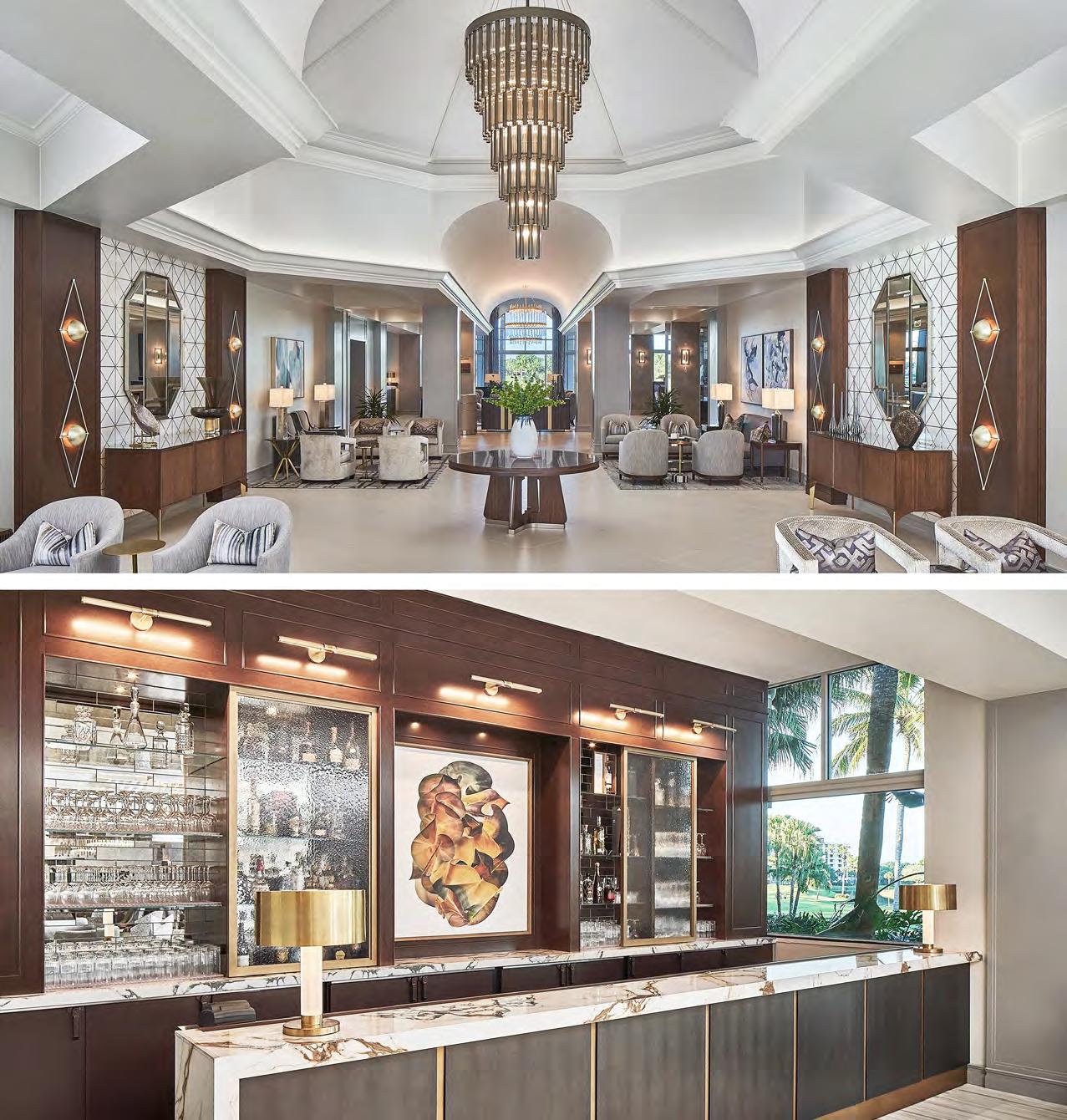
AM Design Group | BOARDROOM DESIGN FEATURE
by Adrian Karapici
While we enjoy seeing our projects come to life, the real challenge is securing members’ approval to even get started. This crucial step lays the foundation for success and ensures the project aligns with the club’s stakeholders’ expectations.
The journey begins with a clear vision that matches the club’s mission and members’ needs. Engaging members early through surveys and open-door sessions builds ownership and enthusiasm. We find this open format far more effective than a focus group approach.
Historically and statistically, club members fall into three groups when it comes to improvement projects:
1. The first group consistently backs efforts to exceed member expectations and maintain competitiveness. They prioritize both shortterm benefits and long-term goals, often drawing insights from other clubs. This group recognizes the need to invest in new and existing amenities.
2. The second group, the largest in the club, can sway the vote depending on the process and information provided. Transparency is crucial—regular updates, open dialogue, and member feedback build trust and address concerns. Clear, compelling presentations should outline project goals, benefits, and potential issues like budget and facility im-

pact. A solid financial model is key to gaining their support. Including their suggestions in the final plan and demonstrating a commitment to the club’s future will help secure their backing.
3. The third group is passionate about the way things are at the club and willing to engage anyone attempting to change it. For this group, it is not as much about the assessment and/or increased dues as it is about the fear of change for everything as they know at the club.
The majority of input sessions attendance is usually from group two and three with a very small attendance from group one. Following the member input sessions, the most important aspect of bringing a country club project to life is creating a balanced concept plan (inclusive of ideas from member input sessions) needed for approval.
In the end, effectively engaging members, creating thorough and transparent presentation, and fostering open communication, the path to project approval can be navigated more smoothly, setting the stage for successful project execution and enhanced member satisfaction. BR
AM Design Group is a full-service Architectural and Interior Design Firm. Please visit www.amdesign-group.com for additional information.
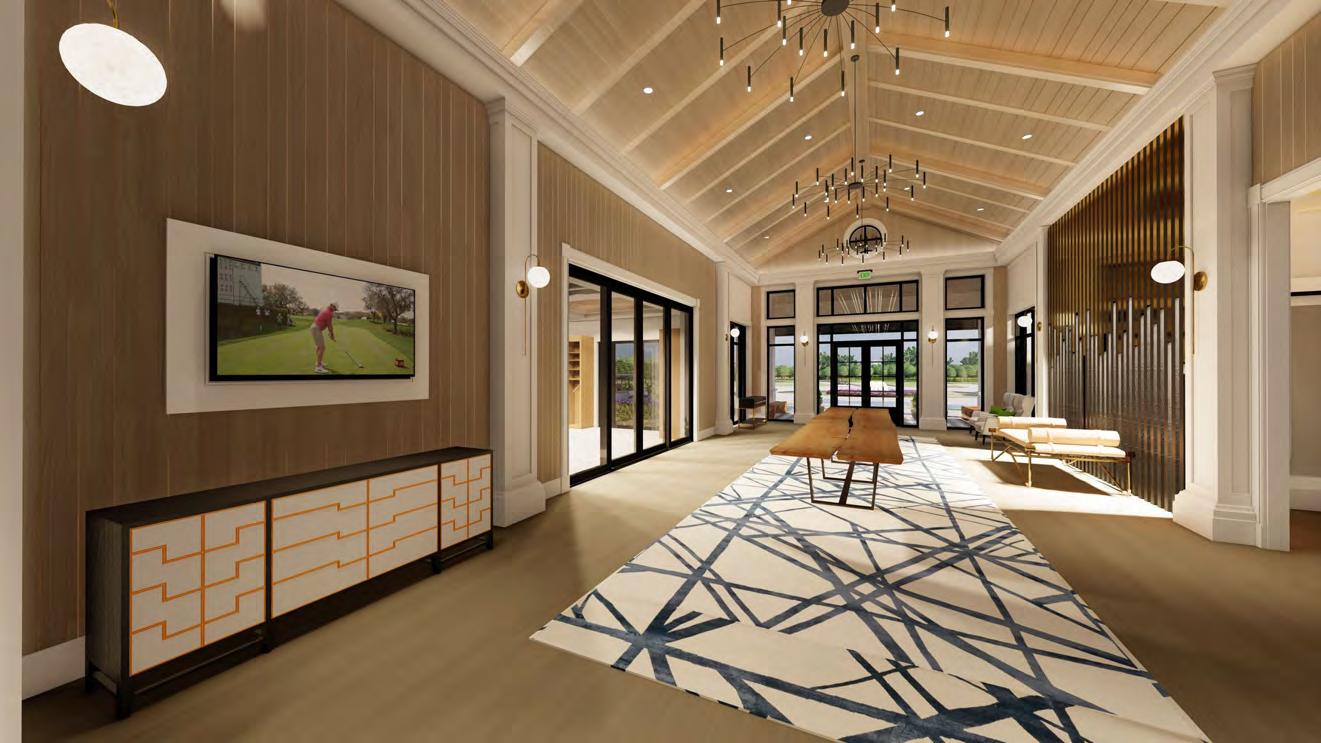


Established in 1862, The Union League of Philadelphia continues to represent the regions’ leaders. The club’s $25 million investment in a rooftop restaurant and expansive outdoor terrace continues to solidify its reputation as a leader in both the Philadelphia area and the private club industry as a whole.
Chambers worked closely with club leadership to create a rooftop dining venue that respects the history of The Union League, while preparing it for future generations. The design transforms what was once a multi-level rooftop that housed mechanical equipment into a generously welcoming, yet reassuringly exclusive member dining experience that maximizes the incredible views of center city.
The architectural design meets strict guidelines from the Philadelphia Historical Commission to maintain the building’s place on the National Historic Register. This includes designing the 9,600-square-foot rooftop restaurant and 1,400-square-foot outdoor terrace to be largely invisible from the street. Inside, the new venue offers a sophisticated, yet slightly more relaxed environment compared to other dining offer-
CHAMBERS | BOARDROOM DESIGN FEATURE by
Rick Snellinger
ings at the League House. A 19-foot-high curved glass ceiling provides ample natural light and unhindered views of the city sky above, while an operable window wall provides direct, open-air access to the expansive terrace experience. Craft cocktails and a new menu with meals prepared in an open display kitchen provide members with a unique and sophisticated atmosphere that raises the bar for what an upscale dining experience should be. BR















Exquisite Rooftop Dining of Historic Proportions













by Craig Stone, NCARB, Senior Project Architect
The Club at Quail Ridge is a 600-acre private, gated residential country club community in Boynton Beach, FL, featuring 946 residences and two championship golf courses.
In 2014, the club introduced its master plan, “Re-imagining Quail Ridge,” which is continuously updated to address capital assets. Since then, members have approved seven projects valued at over $61 million, including a new clubhouse, renovated fitness center, redesigned golf courses, new turn houses and comfort stations, a new community entrance and the new racquet sports center.
The racquet sports pavilion, located between the clubhouse and fitness center, was the final piece of the master plan. Chief Operating Officer and General Manager Bill Langley, noted, “The nearly 50-year-old building was the last original structure at the club and had very few redeeming qualities other than its location. We needed to bring it in line with our other amenities.”
Originally a wood-framed, single-story structure, it had been expanded multiple times over the years, including the addition of an open-air obser-
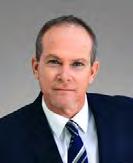
vation deck that was later enclosed. The replacement building, designed by Peacock + Lewis Architects and Planners, aimed to preserve the location’s advantageous aspects and the second-story observation deck while enhancing the building’s condition and functionality.
The new 16,000-square-foot pavilion now offers a 360-degree view of the tennis and pickleball courts. It includes a large group gathering room with folding exterior glass doors, a smaller meeting room, a pro shop, staff offices, men’s and ladies’ locker rooms, storage space, and a large perimeter viewing terrace. The pavilion’s design features and function rooms have become an extension of the clubhouse for a variety of club activities.
The project, with a budget of approximately $6.6 million, was completed on time and within budget. The original building was demolished in May 2023, and construction began in July. The pavilion opened in April 2024, with 750 members attending the grand opening. Langley joked, “I didn’t know that many members cared about tennis. The wonderful opening party created immediate enthusiasm for the club’s newest amenity.” BR


by Skip Avery
Successful facility planning and member satisfaction hinge on the private club industry’s thorough design and implementation processes. Engaging architects who specialize in private club design is crucial for exceeding member expectations. Even non-local firms can effectively capture the desired look and feel of the club. With technology, they can monitor implementation remotely and be on-site when necessary to ensure seamless progress.
Private clubs are vibrant communities where members socialize and relax. Architects with expertise in private club design understand these unique dynamics. They consider site layouts, member flow, and staff operations to create designs that enhance the member experience. Every design element should contribute to their enjoyment from the moment members arrive. Architects skilled in private club design create welcoming entryways, intuitive circulation paths, and inviting social spaces that foster interaction. They meticulously consider sightlines, acoustics, and lighting to accommodate members’ diverse needs.
Whether designing a cozy lounge or a spacious dining terrace, their designs aim to enhance the overall member experience.
When you hire architects with private club design expertise, you’re not just getting a design but a commitment to delivering value to your members. Our optimized designs enhance member satisfaction, retention, and engagement, leading to a high return on investment. Well-designed spaces become destinations that members eagerly return to, reinforcing the club’s value to its members.
When hiring architects knowledgeable in private club design, it’s not just about their expertise in understanding club dynamics, optimizing member engagement, and delivering high returns on member experiences. It’s also about cultural alignment. At SGA, we understand the importance of this alignment and are ready to provide the necessary information to help your club choose the perfect partner. We value your club’s unique culture and are committed to ensuring our designs reflect and enhance it. BR

At Stone Group Architects, we are dedicated to enhancing the member experience by understanding your club's unique culture and your members' needs and wants. Our team works closely with you to create custom programs and amenities that cater to your speci c audience, ensuring that every visit is memorable. Let us help you elevate your club to the next level of excellence. Contact us today to learn more about how we can enhance your members' experience.





By Chryssoula Filippakopoulos
Now in its 16th year, BoardRoom magazine annually recognizes the world’s top private club presidents, captains and chairs as Private Club Presidents of the Year, for their outstanding work, their understanding of the industry, and role and responsibilities of the club’s board of directors. In this continuing series, BoardRoom introduces six of its top 20 presidents for 2023. The Distinguished Club President was featured in the January/February 2024 issue. Private club board presidents play a huge role in professional operations of their clubs as a volunteer working diligently with their board of directors and general managers, striving for well informed, but not emotional decisions. This recognition by BoardRoom magazine has attracted board president nominations from clubs and other nominators around the world.
These outstanding presidents exemplify the focus on the leadership responsibilities, the accountability and the management of the board providing a healthy respect for the club’s macro management. They are cognizant of the importance of working, effectively and efficiently, with their volunteer boards and the dedication required from everyone with whom they work. Key elements of a “good” board include commitment, competence, diversity, collective decision making, openness, transparency, effective communication with the management and the membership, fiscal responsibility, development and establishment of the clubs’ mission, vision and policy direction, especially through establishment of a strategic plan. A successful board president draws upon the expertise of other board members, the club’s institutional memory and stewardship of the club’s resources.
As well the board president provides new board members and future board presidents with information they need to perform effectively as board members. Congratulations to these outstanding private club board presidents.

RAPPAPORT



Hunters Run Country Club President Michael Rappaport is unpretentious, positive and supportive.
“He understands the club’s goals,” Larry S. Savvides, the club’s chief operating officer and general manager, said about Rappaport, a club member for 24 years. “He diligently guides the board to think strategically, not operationally.
“A testament to Michael’s essence lies in his steadfast advocacy for the employees, including improving their medical and wellness benefits. Through unwavering support for the club’s drive to excel, Michael exemplifies true dedication and resilience in his role.”
Rappaport has been on the Hunters Run board since 2019. In 2020, the board changed direction to ensure a future that would constantly allure new members and reinvigorate the club’s distinction in the industry.
“I take pride in having served as a member of that forward-thinking board,” noted Rappaport.
As president in 2023, he led a pivotal chapter in the club’s history. Emphasizing governance focused on strategic planning, Rappaport reinforced management’s expertise in operations with new management team members.
As a result, the annual capital fund increased from $3 million to $6.7 million; the driving range and 60-person restaurant were renovated; the lobby, lounge and dining room were refurbished; and a renovation to one of three courses was approved.
Members have provided positive feedback regarding service, food, elevated events and new management. The upgraded aesthetics and enhanced amenities have fostered a positive environment. Members have a heightened sense of pride, and the camaraderie is flourishing in revitalized spaces. They appreciate the investments and innovations, such as a new wine society, elevated decor at events, house-made pasta, higher-end meats, more entertainment and industry-experienced professionals who deliver events and services that exceed expectations.
Effective governance between the Hunters Run board and the general manager is built on trust, strategic oversight and a clear division of responsibilities. The board focuses on strategic vision, and the general manager makes operational decisions. The club hired McMahon Group and Club Benchmarking to provide a strategic master plan.
For 34 years, Rappaport owned TLG Travel, a New Jersey-based travel management company specializing in corporate travel, meetings and conventions for global and domestic companies. TLG Travel spanned five states with 100-plus employees. Rappaport served on the advisory boards of Continental, United and American Airlines. He was selected to the Walt Disney World Earmark Group and the Carlson Wagonlit Travel Leader Group. BR

by Steve Berlin
Finding outdoor furnishings that are durable, stylish, and comfortable enough to withstand the elements while enhancing property aesthetics is a challenge for many club and resort managers. The market is saturated with options, but not all meet the high standards of discerning members and guests, often deteriorating quickly.
XHIBTZ Contract Furnishing addresses this problem by offering a carefully curated selection of high-quality products, including patio furniture, pool and beach chairs, sofas, tables, and essential accessories like cabanas, umbrellas, and custom cushions. Their commitment to quality is evident in their partnerships with top manufacturers, ensuring each piece is both attractive and durable.
A standout feature of XHIBTZ is its custom furniture restoration service, perfect for clients on a budget. This service rejuvenates existing pieces, allowing clubs to maintain a fresh look without the cost of new furnishings. Steve Berlin, owner, emphasizes the company’s philosophy: “We work closely with our clients to ensure they purchase the right products and services for their outdoor needs. Our design team is dedicated to enhancing product lines and revolutionizing outdoor spaces.”

Testimonials highlight XHIBTZ’s exceptional service. Jim Mauer, VP and managing director at The Westin Grand Cayman Seven Mile Beach Resort and Spa, remarked, “The care and attention to detail we experienced with Steve and XHIBTZ were unmatched. We truly felt prioritized and handled with absolute professionalism. Our team is proud of the result, which reflects the quality and standards we value.”
For over 20 years, XHIBTZ has been a trusted provider of top-quality furniture and accessories for clubs, hotels, resorts, and more. Their dedication to excellence has made them a leader in an industry where outdoor spaces are vital extensions of hospitality. For those looking to elevate their outdoor environments, XHIBTZ offers the ideal solution, blending quality, value, and style to create inviting and durable experiences that impress members and guests alike. BR
Xhibtz has been a trusted provider of high-quality furniture and accessories for over 20 years, serving country clubs, yacht clubs, hotels, and more. We specialize in patio, pool, and beach furniture, as well as custom accessories. Proud recipient of the BoardRoom magazine Excellence in Achievement Award since 2012. For more information please visit www.xhibtz.com or call (954) 614-1505.
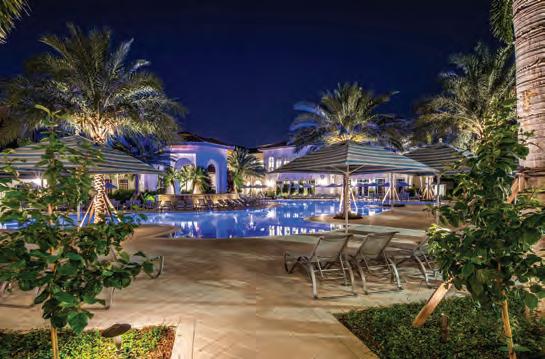
“At Addison Reserve, we have been privileged to partner with Steve Berlin for nearly two decades. His custom outdoor, pool, and patio furniture has consistently exemplified the highest standards of quality. Beyond his craftsmanship, Steve’s reliability and commitment to his promises have been unwavering. He is not just a remarkable furniture maker but a tremendous individual whose integrity and dedication are second to none.” Michael McCarthy, CEO & General Manager, Addison Reserve Country



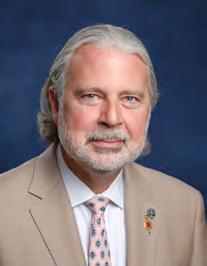
M. SCHWARTZ PRESIDENT JOSEPH F. BASSO GM/COO
When Ira M. Schwartz was elected president of Naples Lakes Country Club in February 2022, the club was in crisis.
“The GM and four top-level staff had resigned, likely precipitated by a change in the board’s composition,” Schwartz explained. “Some thought the management infrastructure was imploding and we would descend into chaos.”
There was also the matter of the forensic audit. Schwartz credits a cadre of board and committee members with navigating the crisis.
“Our experience suggests that the difficult challenges a club faces can be turned around in a relatively short period,” said Schwartz, who joined the board in 2021 and
served as president for two years. “But it requires that members ensure they have a board that reflects their values and desires and an able general manager who, in turn, can build a capable staff.”
Joseph F. Basso, the club’s general manager and chief operating officer, said Schwartz was the right leader at the right time.
“Ira Schwartz embodies the qualities of a great leader,” Basso noted. “He values transparency and integrity above all else. He is deliberately thoughtful, extremely patient and a purposeful listener.
“He is a big-picture visionary but not afraid to redirect our efforts when an initiative doesn’t work. He is inclusive of others’ opinions and positions and has the uncanny ability to handpick the right person with the right talents for any assignment. Most of all, he never wavers from our mission and vision and our core values.”
Under Schwartz’s leadership, a culture shift took place at the club.
“While we maintain the line between governance and operations, we approach both as partners, often bouncing issues in each area off each other,” Basso said. “The club has been working diligently toward adopting a strategic plan. Ira has challenged the committee to ‘think big’ as we work to finalize that plan, keeping an eye on the future.”
Transparency, accountability, a passion for hospitality and a commitment to continual improvement have become core values. Management is accessible and welcomes member feedback. The increased use of club amenities and high ClubIQ survey scores reflect these changes.
Schwartz served a presidential appointment in the Department of Justice under the Carter Administration. He worked in academia as a professor, dean and provost and authored books on juvenile justice. Schwartz served as CEO of the Jewish Federation of Greater Philadelphia. He is an avid golfer and was recruited by the Chicago Cubs baseball team. Schwartz and his wife, Elaine, have been at Naples Lakes since 2015. BR
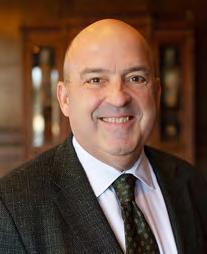
CHRISTOPHER SHIRLING PRESIDENT
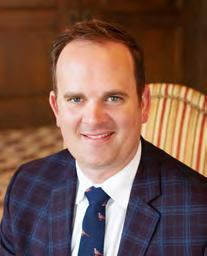
ROBERT TIBBETTS GM/COO
Christopher Shirling is the type of leader everyone enjoys working with and admires.
“He carries himself with great aplomb and has the ability to remain calm in any situation,” Robert Tibbetts, general manager and chief operating officer of Indian Hills Country Club, said about his president. “He understands the best decisions are made collaboratively and is always focused on doing what is best for the organization in the long term.
“He allows the staff to manage their respective areas and relies on their expertise to help guide his deci-

sion-making. He is a tremendous ambassador and can always be counted on to support all areas of our club.”
At Indian Hills Country Club, the board sets policy and strategic direction. The general manager/chief operating officer and staff manage day-to-day operations. Club committees recommend actions to the board and work with staff to accomplish master goals. Indian Hills Country Club is developing its first strategic plan, which Shirling championed from the beginning of his term as president.
In 2023, the board reviewed club policies and established new procedures.
“This work brought more transparency to our process and will aid future boards and committees in making better decisions,” Shirling said. “Existing policies were reviewed for relevance and updated to meet current practice. Gaps were filled using best practices learned through leadership summits and board retreats.
“While these efforts were largely behind the scenes, numerous members and committees had to be involved in policy development and adoption. The long-term impact on our organization will be immense as we prioritize sound governance.”
With the club’s amended rules and policies, Indian Hills Country Club members will have more clarity and context about decisions.
Shirling, a member of Indian Hills Country Club for 26 years, is the chief financial officer at EVERSANA INTOUCH, a healthcare marketing agency. He has spent most of the past 20 years in chief financial officer positions at technology and advertising agencies, including lCTI, AGC/ ATG and VML, where he audited and validated financial records, managed international operation costs and led multimillion-dollar equipment negotiations. BR


“Do we have all the facts on this topic? What is the right thing to do?”
Keith Wandell, president of Colleton River Club in 2022 and 2023, consistently asked these key questions at board meetings.
Robert Sereci, the club’s chief executive officer, noted that Wandell listened intently to the answers and provided clarity and focus.
“He never operated with a personal agenda and reflected on each decision to weigh the greater good for the membership,” Sereci added. “He demonstrated courage to communicate problems and hard truths even when member dissent existed. Keith’s steadfast leadership
and refusal to get distracted from priorities made the board more effective and unified the membership.”
Before he served as Colleton River’s president for two years at the board’s request, Wandell was its vice president (2020 and 2021), chairman of the House Committee (2020) and chairman of the Governance Committee (2021). He led the Amenities Oversight Committee (2020) and oversaw the revision of the club’s governing documents (2021).
Wandell navigated and led the club through challenging times. He helped complete a revitalization initiative, resolved a long-standing legal dispute and executed a succession plan to strengthen the club’s general management and governance. He demonstrated courageous leadership while building relationships and achieving support for the member votes, which enabled the club’s transformation.
The 2019 strategic plan ranked the club’s non-golf amenities, including casual dining, in the bottom tier of its peer group. Wandell led a $21 million capital spend that was approved in 2020 and completed in 2023. The new health and wellness center (The Plex) and tennis center (The Point) are industry-leading. Casual dining has improved exponentially with the renovation of the Dye Clubhouse and the addition of the Palms Café at The Plex. Member engagement and feedback signify success.
In 2023, Wandell, with the board’s support, introduced the CEO structure and processes.
“With the retirement of our general manager/COO, we realized that in order for us to be successful as a community, we had to restructure our governance model to include the appointment of Robert Sereci as our CEO to assist us in developing a strategic plan and improving our governance model,” Wandell explained.
As a result, the governance model has been dramatically improved in a relatively short period and a new strategic plan will be finalized this year.
Wandell was president, chief executive officer and chairman of Harley-Davidson from 2009-2015. BR
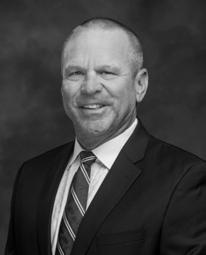
CRAIG
WELCH III PRESIDENT
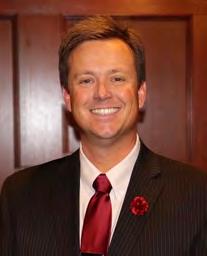
WARD SUTTON GM
Integrity, respect and vision.
The top three positive leadership qualities of Kent Country Club President Craig Welch III.
“Craig does the right thing for the club even though it might not be a popular choice,” said Ward Sutton, the club’s general manager.
“Examples of integrity that Craig has demonstrated include raising dues to ensure the club’s continued success, being penal yet fair when member behavior issues arise and making modifications to the calendar of events to promote accessibility, which our members value.”

Welch III is visible. He participates in club events, puts information in his newsletter without overcommunicating and is open to the membership.
His approach to communication has improved the member experience. Members feel comfortable reaching out to him with their questions and concerns. They feel informed through his digital communications and are confident that policy changes are well-thought-out and benefit the membership.
The renovated 18th Bar and Patio was a major achievement of his presidency. Welch III was involved in the renovation from start to finish. He worked with McMahon Group to develop a master plan, encouraged survey participation, engaged with focus groups and was available during membership presentations.
He led the construction committee after a successful membership vote, worked with the owners’ representative to ensure every detail was handled and worked with the contractors to ensure the renovation was completed as promised.
At Kent Country Club, the board sets policies and the general manager carries out these policies with staff. The club has a solid foundation of proper governance through bylaws, a board of directors’ resource center and a responsibilities matrix. The board does not direct the general manager between meetings, and the president communicates with the general manager about topics that overlap policy and operations.
Welch III is a fifth-generation Kent member. His family’s connection to Michigan’s first club goes back to when the club was founded, in 1896. Welch III, who is retired, grew up in Grand Rapids and spent 25 years in education as a teacher, coach and counselor. He and his wife, Jaime, have a growing family that includes five kids (two married, one engaged) and a grandson. BR
Kopplin Kuebler & Wallace continues to methodically add the brightest and most accomplished industry executive talent to the team.
We are pleased to welcome Ben Lorenzen, CCM, to the KK&W team in the summer of 2024. Lorenzen is actively the creative director of Champions Run in Omaha, Nebraska, where he leads the industry in innovation and creative club concepts. Champions Run will remain Lorenzen’s full-time primary focus upon joining the KK&W team. He will support KK&W search assignments for marketing/communications roles, activities directors, and directors of recreation as a search and consulting executive.
As a national speaker, Lorenzen focuses on member engagement, technology, creativity, marketing, fitness, aquatics, sports, and recreation, sharing his expertise and setting new standards for excellence in the club industry. His dynamic leadership at Champions Run and his influential speaking engagements make him a trailblazer shaping the future of private clubs nationwide.
Lorenzen merges his skill set in recreation with the power of storytelling through video communication and digital platforms. His expertise in developing creative marketing content and leveraging that across mediums is instrumental in driving member engagement and participation. Fittingly, Lorenzen is also a past KK&W Summit Legacy participant.
What began as a small group of elite club managers looking to challenge and learn from one another became a catalyst for the KK&W Summit. Over time, the founding group has hosted events for golf professionals, racquets professionals, and other niche segments. They have also introduced legacy programming to encourage young rising stars and most recently added SheLeads to enhance programming specific to women in executive positions.
Lorenzen shared, “I remember attending a KK&W Summit back in 2019, where I met incredible people who are still friends today. Now, stepping into the KK&W team feels like coming full circle—it’s like reuniting with old friends while embarking on a vibrant journey at the forefront of club and hospitality search. With boundless enthusiasm, I’m ecstatic at the chance to collaborate with KK&W, bringing my expertise and passion to their dynamic mission. This isn’t just about deepening my understanding of marketing, mem-
bership, and sports and rec; it’s about reigniting the spark within me to connect with individuals worldwide.”
Expressing their mutual excitement, the KK&W partners commented, “Ben’s ability to think creatively and his proven success with the nuances of implementing effective club communication adds to our dynamic service offerings. He’s energetic, and his enthusiasm is contagious. With the addition of Ben, it really has come full circle, and we couldn’t be happier with the evolution of this alliance,” continued the partners. “Ben represents the continued organic growth of our firm and is a bright young leader in complete alignment with our core values. Our practice has been to add quality people, not only when there is a need, but also when we think their skill set and personality would be additive to the KK&W team and culture. He is doing remarkable things in the industry, and we believe his skills, experience, and personality will prove to do the same for our clients and candidates.”
Over a span of 10 years, Lorenzen has had a direct impact on Champions Run’s growth and success. He currently oversees the operation, management, and training of a seasonal staff comprising 100 employees. Before assuming the creative director position at Champions Run, Lorenzen held roles as web and media director and aquatics director for several institutions, responsible for web design and development, producing media content, and implementing social media strategies.
Active in the Club Management Association of America (CMAA) and his CMAA chapter, Lorenzen has served as chapter president, vice president, and education chair since 2017. He is also the founder and organizer of the annual Creative Summit held each summer in Omaha to a sell-out crowd.
Lorenzen received his CCM (Certified Club Management) designation in 2021. He is a graduate of the University of Nebraska–Lincoln with a major in broadcasting-video production, minoring in communications. His community service contributions include This Is Me Talent Show for children with disabilities (2023-present), Miss Amazing Pageant, a beauty pageant for children with disabilities (2011-present), and Angel Guardians club volunteer, working with handicapped children (2003-present).
A self-proclaimed “director of vibe,” Lorenzen can be contacted at: ben@kkandw.com or (402) 321-3083. BR

“I cannot say enough about the Team at Kopplin, Kuebler & Wallace and hiring them was not a disappointment. Our KK&W Search Consultant, Paul Levy, was available seven days a week and gave us fantastic service every step of the way. He is very knowledgeable across the industry. Ultimately, KK&W assisted us in making a fantastic GM/COO hire. I would highly recommend KK&W to other Clubs.”
Kathy Cole, Search Committee Chair Los Altos Golf & Country Club, Los Altos, CA
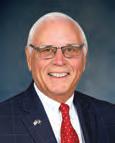












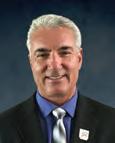



1996





SCAN TO BROWSE OUR ACTIVE CAREER OPPORTUNITIES
Specializing in GM/COO, CEO, AGM, Clubhouse Manager, Food & Beverage, Financial, Golf, Culinary, Agronomy, Racquets, Human Resources, Fitness & Wellness, Membership/Marketing Searches.

By Jackie Carpenter

The private club industry mourns the loss of Don Williams, a larger-than-life figure known for his boisterous personality and unfiltered sense of humor, which allowed him to spark conversations and friendships everywhere he went.
Don’s sudden passing on June 12th has left a void felt deeply by many. A devoted husband, father, friend and leader, Don’s influence stretched far and wide. A significant contributor to the private club industry, Don was a long-time supporter of BoardRoom magazine and a recipient of its prestigious Lifetime Achievement Award, a testament to his significant contributions to the industry.
Don’s journey began with an impressive academic foundation. He graduated from Southern Methodist University (SMU) with a triple major in finance, accounting and marketing. His career took off at ClubCorp in Dallas, where he honed his skills before founding his own company, ClubTec (formerly Club Card Corporation).
For over 42 years, Don led ClubTec, creating employment opportunities and driving innovation in the industry. His entrepreneurial spirit also led to the creation of The Private Club Advisor newsletter in 1989, co-founded with Eldon Miller, also a BoardRoom magazine Lifetime Achievement recipient.
Reflecting on their partnership, Miller once remarked, “Don was not just a business partner; he was a visionary who understood the importance of communication and information in our industry.”
In the early 2000s, Don expanded his impact by founding WebTec, a club website design company, further cementing his legacy as a pioneer in the digital landscape for private clubs. His ventures weren’t just about business but also about building a community and advancing the industry he loved.
Outside of his professional life, Don had a deep passion for sports. He was a lifelong fan of the Texas Rangers, holding season tickets since 1970. His dream came true when the Texas Rangers won their first-ever World Series last fall, a victory that serendipitously coincided with his 70th birthday.
Don’s favorite activity was hosting friends, family and his children and their friends, at SMU Mustang football tailgates. Don never missed a home game and was rumored to be a local celebrity on “The Boulevard.” Don was incredibly proud of his children, both of whom graduated from SMU, carrying on the family’s strong ties to the university.
Don’s legacy extends beyond his professional achievements. He was cherished for his wit, warmth and generous spirit. He is survived by his loving wife of 36 years, Jan and his two children, Katie (Kirk) Presley and Sam Williams. His memory will live on in the hearts of those who knew him, and his contributions to the private club industry will continue to inspire.
As we reflect on Don’s life, we remember a man who embodied passion, commitment and a love for bringing people together. His loss is deeply felt, but his influence and the memories he created will remain a guiding light. BR




Every private club has its own unique identity and we want to help your club maintain yours. Of course, that requires a different approach than the status quo of self-management, which is why Troon Privé® continues to grow. As Troon’s dedicated private club division, we are a proven professional services organization that provides best-in-class systems, processes and resources to the private clubs we serve. Visit TheTroonApproach.com to learn more about who we are and why our clients partner with us.


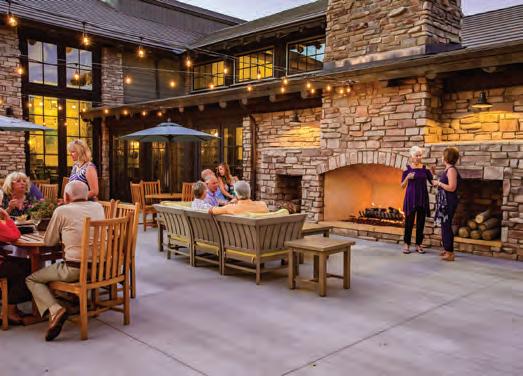

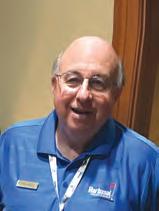
Bruce Barilla has consulted at over 60 clubs. As a courtesy, he provides many complimentary teaching tools for a better locker room at: www.lrcgolf.com
Not all locker rooms are large, like in many older clubs. However, a huge locker room is not always necessary to have enough lockers to satisfy each member.
Solutions to limited space: For example, the club can offer different sizes at different annual fees. A basic onefoot wide full-size 6’ tall locker with three shelves works well for the most part. There can be locker coves with double-wide tall shelves, with multiple storage shelves on one side. Three-stack lockers (two inside shelves) up to sixstack lockers (one inside shelf), with a separate community closet, accommodate members who do not have many items to store.
Although double-stack lockers are common, they usually lack space to hang a suit that will not touch the bottom and wrinkle. There must be at least 40 inches of inside height from the clothes bar to the bottom. In addition, members do not like the lower locker because it is awkward to use. If a club lacks double-stack locker rentals, an option is to connect the upper and lower doors with a bracket and rent them as one locker.
Additional shelves can also be installed, making it a shoe locker and a spot for placing folded clothes. A solution for those clubs who want double stack lockers is to select the uneven type. These allow for more hanging space height. Painting old metal lockers will mean a fresh look and save thousands of dollars. They usually have more room anyway.
Design features such as adjustable shelves and inside hooks not in the way of the clothes bar prove that the difference is in the details. A higher-than-normal clothes bar for longer garments is functional. The door on a locker next to a wall should open toward the wall. Flat tops without decorative molding allow more area for the placement of shoes. Unique features include a small mirror and towel bar attached to the inside of the door with an item tray above it, a security lock box or safe, inside lighting, phone chargers and electrical outlets. Louvered doors help with fresh airflow as does open space at the top and bottom, rather than the door shutting tightly against the frame.
Using screws to attach nameplates is a problem in the making, especially if the manufacturer did not pre-drill the holes. Two-way tape is simpler and eliminates the possibility of stripping the screw holes.
The bottom of the locker door must be at least 6 inches from the carpet to prevent it from hitting the tops of the shoes. Clothes hooks on locker end panels provide an option for temporarily hanging suits or coats.
Bath towel storage with soiled towel drops as part of each locker cove is handy. Colleton River Club (South Carolina) has a shoe cubby locker with 10 shelves for guests who only have a pair of shoes to store. I also recommend having a guest-only locker cove close to the shoeshine room.
The most impressive idea I have ever seen is the first and last initial of each member engraved on flat front locker knobs at TPC Potomac at Avenel Farm (Maryland) by Jerry Hansen, now retired locker room manager. Personalization below the member’s name such as President, Club Champion and Member since ____ adds a nice touch.
New lockers need to offer more than good looks. Request a sample for members to review. If the architect or manufacturer tries to sell you something you do not want or need, go elsewhere. After all, the club is paying the bill and you, as a board member or general manager, will have to deal with complaints afterward. Consult, too, with the locker room staff.
My personal choice for wood lockers is Treeforms. When purchasing new lockers, ensure they are at least the same size or larger than your existing lockers and with no fewer features or you will hear complaints.
Please go to https://www.lrcgolf.com/html/lockers.html for more information and an extensive photo gallery. BR


Forbes Travel Guide is the authority on hospitality excellence. We work with the best luxury hotel brands globally. Let us help you elevate your service to improve member satisfaction and retention.



Forbes Travel Guide worked with our leadership team to create custom standards and tailored training which have been implemented throughout the club. We value our partnership with Forbes Travel Guide.
Jeffrey P. McFadden Chief Executive Officer/General Manager The Union League of



BONNIE J. KNUTSON
Bonnie J. Knutson, PhD, is a people watcher. A professor in The School of Hospitality Business, Broad College of Business, Michigan State University, Dr. Knutson is a member of the Country Club of Lansing and the Michigan Athletic Club. She can be reached via email: drbonnie@msu.edu
For prospective members, embarking on a journey to join your club is akin to stepping into a realm where opportunities, connections and shared aspirations converge.
However, becoming a member often requires more than a membership application. It demands a compelling introduction invitation from you, your staff or other members that leaves an indelible mark. The old tried and true elevator speech can be that introduction.
As you probably remember from your college days, an elevator speech is simply a slang term that refers to a brief – operative word is brief – speech that outlines an idea, a project, a hire, and reasons why a prospective member should join your club. It gets its name from the notion that the speech should be short, not longer than it takes for an elevator ride –i.e., 30 to 60 seconds. The objective of any elevator speech is to pique the listener’s curiosity and excitement enough for the listener to take the next step, such as asking for more information, a membership application or even a tour of your club.
A well-crafted elevator speech is a great tool for you, your marketing team and your board to have in your toolboxes. But like any tool, it must be carefully structured to say a lot in a little. One way of crafting an elevator speech is to break it down into three sections: the hook, the body and the wrap-up.
Ideally, your hook should take about 10 seconds. As a CEO once told me when I was helping craft an elevator speech for a nonprofit, “You need to grab the person’s attention quickly so don’t waste time with small talk.”
It needs to catch that person’s attention and interest right off the bat. You might use a surprising fact about your club or its membership. “Nestled in the heart of the community, our club boasts “X” years of rich history and tradition, providing members with an unrivaled haven for socializing, networking and personal growth.”
I often suggest using the club’s mission statement to develop an attention-grabbing hook. Take the full statement, isolate the main ideas and refine it into a concise and exciting WOW. “Our north course has a rating of 68.9 and our south has a rating of 74.5.”
The body is the meat of your pitch, but you only have about 30 seconds to do it. There is a saying that you cite your WOW in the hook, then back it up in the body. “With the two courses, we offer challenging and exciting golf for all
levels of play. Our pros are top-notch teachers. And we have a great caddy program, with many going to college as Evans Scholars.”
From the mission statement might come: “Joining (your name) is not just about access to an exclusive club. It is about having a place in a community that aligns with your values as well as your hopes, dreams and aspirations. And our membership packages are designed to serve various needs, to make sure your journey with us is as unique as you are.”
Within half a minute, your pitch hits not only the head but the heart of whom you want as a future member.
Use the final seconds – about 20 – to wrap it up and bring it all home with a specific ask, often called a call to action. What do you want the prospective member to do? Join on the spot? Join soon? Ask for more information, meet some members or visit the club for a “tryout?” No matter the ask, it will shape your entire pitch.
Finally, there is a fourth step in delivering an effective elevator speech. Practice! Practice! Practice! Actors do not just show up on set and nail their lines on the first take. They rehearse, rehearse and then rehearse more.
When you are satisfied with your 30- to 60-second content, stand in front of a mirror to practice your delivery with your whole body. Add in smiles, eye contact and even hand movements. Delivery is critical. Prospective members need to hear, see and feel your connection to your club and your belief that they will have that connection too. Without that, prospective members will remain just that – prospective.
Crafting an elevator pitch tailored for a private club is the key to unlocking doors that lead to a world of refined experiences and meaningful connections for prospective members. A great pitch presents with the present and excites with the future.
When Dave Vasen, the founder of Brightwheel, a childcare management app, pitched his idea on ABC’s “Shark Tank” in 2016, he didn’t just describe his mobile app. He transformed product details into a story to which the sharks could relate. You can do the same.
Your bottom line will thank you. BR
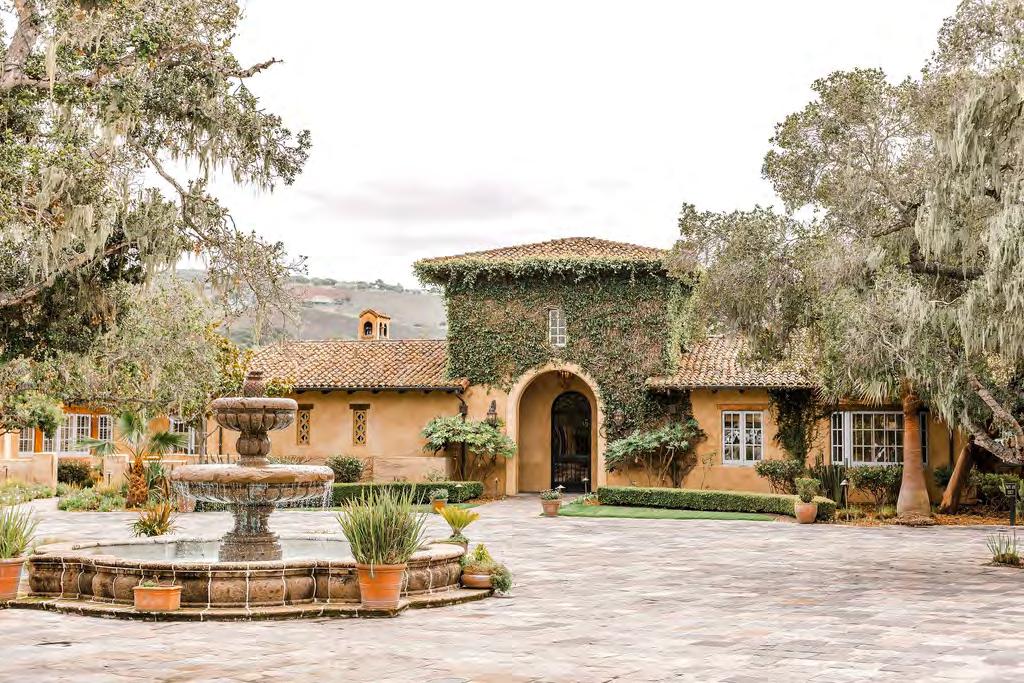

Our investor group of local residents and club members lovingly cared for this Nicklaus gem, but then ran into disagreements and capital calls.
We knew we needed an upscale, private club hospitality firm that invested for the long-term. We’ve found that partner - Concert Golf Partners is a breath of fresh air!

Many esteemed clubs, such as The Club at Pasadera, choose to partner with Concert Golf Partners as the best approach to preserve and enhance their clubs.

Industry veteran Brian Armstrong leverages over 25 years of experience in club management, leadership, and team coaching to empower hospitality businesses. As the founder and principal of Armstrong Consulting, he offers services ranging from executive recruiting to team coaching, strategic consulting, and educational programs. He also founded the AC Hospitality Institute, which revolutionizes hospitality education with its unique training program. This initiative equips managers with essential skills to excel in the dynamic private club industry, ensuring effective team leadership. For more information, visit Armstrong Consulting: barmstrongconsulting.com
During the COVID-19 pandemic, many managers left the hospitality industry, leaving a significant gap in the workforce. While some are returning from other sectors, the industry still needs over one million people in leisure and hospitality.
With fewer employees and increasing customer demands, hospitality organizations have had to rethink their service delivery. However, many senior managers still use outdated tactics to fill positions rather than adopt a new approach. This presents an opportunity for private clubs, especially nonprofit member-owned clubs, to attract more managers by emphasizing the benefits of working in this sector. It’s time for the industry to shift its mindset and focus on creating and promoting the advantages of working in clubs.
Three-fold approach:
1. Do whatever it takes to become the employer of choice in your area. Provide flexible schedules and a fair, equitable and transparent compensation plan. Change the way you schedule employees. Chick-fil-A made news recently by offering a three-day workweek. Are you scheduling and paying team members based on historically busy shifts? Most ride-sharing companies pay surge pricing. Clubs should change their pay structure to pay more when volume is high.
2. Provide a culture of learning and growing. Most managers need more education. Some managers have been overpromoted and overpaid since the end of the COVID-19 pandemic. Complaining that these managers are not skilled and their pay is too high for their skill set doesn’t move the needle forward. The number one request from mid-level managers leaving an organization was more training, precise goals, clear objectives and a more attainable career path. You have to develop a training program for entry-level and mid-level employees that meets them where they are and teaches them in a way they learn.
3. Recognize that even if you are exceptional with No. 1 and No. 2, good people will leave your organization.
I have the pleasure of speaking with students and student chapters of the Club Management Association of America (CMAA). The number one challenge students mention is how difficult the club job market is. Are you doing everything possible to leverage this fantastic talent base?
The top challenge we hear from young managers looking to progress in the industry is the disparity in pay. They feel they are underpaid at their existing club. When I speak to club leaders, both paid and volunteer, they tell me they can’t afford to increase staff pay. Most mid-level managers feel they can only be fairly compensated by leaving their club for a higher-paying job.
We are seeing a significant shift toward internal education and coaching. If your club has an internal education and coaching program, promote it. It shows a commitment that should place your club as an employer of choice in the region (if not nationally). If your club isn’t set up for internal education and coaching and you don’t have the time or resources to build an internal program, you must go outside the organization to gain these services.
Trends in internal education – Microlearning, technology and gamification
1. Microlearning is presented in small bursts and is easily digestible. Microlearning classes can be bundled to provide depth and breadth of new information.
2. Technology allows education to happen anywhere anytime, allowing the club to meet employees where they are.
3. Gamification is popular with younger employees. Tying learning to a fun reward is easier with a consistent and automated rewards program.
The advantage of an internal education platform is the ability to customize the education to your brand and culture. The advantage of outsourcing education is quick deployment to your team.
The club industry has a lot to offer employees. Hard work and dedication can provide a stable work environment with exceptional benefits. We owe it to the next generation to improve our processes and build programs that ensure a steady pipeline of new employees while leveraging our skills to keep as many good employees as possible. BR
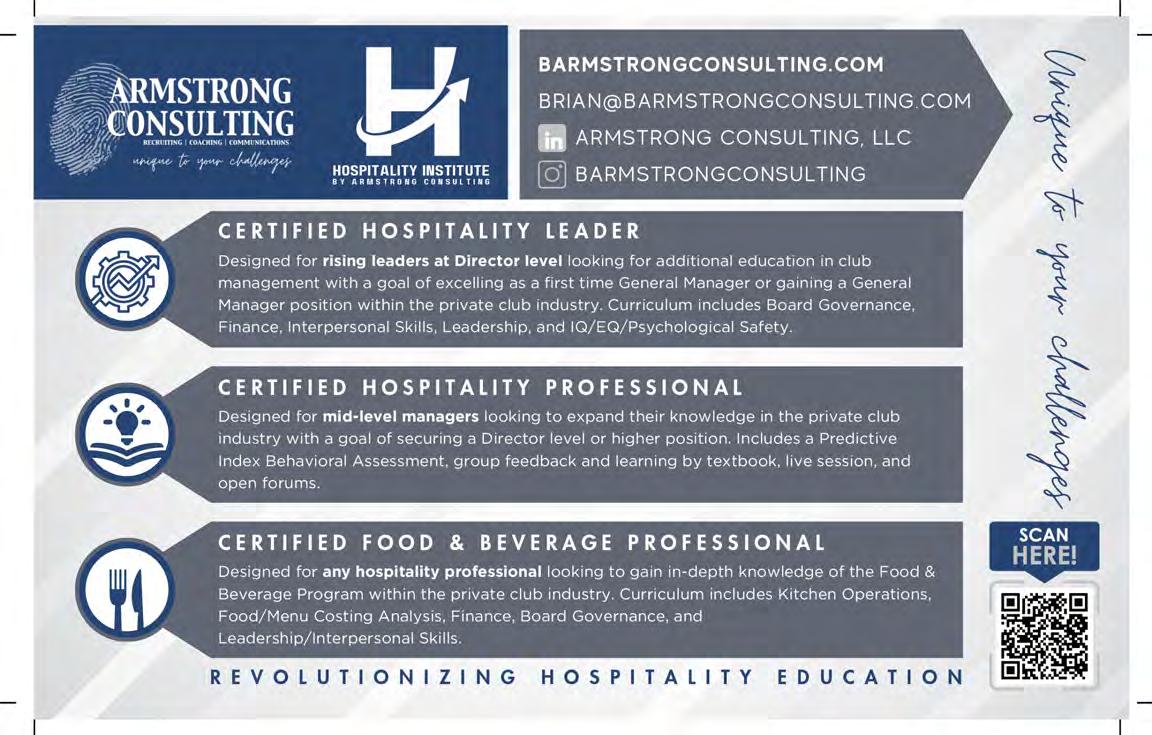

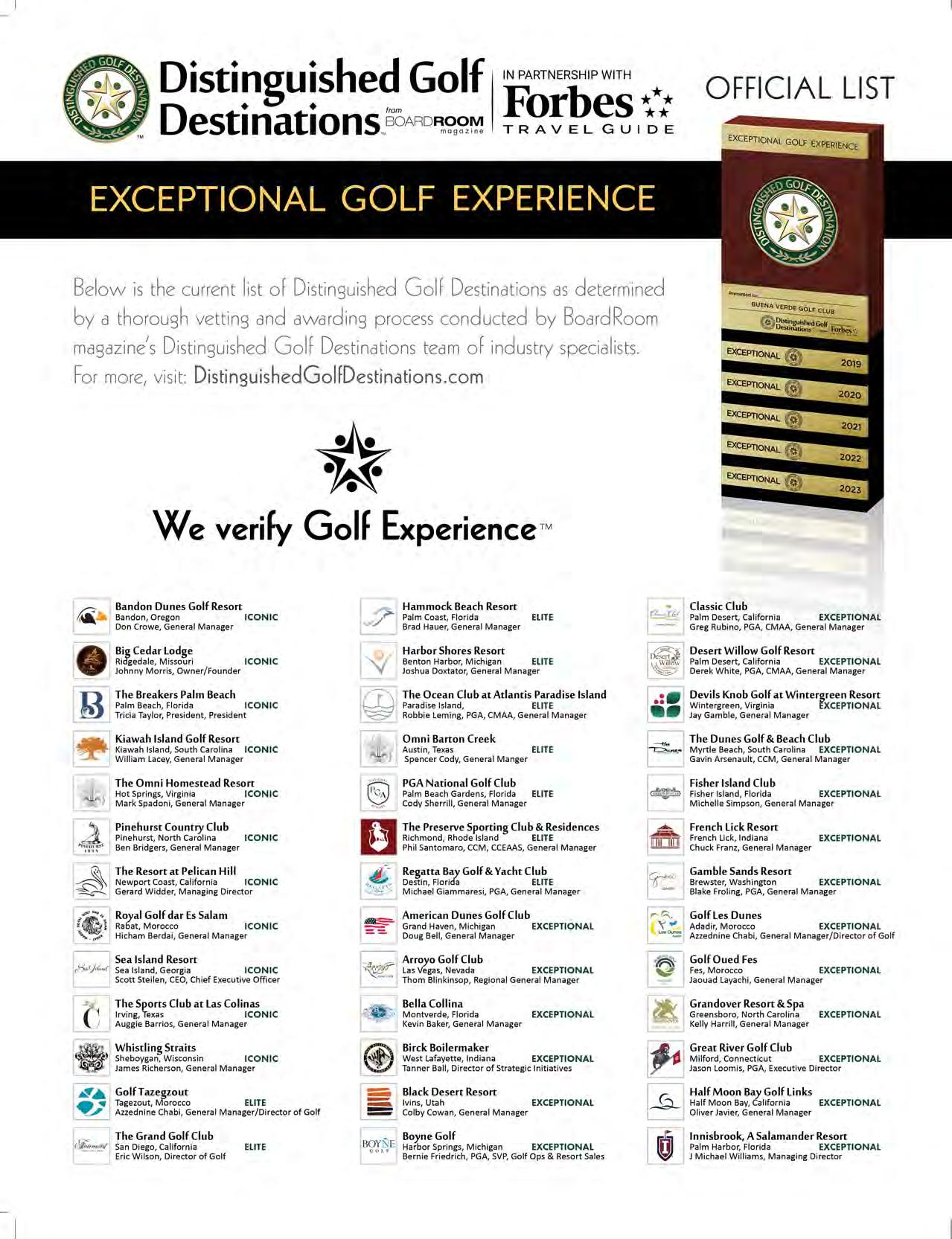
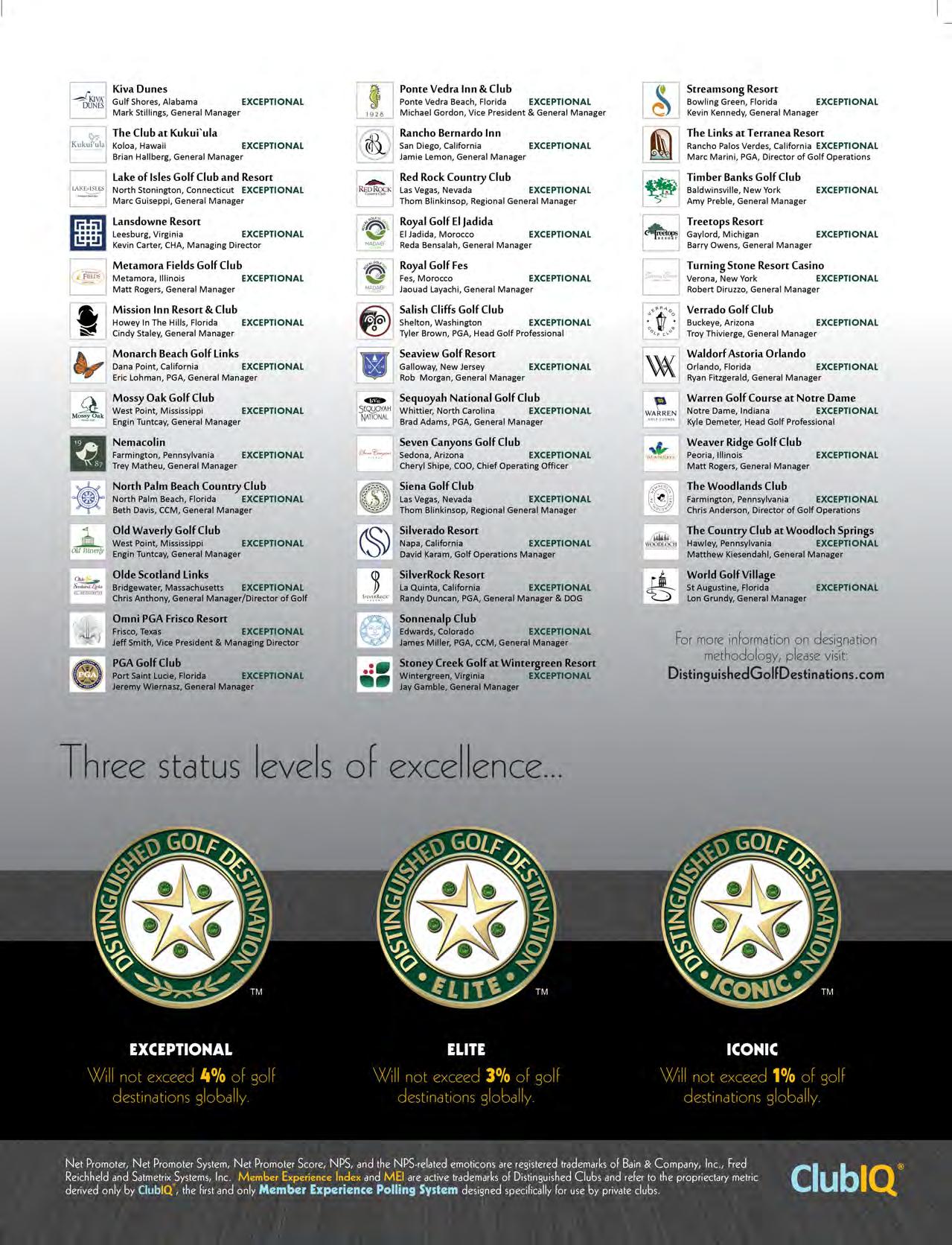
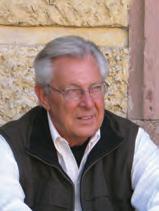
DAVE DOHERTY
Dave Doherty is CEO and founder of the International Sports Turf Research Center, Inc. (ISTRC) and holds three patents for testing sand- and soil-based greens. He can be reached at (913) 706-6635 or via email: daveistrc@hotmail.com
OK … we’ve had hundreds of meetings. We’ve done our homework. We’ve selected an architect and a construction company and chosen the type of grass for surfacing or resurfacing our greens.
We’ve had the available sands analyzed frontwards and backwards, upside down and inside out. We have lab certification of the physical properties for our possible different root zone mixes, using each of the sands with both organic materials and inorganic amendments in ratios of 100/00, 95/05, 90/10, 85/15, 80/20 and sometimes 75/25.
We’ve crossed our t’s, dotted our i’s and are ready to proceed with our project with great anticipation and maybe a little apprehension.
We have chosen a mix of 90/10 based on many factors: Physical properties that meet USGA-recommended specifications, monetary issues, quality of irrigation water, type of grass selected and surface air movement.
On the chosen date, the construction company begins carefully floating our selected 90/10 ratio greens mix into the greens’ cavities. After floating the mix into the greens’ cavities, the construction company or the grounds crew will water the mix to help it settle and to add some firmness before seeding or sodding. In many cases, this is all that is done when firming up our greens mix, and in many cases, this limited procedure is not enough.
Since we selected a light 90/10 mix, we must work harder to settle or firm up our new greens. Additional watering as well as extensive rolling is required.
Many courses that have used a lighter mix such as a 90/10 will need to water extensively and roll the greens with a twoton roller until the desired firmness is achieved.
This watering and rolling process is normally done after the greens’ cavities have been filled and shaped. If the superintendent or grow-in specialist is not familiar with bringing in greens of the lighter mix, this last step of firming before seeding or sodding can be intimidating.
During the planning and execution process, we have formed a mental picture that we must be very, very, very careful not to modify the greens mix. Extreme caution is needed so that the drainage system is not compromised. This mental picture carries over to a feeling of not bruising or hurting the mix with anything mechanical; to a less expe-
rienced person, it can be scary to execute.
A course I have worked with for many years and has a reputation of having some of the finest greens in the world compacts newly built greens in four segments, each of 3-inch increments.
After the drain system and gravel are in place, three inches of greens mix is added/floated into the greens’ cavity, watered and compacted using a vibration method first for the 9-to-12-inch depth.
This process is continued three more times for the mix at the 6-to-9-inch depth, the 3-to-6-inch depth and the surface-to-3-inch depth. Once seeding or sodding is completed, these greens are ready for play and with very little settling over the next few years and with the proper agricultural practices, very little change over the life of the greens.
Removing the top 3 to 4 inches when regressing, the same watering and compaction procedure should be executed before seeding or sodding. BR
1. Planning: Architect and construction company selected, grass type chosen.
2. Sand Analysis: Various sands analyzed; lab-certified root zone mixes considered.
3. Mix Selection: 90/10 mix chosen for its alignment with USGA specs and other factors.
4. Preparation: Construction starts, floating the mix into greens’ cavities.
5. Firming Process: Extensive watering and rolling performed to firm the mix.
6. Compaction: Greens compacted in 3-inch layers using vibration methods.
7. Finalization: Greens seeded or sodded, ready for play with minimal settling.
8. Maintenance: Remove top 3 to 4 inches and repeat watering and compaction for regrassing.

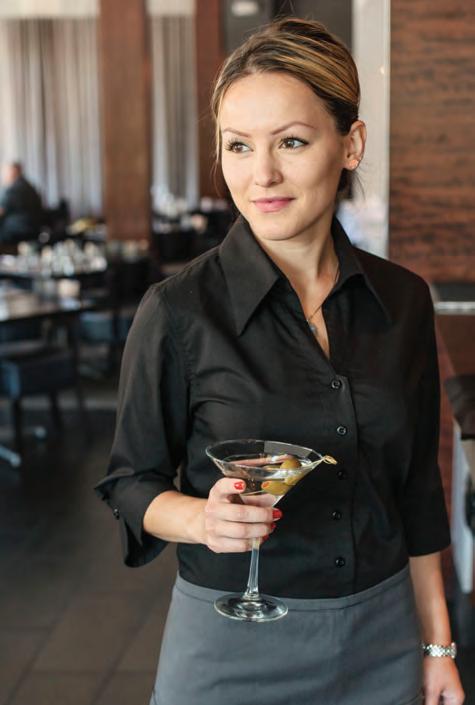



ANDREW HARTSOCK
Andrew Hartsock (ahartsock@gcsaa.org) is editor-in-chief of GolfCourseManagement magazine and director of publications for the Golf Course Superintendents Association of America.
As 3D printers become more affordable and the technology more approachable, golf course maintenance workers find more and more applications for them.
‘It’s like printing money’
Hector Velazquez — yes, that Hector Velazquez, the YouTube technician influencer, creator of “Hector’s Shop” and the technical as well as creative force behind (among other things) GCSAA’s “Inside the Shop” video series — is a 3D convert.
For about two years, Velazquez has been using a handme-down printer and “playing around” with 3D printing, and he continues to be amazed by its applications.
“It’s like printing money,” gushes the technician celebrity and 2018 Budding Award winner, who also is a regular, not to mention wildly popular, presenter at GCSAA’s Conference and Trade Show. “It’s one of those deals where I was like, ‘OK, how come we haven’t gotten into this before?’ To see something literally printed before your eyes … I 3D-printed a crescent wrench. It wasn’t that I printed the parts, then put it together. It literally prints a crescent wrench. It works off the table. That’s crazy, right? I’m thinking, ‘This is nuts. There are so many things you can do with this.’ ”
Like what?
Well, while the possibilities are endless, there seem to be two approaches to 3D printing.
Marcus Blech, three-year GCSAA member. Mentioned in Part I. Do we need full identification in the first mention of him in Part II?The more difficult path — actually fabricating something out of nothing — is the one Marcus Blech, a former assistant superintendent at Coyote Creek Golf & RV Resort in Sundre, AB, Canada, who now tends to municipal sports fields, took with his flymo throttle lever. By carefully measuring and copying an existing part, Blech created a suitable copy in computer-aided design software. In this case, Blech worked in Tinkercad, a free, popular title that is powerful yet approachable enough that it’s often the CAD software of choice for school classrooms.
“I wouldn’t say it’s a steep learning curve,” says Blech, a three-year GCSAA member. “I first had to learn how the software works, then just started building shapes in Tinkercad. That took the longest. That took probably a good two
hours. Then there was some trial and error. Sometimes they don’t print out exactly as you think they should.”
The discrepancy in Blech’s case was traced to the slicing software, or the step between the CAD and the print. After a design is made in CAD, that model goes to a “slicer” (there are several free versions available) that, true to its name, takes the completed 3D design and slices it down, telling the printer what and where to print on each layer.
But one needn’t fool with CAD at all. The second path to 3D-print success skips that step. There are millions — no joke — of 3D print files readily available online. The largest repository, Thingiverse.com, boasts nearly 2 million downloadable models. Most contributors make the files free but restrict them to noncommerical use: Users can print and use all they want but can’t sell them.
Does anyone really need a 3D-printed, articulated octopus (the seventh-most-liked model on Thingiverse) or a Baby Groot (No. 15)? Of course not.
But Velazquez continues to be astounded by all the helpful models he has stumbled upon — and printed. While there are countless gazillions of geegaws and doodads available from Thingiverse (or the scads of other online sources, some free, some pay-to-print), there are also oodles of things whose utility is obvious.
JR Wilson, equipment manager at Noyac Golf Club in Sag Harbor, N.Y., and a nine-year association member. Mentioned in Part I. Do we need full identification in the first mention of him in Part II?“When I got my printer from JR, I was like a little kid,” Velazquez says. JR is JR Wilson, equipment manager at Noyac Golf Club in Sag Harbor, NY, and a nine-year association member.
“You can download all these files for free. I’m using all this 3D-printed stuff now. I have a 3D-printed drill bit holder. I have wrench holders all 3D-printed, a hex bit holder, vernier caliper holders, aerosol can holders. OK, how realistic is this? Is this just something that’s cute, that you print and, there you have it, it’s just junk?
“Dude, it’s been well over a year now that I’ve had these wrench holders. I still use them in my shop every day. Pliers holders — still have that. You add all this up, what would it have cost me to buy all this stuff? It’s just nuts. It would have been well over $200 to buy this stuff from Snap-on or NAPA
or AutoZone. I bought a spool of filament from Amazon for, like, 30 bucks. And I still have some from the spool left over. I could print it all over again.”
Wilson adds: “I’ve made a bunch of things — tools, parts bins, tool holders — that just make my job easier on a daily basis. There are so many things you can do with a 3D printer that are great for golf course maintenance.”
Truth be told, there’s a third path to 3D happiness, too, that’s a combination of the other two. Users can start with a base model, either fabricated in CAD or downloaded, and customize it. Parts bin doesn’t quite fit in that drawer? Stretch it in software and print it again. Cup holder doesn’t quite fit on the fairway mower? Tweak it and make it fit.
Another good example comes from the Canadian father-son duo of Greg and Will Hollins. Greg Hollins, Canadian GCSA master superintendent, GCSAA Class A superintendent and eight-year GCSAA member, and his son, Will, had a successful entrepreneurial run designing and printing “small solutions for the golf course turf maintenance industry.”
Key Components 3D Printing and Design’s flagship product was a sprinkler-head key, available for Toro and Rainbird sprinkler heads, that was custom-designed to be light, pocket-sized, durable and affordable. The pocket keys could even be customized with, say, a course’s logo.
The Hollinses sold the keys to dozens of buyers in Canada and in more than a handful of states before shuttering the company. They quit not because the idea was impractical but because the elder Hollins changed jobs and the younger headed off to turf school at Olds College, rendering them too busy to tend to the store.
“Dude, your head starts spinning with what you can do,” Velazquez says. “I see this now as, ‘OK, why doesn’t every shop have one of these?’ When it was new technology, people would freak out. It was expensive at first. Now it’s becoming a common thing.”
It would seem that three-dimensional printing could be on the verge of a big breakthrough in golf course maintenance.
Consider the arc of the use of unmanned aircraft systems — you know, drones — on golf courses. Just a few years ago, drones were expensive and impractical. Few folks could afford them, and their utility in the golf course world was limited. Today, they’re cheap(er) and easier to fly, and the more people use them, the more uses they find for them.
It’s impossible to see, of course, what might be next for 3D printers as they become cheaper and more powerful, but multiple glances into the crystal ball reveal a common vision.
“I think it’s only a matter of time before manufacturers make plans available online,” Wilson says. “What if you’re trying to make a Toro (irrigation) head key? You’re tired of losing them. It’d be cool if Toro would sell you a thumb drive or let you download a file where you could print as many as you wanted. That’s the thing I see coming. I’m not sure when, but it’d be neat to do that.”
Cory Phillips, equipment manager at Atlanta Country Club and nine-year GCSAA member. Mentioned in Part I. Do we need full identification in the first mention of him in Part II? Cory Phillips, equipment manager at Atlanta Country Club and nine-year GCSAA member, says by way of answer, “I think it depends on demand. All it will take is one manufacturer doing it, then all the others will have to do it, too. But I think it’s coming.
“I think manufacturers, if supply chains keep doing what they’re doing, individual workers are going to find it harder and harder to source the parts they need. And it’s good for the manufacturers, too. Instead of stocking a lot of small, plastic parts, you can just sell the file and you can print the part yourself. From a technician standpoint, I can say I have all their plastic parts in my storeroom. That’s where I see this going.”
Even if that day’s in the unknown future, today’s users have more than enough to keep their printers humming.
“There’s just so many things you can find or come up with to make your job easier,” Velazquez says. “Literally for pennies and a little bit of time, you can get started overnight, come back in the morning, and you’ve got a bunch of parts printed out. Once you get into it, it’s just endless. If you put your mind to it, you can do all kinds of things.” BR
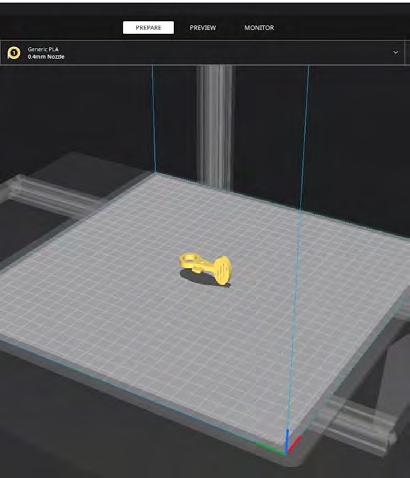




When sub-par construction materials or methods are used, putting green performance may suffer.
The term “USGA green” is often used to identify a green built according to the USGA Recommendations for a Method of Putting Green Construction. Unfortunately, this term is often misused to describe any putting green built with a sand-based rootzone. While all greens that meet USGA construction recommendations are built out of a sand-based rootzone, it is important to recognize that not all sand-based greens are “USGA greens.” This article will point out some key characteristics of a true USGA green.
• A USGA green is built with 12 inches (+/- 1 inch) of sand-based rootzone mix above a minimum 4-inch layer of gravel over a network of drainage pipes. USGA recommendations also include specific guidelines for the sand and gravel used in construction.
• The sand and gravel specifications have intentional variability built in and are included so that the rootzone mix has characteristics important for putting green performance. These characteristics include infiltration rate, moisture retention, aeration porosity and the propensity to compact appropriately. Just because a sand-based rootzone mix is used does not mean that a green was built according to USGA recommendations or will perform well. The details of the mix and gravel matter.
• The depth of the rootzone mix also matters. USGA recommendations call for a uniform 12-inch rootzone depth (+/- 1 inch) throughout the putting green. The 2018 Tips for Success document includes a discussion about how some courses have successfully built putting greens with a variable depth rootzone, even though this method does not conform to USGA recommendations. It is important to understand that this option calls

for more rootzone material in low areas of the greens (> 13 inches), and less mix in the higher areas (< 11 inches). Oftentimes when last-minute changes are made to putting green surface contours the opposite occurs and less mix ends up in the lows and more mix is placed on higher areas. This should be avoided at all costs; otherwise, the lows can stay wet and the highs will dry out even faster.
• The drain lines in the floor of a USGA green should be no more than 15 feet apart and extend to the putting green cavity wall. Drainage pipe should also be placed along the cavity wall in low areas or drainage exit points. This feature is often called a “smile drain.” The drainage pipes should have a minimum diameter of 4 inches and the trenches should be at least 6 inches wide and 8 inches deep to allow for gravel to surround the pipes. Flat pipes may also be used and their placement should follow all the other recommendations.
Golf courses have been building putting greens according to USGA recommendations for decades with great success. The recent surge in renovation work should put many courses in a good situation for years to come, but with putting green construction, it is important to dive into the details.
Recognize that building a sand-based putting green can be far different than a USGA green and performance will often reflect that. If you are considering a putting green renovation project or new construction, contact your regional USGA agronomist to help guide you through the materials selection and construction process. BR
Central Region Agronomists: Zach Nicoludis, Regional Director – znicoludis@usga.org
Paul Jacobs, Agronomist – pjacobs@usga.org
Information on the USGA’s Course Consulting Service
Contact the Green Section Staff
Published with permission of the USGA


Will removing this tree in the landing area affect the Course Rating or a golfer’s Handicap Index? It’s always a good idea to ask your Allied Golf Association about the impact of any design or maintenance changes.
An unnamed acquaintance once told me, “Never make a putt if you don’t have to.” This was his not-so-veiled way of explaining how he managed his Handicap Index.
“Management strategies” like this one are frowned on by most golfers and certainly not endorsed by those of us working at the USGA. Golfers of any skill level can compete against each other fairly when they have a Handicap Index and are playing on a rated course. This is part of why golf is such a great game. Because the handicap system is such an important part of setting a level playing field – especially in competitive events – it’s good for superintendents to understand how course design, maintenance and setup can affect Course Rating and a golfer’s Handicap Index.
Your local Allied Golf Association performs course ratings. AGA course raters are dedicated to traveling around their respective regions to evaluate and reevaluate golf courses based on a long list of criteria, including design and maintenance factors. They determine the Course Rating by assessing the effective playing length of the golf course and the obstacles and challenges scratch players face in and around the landing zones and greens.
The Course Rating represents the score a scratch player, essentially a Handicap Index of 0.0, should achieve when playing well on a golf course under normal course and weather conditions. For example, a Course Rating of 71.8 would equate to a scratch player’s expected score of 72 for a good round.
A course’s Slope Rating represents the relative difficulty for players who are not scratch players compared to those who are. Increased playing length and difficulty of obstacles impact higher-handicap players more than lower-handicap players. Therefore, a higher Slope Rating means the course is relatively more difficult for higher-handicap players than for lower-handicap players. For reference, a Slope Rating can range from 55 to 155 and a course of standard difficulty has a Slope Rating of 113.
The key terms for superintendents to focus on in the definitions of Course Rating and Slope Rating are length, obsta-

cles and challenges. Let’s look at how these items can affect the Ratings and ultimately a player’s Handicap Index.
Once Course Ratings are determined by your local AGA, it is important to consistently set up the golf course within 100 yards of the overall rated length each day. I’m not suggesting this is something to obsess over, but it should be part of your daily course setup considerations. If some holes have tees moved forward on a particular day, moving the tees back on other holes can keep the course close to its rated yardage.
The challenge for superintendents is finding a balance between dispersing traffic around the course and staying relatively close to the rated length. Keep in mind that the effective length of a golf course has the most impact on Course Rating. If you’re going to change the length of the course or add features that may change the effective length or how the hole is played, it is important to contact the AGA to determine if a re-rating is necessary.
The location of trees, bunkers, water features, forced carries and other obstacles in or near landing areas for scratch and bogey players impact the Course Rating and/or Slope Rating. If you plan to add, remove or prune trees that are significantly in play, consult with the AGA to evaluate the potential implications. The same goes for work on bunkers, water features or other obstacles on the course.
If you make significant changes to normal rough height or green speed, it’s worth asking your local AGA if that will affect the rating of the course.
How fast are your greens? How tall is the maintained rough? How deep are the bunkers? Is there tall grass around the edges of the bunkers? How narrow are your fairways and approaches? Course raters must answer these questions as they evaluate the challenges golfers will face when playing your course. The AGA will typically send a questionnaire to ask what normal conditions are – e.g., green speeds and heights of cut – before the rating team comes out. If you
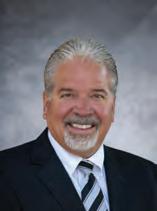
Duncan Reno, CCM, CCE is the general manager/chief operating officer at Del Rio Country Club. He can be reached at (209) 341-2401 or via email: dreno@delriocountryclub.com
Have you ever had a well-developed and thought-out plan die because of poor communication? Had your message twisted because the reality didn’t match the perception? Had long-range plans and efforts to sell a project that you knew would enhance the club die because of the wrong message?
Constant and consistent communication of club objectives, philosophies and methodology should be normal. Find ways to keep the six key topics at the forefront.
Board’s overall objectives
• Provide oversight and strategic guidance to the club
• Ensure and grow the club’s net worth—Keep reinvesting in the club
• Ensure a healthy and consistent financial position— Three Bucket System
• Ensure continuous enhancements to member experience through new and care of assets
• Ensure consistent and methodical club governance practices
• Ensure effective communication with the membership.
Maintain a vibrant vision filter—that operational and long-range planning decisions and projects must be achieved to be approved.
• Forward-thinking clubs must reinvent themselves to fit the modern needs of their members.
• The energy in clubs is vastly different—much more upbeat. This is not our grandfather’s private club.
• Members are looking for activities that fit their time-constrained social lifestyle.
• Decisions are not based only on our ROI but ROE—”return on experience.”
• A chance to reinvent ourselves and provide members with what they seek: an unparalleled experience.
• Investing dollars and resources into enhancing the club experience creates a vibrant and energetic atmosphere where members want to spend their time and invite their friends to join them.
Have a detailed and communicated process for how things get approved at the club
1. Brainstorm ways to enhance the member experience, add value, create activity, achieve the vision
2. Board retreats—exposure to other clubs and their offerings
3. Understand industry trends and evaluate them
4. Have involved staff in their respective fields to understand the leading trends
5. Gather information from club committees on the wants of the membership
6. Develop and prioritize a master plan of LRP elements that achieve the club’s vision
7. Determine targeted dates for each element (5-10 years)
8. Develop a comprehensive plan for the current project
a. Define why it will enhance the quality of a membership
b. Determine the design and layout
c. Estimate the total cost of the element
d. Present concept drawings if needed
e. Define the timing of construction
f. Develop and determine funding
9. Deal with opposition
10. Communicate with the membership.
Develop a current list of master plan elements: A list of projects and enhancements that propel the club to new levels over 5 to 10 years. Completely vetted and brainstormed as potential strategies to boost memberships, improve member services, and upgrade and add to club facilities.
Club governance: Have a clear philosophy on how the club is governed. Board members are the best people to decide what is best for the club for one main reason: They have ALL the information to make the best decisions. Committee members are in the loop and provide much of the needed information along with the pulse of the membership, so we try to share much information with the committees. We can’t ask 800 people what we should do. The board is elected to make these decisions.
Club financial position: The club should have a clear written philosophy for managing its financial position. How this philosophy relates to operational strategies, asset replacement strategies, debt management and growing net worth. Communicating this philosophy in different ways throughout the years is critical when trying to gain or maintain board credibility when you tell the membership we CAN afford it. BR


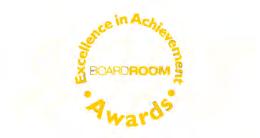



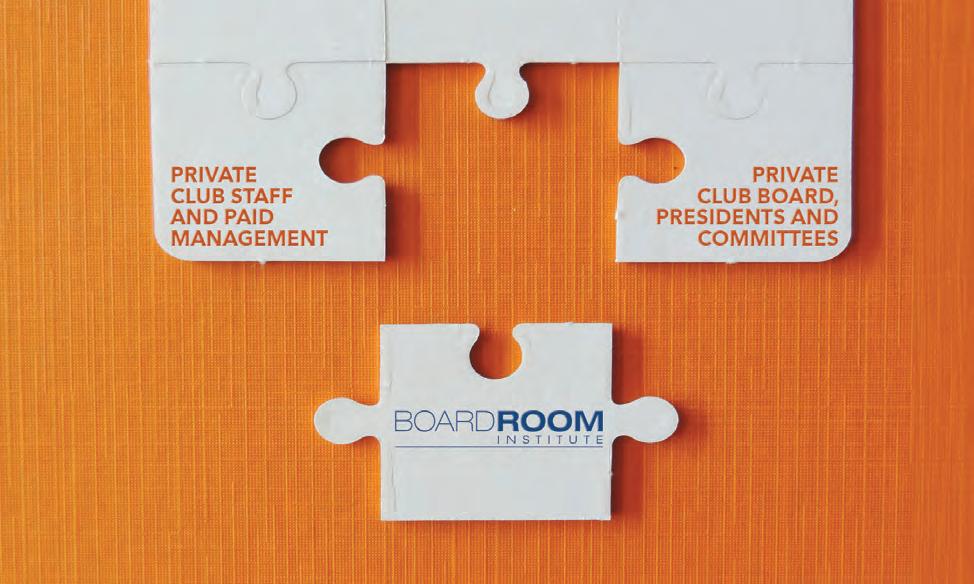
BoardRoom Institute is the only user-friendly, online learning center designed specifically for private club’s board and committee members that sets out to create better clubs through collaborative governance and one-on–one training by industry experts.
BoardRoom Institute means well-informed board members who are better equipped to make meaningful decisions, develop strategies with less micromanagement.
• Clarifying roles & responsibilities
• Setting process & best practices
• Understanding the club business model
• Shared playbook between the board and the GM/COO
• And more.
BoardRoom Institute is your solution:
• Customizable to your club
• Non-technical uses friendly
• Accountability: verification users have seen the course
• 24/7 access
• Over 70 interactive courses and training.


one-time set-up fee


PRIVATE CLUB GOVERNANCE
COMMITTEE ROLES & RESPONSIBILITIES
2.1 Bylaws - The Relationship Between Governance & Members Randy Addison
2.2 What Makes Good Board Members and Cautions to Aviod Kurt Kuebler
2.3 Role of the President & Executive Committee
Michael Scimo
2.4 Role of the GM/COO Robert Sereci, CCM
2.5 The Collaberative Governance Model
Tarun Kapoor
2.6 Ethics Brad Steele
2.7 Protecting Your Clubs Private Status Brad Steele
2.8 Protecting Your Clubs Tax Exempt Status
2.9 Setting Goals and Objectives
2.1 Norms and Standards
2.11 Board Orientations
John Schultz
John Schultz
John Schultz
2.12 Why Members Join Your Club and the Relevant Importance? Jim Buttler, Ph.D.
2.13 Matching Potential Members to Club Culture John Schultz
3.1 Committee Governing Protocols Tom Wallace
3.2 Bylaws and Governance
Randy Addison
3.3 Nominating Committee / Tactics & Strategies Frank Vain
3.4 Role of the Secretary Tarun Kapoor
3.5 Role of the Treasurer / Finance Committee Kevin Reilly
3.6 Role of the House Committee Gregg Patterson
3.7 Role of House Committee Engineering / Maintenance Gordon Welch
3.8 Role of the Golf Committee Peter Bevacqua
3.9 Greens and Grounds Committee Rhett Evans
3.1 Role of the Membership Committee Rick Coyne
3.11 Role of theTennis Committee John Embree
3.12 Board Orientation
3.13 Leadership Development Committee Tom
3.14 Role of the Search Committee Dick Kopplin
MANAGEMENT
INGREDIENTS OF SUCCESSFUL CLUB BOARDS
5.1 Role of the GM / COO
Sereci, CCM †5.2 Role of the Controller
Reilly 5.3 Role of the Director of Golf / Golf Professional
Bevacqua 5.4 Role of the Golf Course Superintendent
5.5 Role of the Tennis Professional John Embree
5.6 Role of the Club Manager / Assistant General Manager Gregg Patterson
5.7 Role of the Membership Director Rick Coyne
6.1 Strategic Finance in a Data Driven Club Jim Butler
6.2 Capital KPIs
6.3 Club Capital Reserve Studies
6.4 Engaging Past Presidents
6.5 Managing the Renegade Director
6.6 Risk Management for Private Clubs
6.7 Effective Oversight by Volunteer Leadership VS Micromanagent
6.8 Managing the Agenda - Good Habits of Effective Boards
6.9 What Is GCSAA?
6.1 PGA , WHO WE ARE
6.11 Sexual Harrassment / Member Misconduct
6.12 Security at Your Club
6.13 15 Best Practices
Jim Butler
Jim Butler
Gordon Welch
Bill McMahon
Phi Harvey
Gregg Patterson
Kurt Kuebler
Rhett Evans
Peter Bevacqua
Gordon Welch
Kevin Peters
Tom Wallace
6.14 Uncontested Elections Tom Wallace
6.15 Board Portals John Schultz
6.16 Crisis Management
Saben
6.17 Staff Engagement Surveys Mike Morin
6.18 Member satisfaction surveys and NPS Mike Morin
6.19 GM Performance Reviews Kurt Kuebler

STEVE GRAVES
Steve Graves is president of Creative Golf Marketing. The company specializes in membership development strategies to enhance membership growth, membership retention, and financial success for its private club clients. Contact CGM via email at www.CreativeGolfMarketing.com or 800-526-8794.
In moments of historical significance, spoken words can ignite movements and shape destinies. Take, for instance, Neil Armstrong’s iconic words as he set foot on the moon in 1969.
His declaration, “That’s one small step for man, one giant leap for mankind,” resonates through the annals of time. Yet, debates persist about including the word “a” before “man,” suggesting its absence might diminish the impact of his message.
Similarly, on Jan. 20, 1961, President John F. Kennedy delivered an inaugural address that sought to galvanize the nation and articulate a vision for peace in the nuclear age. Among his stirring words was a call to action: “Ask not what your country can do for you – ask what you can do for your country.”
This rallying cry challenged Americans to contribute selflessly to the greater good, fostering a spirit of unity and patriotism.
Drawing parallels between historical moments and the present, it’s evident that the essence of Kennedy’s message resonates beyond its original context. Private clubs can harness this spirit of service and communal responsibility.
Many club consultants advocate for a shift in mindset among members, urging them to view themselves not merely as consumers but as stewards of their club’s legacy. However, this call to embrace ownership has yet to yield the desired transformative impact. While it has not fallen on deaf ears, it has yet to spark the collective action needed to revitalize the essence, importance and privilege of club membership.
So, let us heed the lessons of history and infuse Kennedy’s immortal words with contemporary relevance. Just as some advocate for the inclusion of “a” before “man,” why not inject the word “club” into Kennedy’s plea to the nation? “Ask not what your club can do for you – ask what you can do for your club.”
Renowned sociologist Ray Oldenburg coined the concept of the “third place,” a communal sanctuary beyond the realms of home and work. For many, private clubs embody this concept, offering a haven for relaxation, social interaction and rejuvenation. They are bastions of joy and camaraderie, essential for maintaining a balanced life amidst life’s demands.
Yet, despite their noble purpose, private clubs often grapple with internal strife that detracts from their intended mission. Petty grievances and self-serving attitudes erode the sense of community, contradicting the fundamental purpose of these establishments.
Membership retention is a critical concern in the private club industry, particularly in the post-pandemic landscape. While some clubs thrive, others face the challenge of retaining members amidst renewed competition for discretionary resources. A correlation exists between membership longevity and both initiation fees and the club’s culture of inclusivity and enjoyment.
Successful new member orientations hinge upon transparent expectations and a mutual commitment between the club and its members. Each party must understand its role in fostering a vibrant, welcoming community. These specific, outlined and understood expectations, on behalf of both parties, are a critical element of the partnership that comes with a new member joining a private club.
Every decision club leadership makes should prioritize the club’s long-term success. Members must reciprocate this dedication by prioritizing the collective well-being over individual interests. Whether through sponsoring new members, active club participation, respectful behavior or pride in club affiliation, members play a pivotal role in shaping the club’s short- and long-term legacy and destiny.
In essence, the guiding principle for private club leaders should echo Kennedy’s ethos: “Ask not what your club can do for you – ask what you can do for your club.” By embracing this philosophy, members can honor their club’s legacy while ensuring its enduring prosperity for future generations.
In navigating the complexities of club governance and member engagement, let us look to the past for inspiration and chart a course toward a brighter future.
Another simple, yet effective way to view your strategic marketing efforts would be to ask yourself occasionally, “What would JFK do?” You may find the appropriate and important inspiration you desire to share with your membership base. BR
Emad Saedi is marketing content coordinator for Jonas Club Software. He can be reached via email: emad.saedi@jonasclub.com


For clubs, member communications aims to build long-lasting relationships with members based on trust and respect.
Better communications lead to increased member engagement and overall satisfaction. The many instances in which clubs can leverage member communications include gathering member feedback, sending marketing promotions and event announcements, and notifying members of upcoming activities and changes to hours.
Before delving into the role of technology in managing member communications, it’s vital to underscore the human element as a foundational soft skill. Active listening stands as a cornerstone, whether in virtual or face-to-face interactions. It entails attentive listening, comprehension, thoughtful responses and retention of information—a practice essential for effective communication. Mastering active listening enhances attention to detail, fosters empathy with members and enables tailored communication. Moreover, it streamlines operations, such as gathering feedback through member surveys.
Personalization serves as a testament to understanding and valuing your audience. Tailoring messages to fit the preferences of your target demographic cultivates trust and rapport. A simple yet impactful example is an automated “Happy Birthday!” email or text message sent to members on their special day. You can also give personalized recommendations to elevate the member experience. For example, recommend pro shop items based on recent purchases or favorites, or encourage participation in preferred activities.
An advantage of email marketing lies in its precision targeting, leveraging segmentation features provided by your service provider and integration with your club management software. This combination empowers you to craft automated and personalized emails using member data. For instance, members who haven’t visited the club’s dining facilities in recent months might receive an email showcasing the latest culinary offerings coupled with a personalized discount.
Club marketers recognize that marketing is not just about promotions. It is also about creating value for your audience. According to the Content Marketing Institute, 87 percent of marketers use email marketing to distribute their content. This approach not only keeps members well-informed but also enhances sales cost-effectively.
A newsletter is a great way to share valuable content with members whether educational, lifestyle, promotional or a mix, showing you care about your members. Featuring members in your newsletter can build community and increase open rates. One inspiring example is the Country Club of Virginia’s “Far and Wide” contest. Members send photos of themselves wearing CCV-branded apparel while traveling and can get featured in an upcoming newsletter.
For most clubs in 2024, a mobile app for members is more often the rule than the exception. Apps feature communication tools like message inboxes, in-app banners and push notifications, each serving distinct purposes.
The message inbox facilitates various communications, from important announcements to personalized birthday notes, ensuring members stay informed. In-app banners and widgets effectively promote events and deals, aiding marketing campaigns and seasonal offerings.
Push notifications are an invaluable tool for instantaneous communication and time-sensitive updates. These pop-up messages on members’ phones can swiftly convey special offers, upcoming events, course statuses or available activity slots for golf and tennis.
Leveraging geo-location notifications further enhances engagement by allowing clubs to send targeted messages based on members’ physical presence. These messages welcome members when they enter the club or offer discounts as they approach the golf course or move between different club areas. They serve as potent marketing and reminder tools.
Text messaging allows you to send communications in a limited but impactful format. Primarily used for sending booking confirmations, reminders, food order updates, course condition alerts and marketing messages, its brevity ensures instant delivery of essential information. While similar to push notifications in immediacy and length, text messaging often carries a more personal touch, offering a sense of connection and remembrance.
One significant advantage of text messaging is facilitating twoway communication, enabling clubs to engage in real-time conversations with members. As mobile apps increasingly integrate two-way chat features and AI-driven chatbots, text messaging remains a versatile and indispensable tool for maintaining effective member communications.
According to Airship’s study on app retention, app users who receive one or more push notifications in their first 90 days have 190 percent higher average retention rates than those who don’t. The frequency of your communications matters and maintaining regularity and consistency is key. Use insights from reports and analytics to pinpoint optimal timing for sending communications. Employ a friendly tone and incorporate creativity into your content.
Make a good first impression by crafting short, catchy headlines, and don’t be afraid of adding a little humor through emojis where appropriate. Maintain a uniform language and segment your audience carefully. Tailor communications to resonate with each distinct segment, recognizing that one size doesn’t fit all. BR


JACQUE MADISON
Jacque Madison, PGA is a PGA career consultant serving the Gateway and Midwest PGA sections. She can be reached at (612) 852-4910 or jmadison@pgahq.com.
In the realm of private clubs, design extends far beyond physical spaces and amenities. It encompasses the essence of the club’s identity – its vision and values.
However, as we examine the mission statements of top clubs, we often find a lack of clarity and depth overshadowing the importance of purpose-driven design.
I scoured the websites of the top 15 clubs in the two largest markets in my territory and found that fewer than onethird published their mission statement on their websites, and only one published its values.
In contrast, the Ritz-Carlton’s unwavering commitment to service excellence (https://ritzcarltonleadershipcenter.com/ about-us/about-us-foundations-of-our-brand/) exemplifies the power of a well-crafted vision. This article explores how clubs can harness design trends to redefine success by crafting visionary mission and values statements.
When staff and members align behind the mission, vision and values, exceptional things can happen. Most of the mission statements I read were some form of “we aim to be the premiere club in XYZ city, offering our members exceptional golf, dining and social experiences.”
That statement is vague and can be interpreted differently by every club member. When club leaders and staff work together to craft a mission, vision and values that accurately describe what you aspire to be and couple that with values that align everyone with how we treat the club, staff and one another, it is easier to make decisions about everything from employee recruitment and training to long-term strategic planning.
For the design to truly take hold and become part of the club culture, your MVV must be kept top of mind and talked about often. The Ritz is famous for stand-ups where they review one of the steps of service or service values daily. When they reach the end of the list, they start the cycle over again.
Keeping your MVV top of mind by reviewing them at the start of every board, committee and staff meeting is a great practice. It helps to center everyone and remind us what we are working toward and how we are expected to work.
Why do many clubs hesitate to articulate their mission and values publicly? Perhaps it’s a missed opportunity to leverage design principles in shaping member experiences. By unveiling their mission, clubs can embrace transparency and engage members in the process, fostering a sense of ownership and community.
Crafting a compelling vision and values statement is akin to designing a blueprint for the club’s identity. It’s an opportunity to design the fabric of the organization, from modern aesthetics and cleanliness to sustainable practices. By distilling core values into a clear and concise statement, clubs can create a brand identity that resonates with members and reflects contemporary sensibilities.
A well-crafted vision and values statement is the foundation for designing a culture of excellence. It sets the tone for employee engagement, innovation and service delivery, aligning with the latest design trends in workplace culture. Clubs that prioritize alignment with their mission and values create an environment where staff are empowered to embody the club’s brand essence, elevating the member experience through every interaction.
As private clubs embrace design trends to enhance member experiences, the importance of crafting visionary mission and values statements cannot be overlooked. By unveiling their mission, refining the essence of their brand and designing a culture that embodies their core values, clubs can differentiate themselves in a competitive market and create meaningful connections with members and staff. In doing so, they redefine success and pave the way for a future where design drives excellence in the private club industry. BR


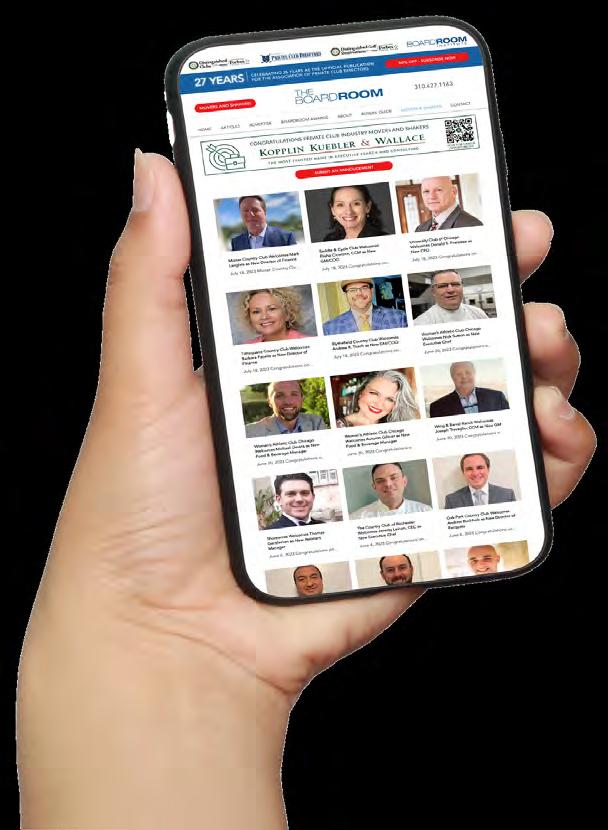

BOARDROOM magazine is promoting advancement in the club industry via its Movers and Shakers section on the website.
This section pays tribute to new placements and advancement for club executives and staff.
In addition to announcements on social media and on the website, these posts are shared through bi-weekly and monthly emails. Scan




Unpleasant surprises, disruptive conduct and legal problems often arise when private clubs fail to vet prospective members thoroughly.
As technology evolves, clubs can access more data and resources to provide a more robust picture of the people seeking to join. However, while clubs must remain cognizant of potential liability or embarrassment that the lack of thorough screening may cause, the admission process must also comply with applicable law.
Let’s face it: most clubs have dealt with members behaving badly. A member’s bad conduct can cause harm to the club’s reputation or, even worse, injury to another member, employee or property. If the club failed to thoroughly vet the member before admission, missing potential “red flags,” the harmed individuals may claim that the club was negligent and should have prevented the misbehaving member’s access to club facilities, members and employees.
In addition to preserving the club’s unique culture and ensuring that each member is the “right fit,” a primary benefit of a thorough vetting process is to mitigate risk. Due diligence before admission can reveal instances of criminal behavior, financial impropriety or unethical and embarrassing conduct that could tarnish the club’s image and erode trust among existing members and the community.
Due process requirements for discipline typically contained in a club’s governing documents often make declining admission at the outset much easier than expelling a member who causes problems after the fact. Through rigorous vetting procedures, clubs can identify warning signs and mitigate the risk of admitting individuals whose actions may jeopardize the club’s reputation. Thus, instead of simply relying on the information a member provides in an application, club leaders must ask themselves whether it is appropriate to not look further into an applicant’s background.
At the same time, clubs must ensure their vetting process is conducted fairly and legally. Federal civil rights laws generally prohibit discrimination based on race, color, religion, sex, disability and national origin in places of public accommodation, such as hotels, restaurants and places of entertainment. State and local laws and ordinances often classify even more characteristics as “protected classes,” such as age, sexual orientation and gender identity. These laws apply to most clubs, and only those that are “truly private” are exempt.
Although club leaders may believe their clubs are truly private because they are not open to the public and have

a 501(c)7 tax-exempt status for income tax purposes, the courts and some state laws establish specific criteria for truly private status for legal purposes.
In Florida, for example, clubs with over 400 members that provide regular meal service and regularly derive revenue through the use of the facilities by nonmembers are not exempt from anti-discrimination laws in evaluating a membership application. Thus, many clubs that consider themselves private remain exposed to possible discrimination claims in the admission process.
To help fend off discrimination claims, each potential member should be considered equally and objectively with other applicants. Clubs can lawfully set their unique standards for admission, and if the applicant appears to be a “bad fit,” the club can decline admission. However, board members and managers of clubs that are not truly private should avoid making membership decisions based on any protected class.
The advice of experienced legal counsel is crucial to assist clubs in remaining highly selective in their member vetting process while also avoiding exposure to potential claims by applicants who are not approved. Best practices include having a well-written application containing express authorization to conduct character and financial background checks, stating that an application may be denied for false or incomplete statements, and containing applicable credit reporting notices and disclaimers. Where possible, clubs should retain a third party to collect and evaluate the necessary background information about the applicant from various sources (both public and private) and eliminate any subjective bias at the membership committee or board level.
A valuable goal of a private club is to cultivate a community of individuals who share common interests and values. A thorough and lawful member vetting process helps clubs uphold their values and culture and maintain a compatible social environment for their members. BR
Michelle Tanzer, Esq. is chair of the Global Club and Branded Residences group at the law firm of Nelson Mullins, serves on the National Club Association board of directors, arbitrates club-related disputes for the American Arbitration Association and authored “The Club Litigation Book: Keeping Clubs out of Court.” Ms. Tanzer can be reached at (561) 866-5700 or by email at Michelle.Tanzer@NelsonMullins.com.
Brian Meanley, Esq., is Of Counsel in the Global Club and Branded Residences group at Nelson Mullins and can be reached at (561) 3436937 or by email at Brian.Meanley@NelsonMullins.com.
BRAD D. STEELE
Brad D. Steele, JD, started Private Club Consultants to provide in-depth legal and operational answers for America’s top private clubs. For more information about PCC, email Brad at steele@privateclubconsultants.net, call/text him at (703) 395-5463 or connect with him at www.linkedin.com/in/BradSteelePCC.
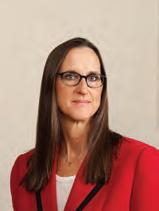
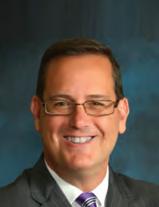
For many club leaders, the Department of Labor’s new overtime exemption rule means a substantial increase in staffing costs –starting now and into 2025.
However, a silver lining could be buried deep inside this new mandate. To fully understand what the DOL did, we must review the changes instituted and their impact on clubs.
Under this new rule, the minimum weekly salary for exempt workers went from $684 to $844 on July 1. Thankfully, that change was not too painful, but the rule provides more. The minimum weekly salary will increase to $1,128 on Jan. 1, 2025. Unfortunately, that will be painful for many clubs. For an employee to be exempt from OT, the employee must meet the following requirements:
1. Be paid a predetermined, fixed salary
2. Be paid $844 per week on July 1 ($1,128 per week on Jan. 1)
3. Meet the DOL’s executive or administrative white-collar exemption (WCE) duties test.
This rule has greatly expanded the number of employees entitled to OT pay, including those making less than $43,888 per year on July 1. Of course, the real issue arises on Jan. 1, when those making less than $58,656 per year will be entitled to OT.
In addition, this new rule changed the salary level for workers under the highly compensated employee (HCE) exemption. It bumped an HCE’s required pay from $107,432 to $132,964 per year on July 1. This wage shoots up to $151,164 per year on Jan. 1. For any HCE to be exempt, the HCE must meet the following requirements:
1. Perform office or non-manual work
2. Be paid at least $132,964 per year on July 1 ($151,164 per year on Jan. 1)
3. Be paid at least $844 per week on July 1 ($1,128 per week on Jan. 1)
4. Meet only one part of the DOL’s executive or administrative WCE duties test.
Thus, employees making less than $132,964 per year on July 1 were entitled to OT – unless they met the requirements of a standard exempt employee. While this may not seem difficult, the HCE exemption only requires the employee to meet one part of the executive or administrative duties test. A standard exempt employee must meet all parts of the executive or administrative duties test. On Jan. 1, those employees making less than $151,164 per year will be entitled to OT –
unless they, too, meet the requirements of a standard exempt employee.
With these salary increases, it may be difficult to see any good news coming from this new DOL rule, but there is (sort of). Naturally, the main concern for clubs is the change in the minimum weekly and yearly pay. Nevertheless, the positive part of this rule is what the DOL did not change – the WCE duties test.
To meet the duties test for the most common WCEs (executive and administrative), an employee must meet the following requirements:
Executive duties test
• Primarily manage a club department
• Supervise two full-time or full-time equivalent employees
• Have a say in hiring/firing employees.
Administrative duties test
• Primarily perform office work related to the management of the club
• Exercise discretion and independent judgment on matters of significance to the club.
Since employees must satisfy salary and duties tests, this new rule can help refocus club leaders on the more difficult aspect of making an OT exemption determination for an employee – the duties test.
Realistically, complying with the salary test is a matter of will. The duties test, though, is a matter of employee responsibilities, and that’s where problems can arise. Regrettably, many employees fail to meet the duties test, yet they are still classified as exempt from OT.
Therefore, clubs should use this new rule to reassess what an employee is paid and what the employee does at the club. Since the new rule did not change the duties test, this review of an employee’s responsibilities, and thus the employee’s OT exemption eligibility, should be significantly easier for all.
It may be a stretch to label it as a silver lining: that GMs can reevaluate their exempt employees with an eye on the duties test. However, GMs who ensure their workers satisfy the duties test will correctly classify more of their employees as exempt and better avoid liability regarding unpaid overtime. Ultimately, that is the true silver lining for any club leader. BR

GREGG PATTERSON
Gregg Patterson is founder and president of Tribal Magic. He can be reached via email: GJPAir@aol.com
ChauWALKqua???
A ChauWALKqua is a Chautauqua evolved. Let me explain.
Chautauqua 1.0—In the beginning
Chautauquas were started in the mid-19th century as mobile, pop-up universities bringing education, guided discussion, bonding activities and entertainment to rural communities. Their spiritual home was the road bringing stimulation, energy and insight to gatherings anywhere and everywhere.
Chautauqua 2.0—The bicycle Chautauqua
The Chautauqua was modernized when, decades ago, CMAA gave the green light to a three-day, pre-conference bicycle Chautauqua at the World Conference. This pop-up university, this mobile club experience followed a now-familiar pattern of four stages: upbrief, ride, debrief, eat.
The secret sauce of the Chautauqua is the interactive discussion, the free-flowing, lightly directed conversations guided by the questioner. Everyone talks, stories are shared, questions get asked, suggestions are made, insights are given and strangers become friends—and lots gets learned about clubdom and life.
CMAA members have shown enthusiasm for this three-day, once-a-year, interactive, “riding and reflecting” Tribal experience for over 20 years. But there are drawbacks to the bicycle Chautauqua—the organizational effort, the weather, the challenge of biking, the pre-conference time commitment and the additional cost.
Another Chautauqua was needed. New was envisioned and a beta test was approved.
Chautauqua 3.0—Beta testing the ChauWALKqua
Acknowledging an unfilled hunger for the Chautauqua experience among conference goers who didn’t bike or didn’t have an extra three days for the ride or couldn’t convince their boards to invest the big bucks in an expensive, bicycle-centric pre-conference workshop, the walking Chautauqua—the ChauWALKqua—was born at the CMAA World Conference in Las Vegas.
The ChauWALKqua captures the essence of the three-day pre-conference bicycle Chautauqua in a free four-and-a-half hour morning session mid-week during the conference. From “riding and reflecting,” a new vision emerged—“walking and reflecting.”
The three primary “chapters” in a Chautauqua experience remained unchanged—a “get to know everyone and prepare for the day” upbrief, a bonding activity focused on the walk and an energized, interactive debrief to discuss what was seen and what it meant.
Here’s how the beta test of the first-ever conference ChauWALKqua worked.
The organizers got approval from the CMAA national team for a beta test of the ChauWALKqua at the World Conference in Las Vegas. After reviewing the week’s schedule, decisions were made about the day of the week, the time of the day and the room assignment for the session.
Pre-registration was required and the numbers were limited to 30 people to maximize the interactive, “everyone talks,” Q&A type of group experience.
An out-and-back walking route was outlined from the meeting room, through the casino and out to the main entrance and lobby. The round-trip timing was about 30 minutes.
Knowing that “caffeine-ated energy refills” would be needed before the upbrief, during the walk and for the debrief, the Royal Cup coffee station was alerted to the ChauWALKquans to ensure that caffeine was available for the walkers.
The questioner—who in this case was the same questioner who did the questioning at the pre-conference bicycle Chautauqua—was selected to facilitate the conversation, ask questions and move the upbrief and debrief discussions forward.
Introductory emails were sent to the registrants outlining the Strip Walk’s purpose, the day’s agenda and room location because the room wasn’t listed on the conference APP because pre-registration was required and walk-ins were a no-no.
The walk upbrief
On walk day, attendees were encouraged to gather early— Royal Cup caffeine in hand—for a “sit around and yap” pre-workshop warm-up opportunity in the Strip Walk meeting room.
The upbrief began with the questioner “interviewing” each of the attendees and asking a few “this is me” type questions.
The “fact questions” came first—name, club, position, years in the business and why clubs.
Then interviewees were asked to name and explain the one word that best describes them and the one that best describes their club.
Lastly, the interviewees were asked to name the one thing they really enjoyed talking about and why.
These “interviews” broke the ice, got everyone talking and gave the walkers a bit of insight into everyone else. The bonding had begun.
The questioner then reviewed the day’s questions of consequence which, in this case, revolved around the Mandalay Bay Resort’s operational culture, whether the property had “cultural coherence” and a “brand” that was clear, obvious and attractive to visitors. The goal was to help people understand the why that guided the design of the architecture, the aesthetics of the property, and the goods, services and programs on offer.
When the upbrief concluded, there were no strangers, no shrinking violets, no more Silent Sams. The bonding experience had begun.
The walk
The ChauWALKquans were told to form groups, go at their own pace, linger lots, take notes and photographs, talk and ponder the hotel’s brand and culture and start walking.
While the ChauWALKquans walked, the organizers and the questioner stayed in the upbrief/debrief room, drank coffee and pondered the ChauWALKquan experience.
The debrief
The walkers saw lots, heard lots, talked lots, pondered lots and absorbed lots. The purpose of the debrief was to unlock the hidden thematic issues embedded in those details and identify the motivating why of the Mandalay creators.
Stockpiled memories were probed and explored by the questioner. Questions were asked, follow-up questions were asked and then more follow-up questions were asked, all in pursuit of a deeper understanding of Mandalay’s culture, its brand and, most importantly, its why.
Reference was made to the article “Leadership Principles from Ted Lasso,” which identified scenes from the series and the leadership issues embedded in each of those scenes. The purpose: use of deductive thinking to find the first principle behind “what is.”
Focus was then given to the article “A Guide to Taking
one piece of professional advice you’d give to an upwardly mobile professional in the club business?” and “What’s the one piece of personal advice you’d give to an upwardly mobile club professional?” Everyone gave rapid-fire answers.
As time ran out, the questioner asked attendees to evaluate the first-ever ChauWALKqua experience using the questioner’s standard debrief template—WWW-EBI (What Went Well—Even Better If). All agreed that the beta test of ChauWALKqua was a victory both as a bonding experience and a reflective opportunity.
Attendees gave high fives and energized goodbyes and rushed to the next seminar. Start walking and keep talking
A Chautauqua—a mobile university—will exist whenever people do things together, ask substantive questions and ponder.
Put together an organizer, a questioner, an upbrief, an activity and a debrief and bonding will take place, education will happen and a Chautauqua will be born.
The activity isn’t important. It can be golf, bocce, bowling, tennis, bridge or a book club. The bonding opportunity and the “guided” reflective experience are important.
Think Chautauqua. Create a ChauWALKqua. Start walking. Get “bonded.” Begin reflecting.
And enjoy the journey. BR
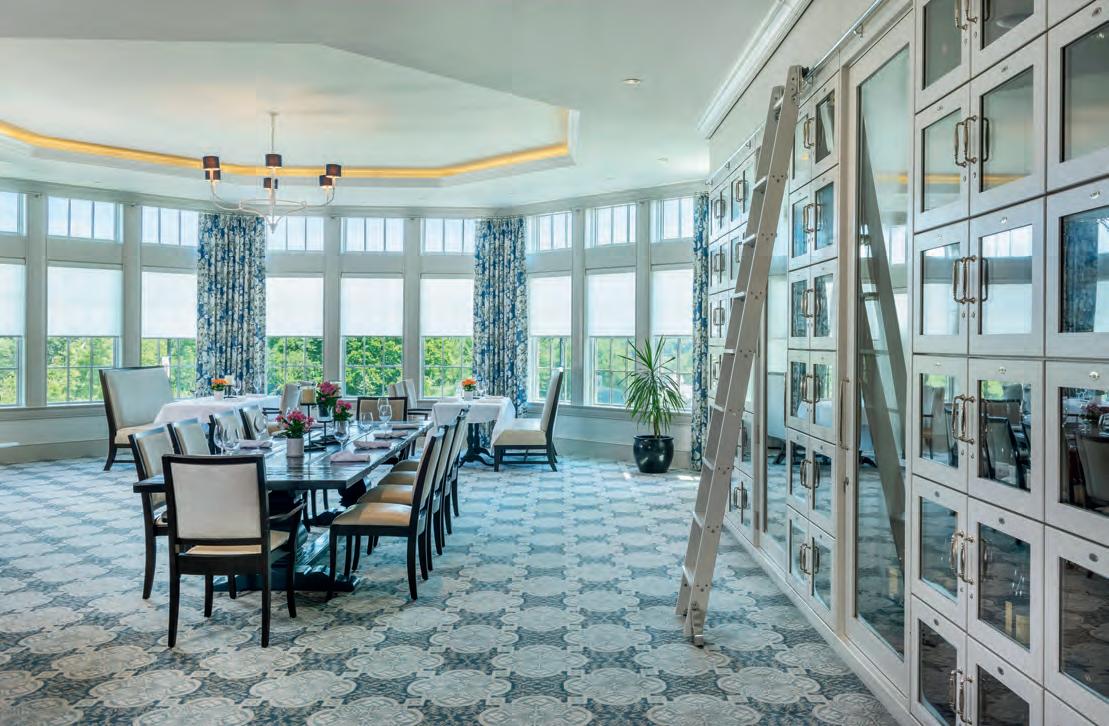

WHITNEY REID PENNELL
Whitney Reid Pennell, president of RCS Hospitality Group, is a celebrated thought leader, management consultant, educator, and public speaker. RCS specializes in strategic planning, operations consulting, food and beverage management, executive recruitment, and training programs. RCS has been recognized 13 times with BoardRoom Excellence in Achievement Awards, including staff training six times. RCS continues to offer innovative solutions through RCSUniversity.com, an online virtual training portal for employees, managers, boards and committees. For more information, phone (623) 322-0773 or visit the RCS website at www.consultingRCS.com.
Our society’s fabric of civility, respect and empathy has frayed. Recent findings from the Society for Human Resource Management underscore the pressing need for action, revealing alarming statistics on the prevalence of incivility in both workplaces and everyday life.
As leaders in the club and hospitality industry, we must grasp the gravity of this situation and proactively reintroduce civility into our interactions. Each level of club leadership can take steps to contribute to a more positive workplace culture.
BOARDS NEED TO LEAD BY EXAMPLE, ALLOCATE RESOURCES TO DEVELOP HUMAN CAPITAL PLANS
Creating a culture where respect and empathy are central tenets, ensuring that these values permeate every aspect of the club’s operations, starts at the top. By demonstrating a commitment to civility and respect in their interactions, board members set the tone for the organization. They should hold themselves and others accountable for upholding these principles, fostering an environment where members feel valued and supported.
The board of directors must lead by example through:
• Transparent communication
• Empathetic leadership
• Recognition of staff achievements.
Boards also play a pivotal role in shaping the culture and practices of private clubs. They must recognize the importance of emotional intelligence across all generations, including younger members and employees. The aftershocks of COVID-19 have shaped the formative years of these individuals, leading to a deficiency in social awareness, manners and emotional resilience.
As such, human capital plans should prioritize comprehensive training programs that cultivate emotional intelligence and address the needs of younger employees. By investing in their emotional development, boards can foster a harmonious multigenerational workforce capable of navigating interpersonal dynamics with empathy and maturity.
Advisory committees can play a key role in promoting understanding and empathy among staff and members. With open dialogue and promoting respect for diverse perspectives, advisory committees create opportunities for constructive engagement and conflict resolution. They can
organize workshops, seminars or discussion forums focused on topics related to civility, helping to raise awareness and foster a culture of mutual respect within the club.
Members at large can contribute to fostering civility by actively engaging in educational initiatives and promoting respectful behavior within the club. They can participate in workshops, attend informational sessions and advocate for policies and practices that prioritize civility and empathy. By setting a positive example and holding themselves and others accountable for respectful conduct, members at large help create a welcoming and inclusive environment for all.
Management plays a critical role in implementing training programs and providing ongoing support for staff. Engaged managers can develop comprehensive training initiatives focusing on interpersonal skills, conflict resolution and cultural sensitivity, guaranteeing that employees can manage challenging situations with professionalism and grace.
By prioritizing the development of their staff’s emotional intelligence, managers recognize that emotionally intelligent employees are essential for creating a culture of civility and respect within the club. These EI training initiatives focus on self-awareness, self-regulation, social awareness and relationship management and ensure that employees are equipped to navigate interpersonal dynamics with empathy and resilience. Management must be provided with tools and resources to facilitate this training; in some cases that may include human resources or training expertise.
In an era defined by social media, incidents of incivility can rapidly escalate, inflicting reputational damage. Recent viral episodes serve as stark reminders of the perils of unchecked behavior. As leaders, we must exemplify civility and respect, steering interactions with integrity and empathy.
Let us collectively respond to the call to action articulated by the SHRM research. By prioritizing empathy, communication and conflict resolution, we can cultivate a culture of respect within our clubs and beyond, ensuring a brighter future for our private club community. BR

HENRY DELOZIER
Henry DeLozier is a partner at GGA Partners. He can be reached via at henry.delozier@ggapartners.com

Congratulations on having been asked to serve on the club board. It is an honor...a privilege...and an incredibly complicated endeavor.
No matter how many corporate boards you currently serve or have served previously, you will find that the duties of servant leadership in a private club are nuanced. Watch for three “green light” indicators to guide your effectiveness in the club boardroom.
Many enthusiastic and impassioned new board members believe they have been seated on the board because they are intelligent or successful in other fields or popular as likable people or capable athletes.
Serving on a private club board is servant leadership in its most basic form. It is putting the needs – and not necessarily the wants and expectations – of others ahead of your own. When Robert Greenleaf introduced the notion of servant leadership during the 1970s, he described servant leadership thusly: “The servant-leader is servant first, it begins with a natural feeling that one wants to serve, to serve first, as opposed to, wanting power, influence, fame, or wealth.”
You have been seated on the board because others expect you to serve the club – all of the club – more so than one group or interest over others.
Focus on the four corners of board responsibility. The four corners of board service are strategy, finance, governance and leadership.
1. Strategy requires more than having a strategic plan. Sound board service implies that one uses the club’s strategic plan as its North Star, aligning club values, goals and objectives with current needs and trends.
2. Finance relies upon the club’s members and sound fiscal management. This requires that the board has proactively measured the financial needs and characteristics of the club to ensure that adequate capital is secured and ready for deployment to maintain the club’s assets and ensure its financial sustainability.
3. Governance requires that board members understand and are fluent in the current best practice standards for private club governance.
4. Leadership is more than the popularity of winning the club championship. Sound private club leadership
means that one will govern with principles of integrity, the willingness to listen, and being impeccable with one’s word.
Given these four corners of responsibility, board members do not go astray with concern over tactical matters which are the management team’s duty.
Informed governance is essential to your success, so the first duty of new board members is to gather and absorb a considerable amount of information that may lead to knowledge. Everyone has the right to an opinion, and members must recognize that some opinions do not rest on knowledge.
Learning the club’s business usually requires one time to recognize the legal and financial matters for which board members are responsible. Beyond these matters, board members must learn the history and traditions of the club to recognize and respect the club’s values, which enable principled and informed leadership.
The most effective club boards assign a mentor to each new board member to ensure that the newcomer has a resource for background knowledge as matters arise at the club.
Uninformed opinions are of little value in the boardroom.
Most private clubs are a maelstrom of chatter and misinformation. Many people truly care about their club, and few understand the board’s duties and responsibilities. Most clamor for greater “transparency.” Boards have a responsibility to inform the club’s shareholders responsibly and consistently.
Too many club boardrooms leak information. It is a disservice to the club, fellow board members and the principle of good governance. Most club members do not respect board members who violate the confidentiality of the boardroom … although they do enjoy having the latest tidbits from the board.
If you want your fellow members to respect the board and your work on the board, be discreet and recognize that boardroom confidentiality is elemental to sound governance. Before you take your seat at the first board meeting, watch for the green lights and enjoy the journey. Those who choose to be highly effective board members learn quickly. BR

MELISSA LOW
Melissa Low, CAE, is vice president of communications and advocacy for the Club Management Association of America. For the latest information on these and other issues affecting the club industry, please visit CMAA’s Legislative Report blog at www.cmaa.org.
It has already been a busy year with the implementation of new regulations governing the classification of independent contractors.
In April, the Department of Labor and the Occupational Safety and Health Administration finalized two more rules that will impact the employment landscape in the club industry.
Department of Labor issues final overtime rule, effective July 2024
On April 23, the Department of Labor released the expected final rule regulating which employees are eligible for overtime pay under the Fair Labor Standards Act. The final rule increases the annual salary threshold in July and again in January 2025 and will institute updates to the threshold every three years beginning July 1, 2027.
ulation empowering the DOL to temporarily delay a scheduled update if “unforeseen economic or other conditions warrant.” Highly compensated employees**: The thresholds for HCEs will also increase in July. The new total compensation will be $132,964 annually. To calculate this increase, the DOL benchmarked the annualized weekly earnings of the 85th percentile of full-time salaried workers nationally. This threshold will again increase on Jan. 1, 2025, to $151,164 annually. Further, the HCE threshold will also be subject to updates every three years with the first scheduled for July 1, 2027.
OSHA clarifies employee representation during workplace inspections
The Occupational Safety and Health Administration has issued a final rule clarifying the rights of employees to authorize a third-party, non-employee representative to accompany an OSHA compliance inspector during a workplace inspection. The rule was slated to become effective on May 31.
The role of a walkaround representative is to accompany the OSHA compliance inspector to aid the OSHA’s physical inspection of the workplace. The representative may help the inspection in several ways, such as by explaining equipment processes or operations and policies and procedures. The employee representative may also aid the inspection by providing interpretation during an informal interview.
The final rule clarifies that:
• The representative(s) authorized by employees may be an employee of the employer or a non-employee third party.
*To be exempt, an employee must be salaried, meet the established salary threshold and work in a “bona fide executive, administrative or professional capacity.”
**To be exempt, an HCE must be salaried, meet the established salary threshold and meet minimal duties testing.
Salary threshold*: Beginning July 1, the new salary threshold will be $43,888 annually, or $844 weekly. The amount will again increase on Jan. 1, 2025, to $58,656 annually (or $1,128 weekly), implementing the new benchmark calculation to the 35th percentile of weekly earnings of full-time salaried workers in the lowest-wage census region.
Triennial updates: Under the final rule, the standard salary threshold and the HCE total compensation requirements will be updated every three years to reflect current earnings data. The first update is slated for July 1, 2027. The DOL will publish the updated threshold at least 150 dates before the scheduled update. However, the final rule does include a stip-
• Employees’ options for third-party representation during OSHA inspections are not limited to persons with formal credentials such as an industrial hygienist or safety engineer.
• A third-party representative authorized by employees may be reasonably necessary to conduct an effective and thorough physical inspection of the workplace by virtue of their knowledge, skills or experience. This can include, for example, technical knowledge or practical experience about the processes and hazards of the type present in the workplace, or language and communication skills that facilitate information gathering from employees.
Employees can designate a representative in many ways, including informing the compliance officer directly, through a union representative and/or when filing their complaint.
LARRY HIRSH
Larry Hirsh, CRE, MAI, SGA, FRICS is the president of Golf Property Analysts (www.golfprop.com), a leading golf and club property consulting, appraisal and brokerage firm based in Philadelphia. He blogs on a variety of club and appraisal issues at http://blog.golfprop.com. He is the author of “The Culture of Golf - Isn’t It Just a Game?” available at: https://golfprop.com/the-culture-of-golf/.

Recently, I read a great article by Brett Morris, general manager and chief operating officer of The Club at Admirals Cove in Jupiter, FL, “The Invisible GM. A Risk to Member Satisfaction and Your Club’s Success.”
It got me thinking about the true role of GMs, golf professionals/directors of golf and (to a lesser degree) course superintendents at private clubs.
A part of the culture at most clubs includes the expectation of members to be served and to develop relationships with key staff and management. While varying service levels are expected, being recognized by staff, connecting with staff and staff knowing members’ names and preferences are part of the private club experience.
So, what is the role of key management personnel at clubs? Do they need to be seen?
About a year ago, I posted an interview with longtime PGA golf professional Bob Ford about how, in many ways, his profession had changed. He mentioned (among other things) technology, which has changed our world in many ways.
The other day, I listened to a podcast where the interviewee, golf course operator Del Ratcliffe, described the difference between “tech” and “touch.” In other words, between an email or text and a personal handshake when you visit the course or club. I know pros and GMs who “hibernate” in their offices and let staff do the “touch” part. It doesn’t work well.
In ”The Culture of Golf – Isn’t it Just a Game?” I wrote: ”The club professional (as opposed to professional golfer) sometimes plays an outsized role in the experience of golfers of all levels of skill and enthusiasm. In some instances, the head pro is someone who becomes the face and image of the club for many. He/she is the first point of contact for new members and young people taking up the game, often the trusted instructor, and going forward the source of golf equipment, attire and even travel advice. It’s typically the pro that arranges games, authorizes access and manages play. The golf professional or his/her staff impacts almost every player at any given golf facility.”
While some of these functions have changed since I started playing in the 1960s, the golf professional remains the person golfers often mention first when they discuss golf courses. And that mention is usually followed by an opinion on the pro’s personality.
Years ago, I belonged to a club whose universally respected and well-liked pro was criticized by a few members for not being there enough. According to one comment, the pro should have put his picture up in the shop so members could remember him. This occurred despite his popularity and consistent presence at the club.
I’ve also observed golf professionals evolve to where their focus on self-preservation supersedes their commitment to the service of members and guests, and they emerge from their office only when a board member or club officer appears. It’s not unheard of for the pro to do the “bidding” for board members with personal agendas to stay in their good graces.
Speaking truth to power isn’t always easy, but it avoids the bigger problems of not doing so. While the PGA promotes that its members “grow the game,” some are conflicted about encouraging that growth by those at their clubs who’d prefer that golf continue to be “aspirational.”
As one who often talks with GMs, club pros/directors of golf and superintendents, I’ve seen all types. Morris’ article summarizes the GM’s perspective on the issue of “tech vs. touch” succinctly. Considering that I’ve observed a variety of philosophies from the golf pro side, I decided to research how the PGA trains its members.
Having been on the PGA’s education faculty, I was surprised that a description of the courses and seminars PGA members must attend wasn’t on the website. However, on the “About” page, I noted what seems to be the golf professional’s fundamental purpose.
It reads that “the PGA of America is here to help you make the most of your golf journey. We seek to establish a fundamental relationship with every golfer, and build on that relationship to give you the resources you need to help you achieve your goals.” For the GM, just replace the term “golfer” with “member.” As Morris says, establishing those relationships would seem difficult while hiding in the office.
The value that can be created by effectively establishing those relationships is considerable. More happy and fewer disgruntled members means more stable cash flow, a positive atmosphere and a deeper commitment to the club from both members and staff. It can also translate into job security for staff and a generally more financially successful and stable club. BR

Artificial intelligence seems to be the buzzword of the decade. It is practically impossible to read or watch any type of media without seeing it covered. In this month’s column, I cover ways artificial intelligence will impact the modern club.
Any reasonable person might ask, “How can intelligence be artificial?” So let’s start with a good definition from Oxford Languages: ”The theory and development of computer systems able to perform tasks that normally require human intelligence, such as visual perception, speech recognition, decision-making, and translation between languages.”
An early example of how AI is used in the club world is with golf equipment. Early in 2019, Callaway created Flash Face. Callaway claims Flash Face is the first known use of AI in the golf equipment industry. Callaway combined AI and machine learning and a computer statistics program that allows a computer system to learn without being programmed by a human. It took over 15,000 golf club iterations to develop Flash Face, billed to save golfers as many as 19 strokes off their game.
One of the greatest benefits of AI is enhanced security. Over the last few years, Ring cameras have proliferated in the home security market. There are many types on the market, but they all work relatively the same way. The app takes still images from outside cameras of, for example, your club’s maintenance doors in open and closed states. These images teach the camera the difference between open and closed. The feature will recognize the two states using computer vision technology and send a custom alert to the greens crew when the state changes.
Predictive analysis is another good use of AI. Over time, your club’s computer system can use historical data to predict how many members might be at the club facility on a particularly hot, sunny day with the humidity at 30 percent. With a system like this, your staff can prepare appropriately. Your club will save labor costs, helping keep club dues as low as possible.
The many uses for a positive and more profitable AI experience include increasing energy efficiency, improved member concierge services, maximizing rounds of golf played and even determining what club members want before they know it themselves.
FRANK WOLFE
Frank Wolfe, CAE is CEO for Hospitality Financial and Technology Professionals (www.hftp.org).
Even with all the positive uses of AI, significant drawbacks exist. Most of us have seen “The Terminator” and know about the ones covered in the movies. However, one I want to address today might surprise you or get your club into a sticky position. When ChatGPT became available to the public domain, many people rushed to use it and unknowingly helped build it.
ChatGPT defines itself as a language model developed by OpenAI that uses advanced artificial intelligence technology to generate human-like text responses based on the input it receives. It is designed to converse with users, answer questions, provide information and assist with various tasks. ChatGPT can be used for a wide range of purposes, including providing information, generating text, offering recommendations and engaging in dialogue on different topics.
The key (and danger) to ChatGPT is that its responses are based on the input it receives. If you put something into ChatGPT, it can easily become part of the OpenAI ChatGPT universe. I “conversed” with ChatGPT to ask how this works; this is the response I received.
“Any language model provided by OpenAI does not transfer or result in the loss of intellectual property rights. However, it’s important to note that any content or data you input into the model or generate using the model may be subject to the terms and conditions set by OpenAI.
“If you input sensitive or proprietary information into ChatGPT, there is a risk that such information could be retained or stored by OpenAI as part of their data collection and improvement processes. It’s advisable to avoid sharing confidential or proprietary information when using AI language models to protect your intellectual property rights.”
Being a volunteer organization with lots of committees handling sensitive information, it is easy for information to leak out. However, if a committee member uses ChatGPT or one of its AI brothers and sisters to handle information, the information could easily become part of the AI universe.
At HFTP, we recently purchased licenses for Copilot, Enterprise version of Office 365, which allows us to put sensitive data into a language model but keeps the information proprietary to those with licenses.
Until next time. BR
JARRETT CHIRICO
Jarrett Chirico, USPTA, PTR, PPTA, PPR, PPTR is director of racquets at Royal Oaks Country Club, Dallas, TX.

In an industry (a world) driven by networks and connections, the ability to create meaningful relationships has become the cornerstone of success. The greatest leaders are not experts but connectors.
A connector is not someone who has many friends or knows a lot of people but someone who focuses on building authentic and mutually beneficial relationships that create value for everyone. By mastering the art of connection, we can open doors, create new opportunities and propel ourselves toward goals with unparalleled efficiency and effectiveness.
At the heart, being a connector is more than networking. It is about caring for people. Genuinely caring about those you meet and putting yourself in their shoes to understand their needs, interests and dreams. You must care, be real and be present in the moment.
It’s about being a mentor, a friend and, more importantly, a resource for someone else who is always willing to help. By nurturing these relationships, you build a strong network and tight-knit community and create a reputation as someone reliable, trustworthy and genuine. You become known as someone who is invested in the success of others. You become sought after because you don’t seek the spotlight but the opportunity to hoist someone else into it … and that is leadership.
Being a connector requires a strategic mindset and a willingness to invest time and energy in creating mutually beneficial relationships. I have said it many times: all worthwhile relationships should be transactional. All parties should have something to offer and receive although not necessarily at the same time.
In many cases, it is recognizing future opportunities by investing in another’s long-term success. It’s about identifying key influencers, decision-makers and people you emulate in your industry and finding ways to add value to their lives and careers. It may be through sharing insights, making introductions, offering support, or teaching them a new sport in the ever-evolving racquets industry. The goal is to make yourself indispensable.
Additionally, being a connector is about being intentional about how you approach relationships. We must always be
intentional about everything we do. Our intentions determine our success.
It is about seeking out opportunities to connect with others. Whether through conferences, retreats or commenting on LinkedIn, the opportunities to introduce yourself are endless. The goal is to expand your reach.
By reaching out and engaging with others, you demonstrate your commitment to building meaningful relationships and fostering new connections that will establish you as an asset within your growing network. It doesn’t matter how great you are if no one knows who you are.
The most important part of being a connector is the ability to be uniquely you. It is about authenticity. It doesn’t matter if you meet someone in passing or spend hours with them, people can sense when you are being genuine.
Being genuine and authentic is the foundation for building trust and creating long-lasting relationships. However, to be genuine you must also be vulnerable and confident in who you are and what you have to offer. A fake will never compare to the real thing.
Leadership requires humility and giving more than we receive. Success is not measured by the size of our network or the number of our connections but by the impact we have on the lives of others.
Many characteristics define leadership. These traits adapt and evolve based on the demands presented. What has never changed is the importance of being a connector and understanding our impact on each other’s lives. A connector is not about building a network of contacts but about creating genuine and authentic relationships that always create value for others.
If we are intentional in our approach and embody authenticity and humility in our interactions, we can become a powerful force for connection and collaboration. We can be the change that continues to ignite the future of the racquets industry. Let us create a world where success is not measured by what we achieve alone but by what we can achieve together. BR


RONALD BANASZAK
Ronald Banaszak, CCM, CCE, BoardRoom Distinguished Club Executive Vice President of International Business Development. Ron may be contacted at (415) 420-5183 or ron@boardroommag.com.

Nestled in the heart of the Missouri Ozarks lies a haven for golf enthusiasts and nature lovers –Big Cedar Lodge, a Distinguished Golf Destination with Iconic status. Big Cedar Lodge, founded by the visionary conservationist and Bass Pro Shops founder Johnny Morris, is a testament to the harmonious coexistence of luxury, conservation and unparalleled outdoor experiences.
At Big Cedar Lodge, the commitment to conservation is not merely a slogan but a way of life. The resort sets the standard for responsible tourism with its comprehensive environmental plan, encompassing ecologically sound land management, wildlife conservation and sustainable practices. From the moment guests arrive, they are immersed in a landscape carefully nurtured to thrive in harmony with its natural surroundings. Through initiatives such as wildlife and habitat management, water conservation and waste management, Big Cedar Lodge strives to minimize its environmental footprint while maximizing the beauty of its pristine wilderness. As Morris aptly puts it, “We all live downstream,” reminding us of our shared responsibility to protect and preserve our natural heritage for future generations.
The story of Big Cedar Lodge is woven into the rich tapestry of the Ozark Mountains. Once occupied by Native Americans, the land evolved over centuries, eventually becoming a soughtafter vacation destination with the expansion of railroads in the early 20th century. In the 1920s, visionaries Jude Simmons and Harry Worman transformed Big Cedar Hollow into a retreat adorned with lavish country homes, setting the stage for what would later become Big Cedar Lodge. Despite changing hands over the years, the essence of Big Cedar Lodge remained intact, a testament to its enduring legacy of wilderness hospitality. Under the stewardship of Morris, Big Cedar Lodge became a premier wilderness resort while preserving the historic charm of its predecessors. Today, it is a beacon of luxury and conservation, inviting guests to reconnect with nature and create timeless memories.
What sets Big Cedar Lodge apart is its world-class golfing experience, meticulously crafted by some of the greatest names in the sport. Tiger Woods’ Payne’s Valley Golf Course with its challenging fairways and Jack Nicklaus’ Top of the Rock Golf Course with its scenic vistas offer a unique blend of natural beauty and championship-caliber play.
But Big Cedar Lodge is more than a golf destination. It’s a sanctuary where guests can indulge in the finest dining, luxurious lodging and a wealth of outdoor adventures. Whether casting a line on Table Rock Lake, exploring the Lost Canyon Cave and Nature Trail or unwinding at the spa, there’s something for everyone at Big Cedar Lodge.
Food is one of the many passions at Big Cedar Lodge, and the resort has designed some of the finest dining experiences in the region. With award-winning options, ranging from casual to fine dining, guests may immerse themselves in world-class cuisine experiences. Guests will also enjoy genuine Ozarks hospitality, breathtaking views and an unforgettable culinary experience.
In the words of Morris himself, Big Cedar Lodge is more than a resort. It’s a celebration of nature’s grandeur and a testament to the transformative power of the great outdoors. As guests embark on their journey through the Ozarks, they are invited to experience the magic of Big Cedar Lodge – where every moment is an opportunity to connect with the soul of the wilderness.
From its humble beginnings to its status as America’s premier wilderness resort, Big Cedar Lodge continues to embody the spirit of conservation and hospitality that defines the Ozark experience. As guests depart, they carry memories of championship golf and luxurious amenities and a deep appreciation for the beauty and wonder of the natural world.
In the end, Big Cedar Lodge is more than a destination. It’s a sanctuary where dreams are realized, bonds are forged and the spirit of adventure reigns supreme. So, whether you’re seeking an unforgettable golfing experience, a relaxing retreat or a chance to reconnect with nature, Big Cedar Lodge welcomes you with open arms to America’s Nature Golf Destination. BR




RONALD BANASZAK
Ronald Banaszak, CCM, CCE, BoardRoom Distinguished Club Executive Vice President of International Business Development. Ron may be contacted at (415) 420-5183 or ron@boardroommag.com.
In the heart of Fort Worth, TX, a beacon of tradition, distinction and excellence has stood tall since 1936 – the Colonial Country Club, founded by visionary businessman and philanthropist Marvin Leonard, is the newest Distinguished Club with the Iconic designation. The club’s legacy resonates through time. With an illustrious history of hosting iconic golf tournaments and a commitment to community, Colonial Country Club exemplifies the pinnacle of private club excellence.
Leonard’s dream was to create a haven that celebrated both golf and community, and his vision came to life with the Colonial Country Club. Original architects Perry Maxwell and John Bredemus crafted a course that would challenge golfers and represent architectural ingenuity. This historical canvas became the stage for major championships, hosting events such as the 1941 U.S. Open, the 1991 U.S. Women’s Open and the 1975 Tournament Players Championship.
Colonial Country Club’s commitment to golf excellence is unrivaled. The club has hosted the Charles Schwab Challenge since 1946, making this event the longest-running tournament on the PGA Tour hosted at the same place. The club has witnessed history from golf legends Ben Hogan and Annika Sorenstam, who shattered barriers by teeing up alongside men in the 2003 Colonial PGA Tour event. Sorenstam’s recent appearance as a guest speaker at the 2023 Executive Women’s Day underlines the club’s continuous dedication to pushing boundaries and embracing inclusion.
The essence of Colonial’s commitment to excellence extends to its ambitious 2023 golf course renovation project. This transformational endeavor, spearheaded by Gil Hanse and Jim Wagner of Hanse Golf Course Design, is poised to reshape the course while honoring its historical significance. The project incorporates state-of-the-art irrigation systems; innovative subsurface heating and cooling for greens; new tees, bunkers and greens; and a comprehensive regrassing effort.
A new chapter of sustainability is also unveiled as the club embraces Premier White/Bells Savoy blend sand for its bunkers, complementing its dedication to natural elements. With 12,000 tons of sand and 25-30 acres of re-grassed fairways, Colonial’s renovated course emerges as a harmonious blend of tradition and innovation. Beyond the course, Colonial Country Club embarks on a comprehensive multiphase master plan. The plan envisions a modernized golf performance center, a revamped golf course maintenance facility and a new short-game practice area. The iconic main clubhouse, with its historic columns, is poised for a complete
reimagining while maintaining its classic charm. Additionally, a new three-story building will house a pro shop, family restaurant and rooftop eatery offering panoramic views of the course and downtown Fort Worth.
“Colonial’s essence transcends golf,” says Frank Cordeiro, the club’s general manager. “It’s about embracing a sense of family and community. Members view Colonial as an extension of their homes, a sentiment epitomized by the phrase ‘Colonial is Home.’ “
The club’s volunteer spirit is remarkable, with members playing a pivotal role in hosting the annual PGA Tour event. This enduring commitment has solidified Colonial’s position as both host site and host club, a distinction rarely matched in the PGA Tour landscape. Colonial Country Club’s reach extends beyond the greens, showcasing an unwavering dedication to philanthropy. The Birdies for Charity program, supported by the PGA Tour event, generates around $15 million annually for Fort Worth and Tarrant County charities. This commitment has contributed over $160 million to more than 150 local charities, uplifting the community in profound ways. The club’s partnership with Homes 4 Wounded Heroes underscores its commitment to giving back to veterans, further strengthening its philanthropic footprint.
As Colonial Country Club embraces its 2023 golf course renovation project and advances its multiphase master plan, it forges a path toward a radiant future while honoring its roots. Leonard’s vision, the enduring championship legacy and the club’s deep commitment to community and philanthropy define its unique essence. Colonial isn’t just a golf club. It’s a timeless testament to excellence, tradition and the spirit of Fort Worth, setting an enduring example for private clubs. BR
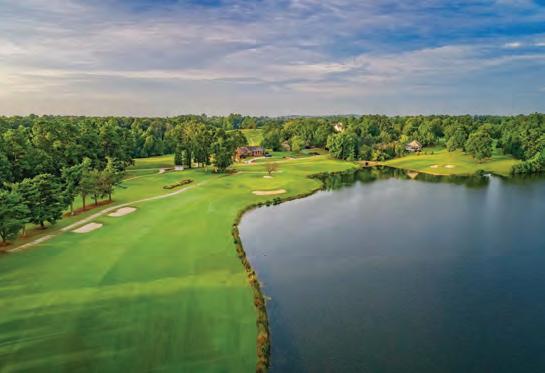
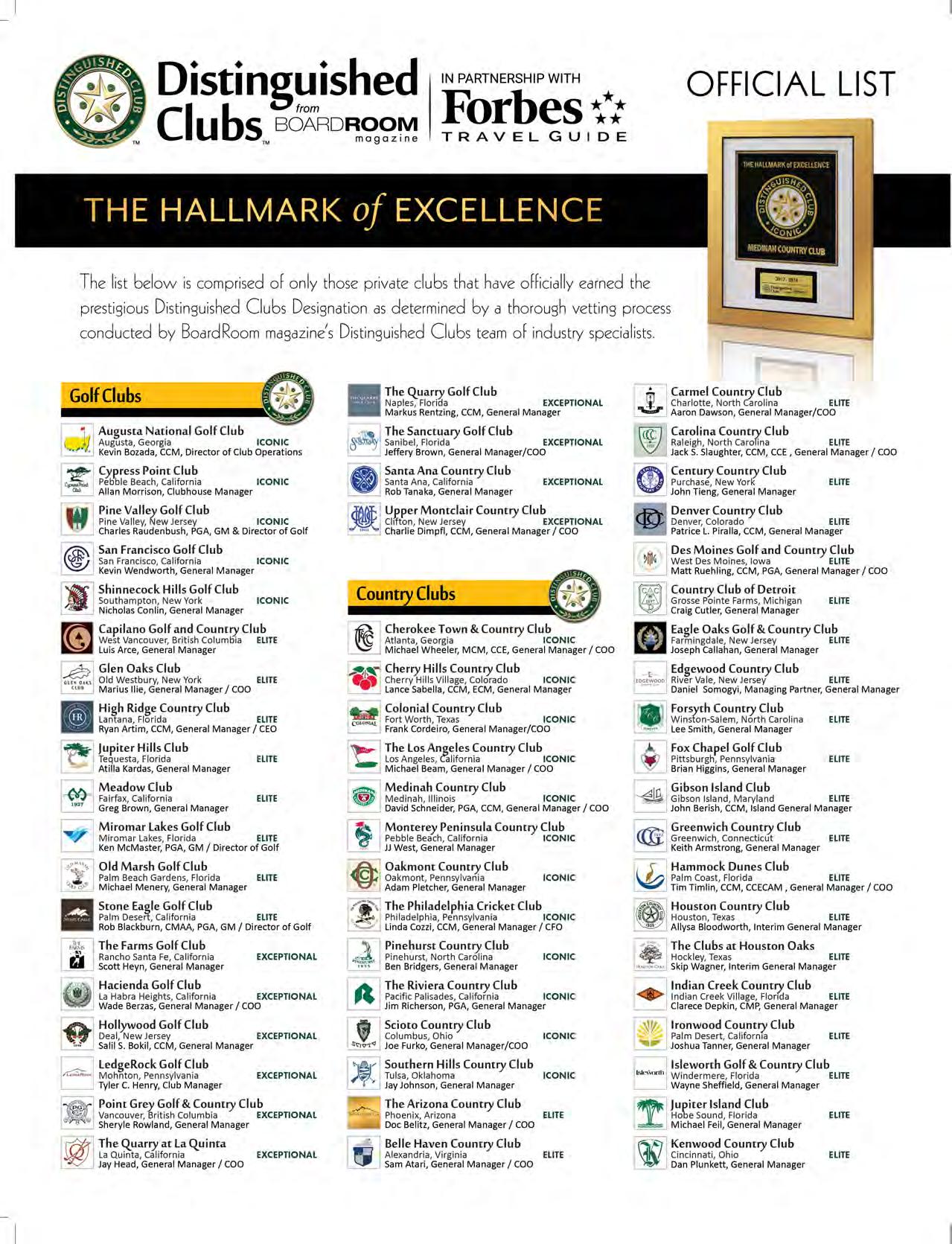



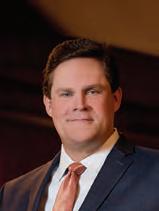
GORDON WELCH
Gordon Welch, president of the Association of Private Club Directors, has over 20 years’ experience in private clubs and 12 years of experience as an association executive and registered lobbyist. For more information or to discuss your orientation, you can reach me at gordon@boardroominstitute.com or (918) 914-9050
In the dynamic and ever-evolving landscape of club management, the role of effective governance cannot be overstated.
Clubs thrive when their leadership is equipped with the right knowledge, skills and tools to navigate complex challenges and seize opportunities with confidence. This is where BoardRoom Institute comes in.
At BoardRoom Institute, we empower board members and club leadership with the knowledge, skills and tools necessary to lead their organizations with confidence, integrity and strategic foresight. Effective governance is the cornerstone of any successful club, and we are committed to fostering excellence in board leadership.
Why BoardRoom Institute?
The importance of strong governance structures in clubs is paramount. BoardRoom Institute is designed to meet this critical need by providing comprehensive resources and training tailored for board members, committee members and club management. Our institute stands out as a beacon of excellence, dedicated to nurturing leadership that can drive clubs toward sustainable success.
COMPREHENSIVE TRAINING AND RESOURCES
We’re delighted to share an upcoming series of BoardRoom Institute videos. In this video series, we bring insightful and engaging content to empower you with the latest knowledge, strategies and best practices in club governance. This series addresses the unique challenges and opportunities club leaders face and offers them the tools and insights necessary to excel in their roles.
To kick off the series, Ray Cronin, founder of Club Benchmarking, educates on comprehensive capital planning, the cornerstone of sustainable financial success in private clubs. Within the last 10 years, the dynamic shift to focusing on the balance sheet and capital ledger gave a real understanding of the financial dynamics within a private club.
Cronin’s expertise provides invaluable insights into how clubs can strategically manage their capital resources to ensure longterm viability and growth. This focus on capital planning is just one example of the high-quality, specialized knowledge that BoardRoom Institute brings to its members.
Comprehensive capital planning is essential for the financial health and sustainability of private clubs. This approach goes beyond budgeting and extends to a deep understanding of financial dynamics. By focusing on the balance sheet and capital
ledger, clubs can gain a clearer picture of their financial standing, enabling them to make informed decisions about investments, maintenance and future growth.
Cronin’s session on this topic is an eye-opener for many club leaders. He breaks down complex financial concepts into understandable and actionable insights, making it easier for board members to grasp the importance of strategic financial planning. His guidance helps clubs not only to survive but also thrive in an increasingly competitive environment.
To hear more on this topic or explore the wealth of other information available, visit www.boardroominstitute.com. The website is a hub for club leaders seeking to enhance their governance skills and knowledge. By requesting a virtual demo, potential members can get a firsthand look at the resources and training modules available, helping them understand how BoardRoom Institute can transform their leadership approach. The benefits of joining BoardRoom Institute are many. Here are a few reasons why your club should consider this invaluable resource:
• Enhanced leadership skills: The training programs are designed to equip leaders with the skills necessary to manage their clubs effectively, from strategic planning to day-to-day operations.
• Expert insights: Learn from industry leaders like Cronin, who bring a wealth of knowledge and practical advice to the table.
• Tailored content: The resources are tailored to address the unique needs and challenges of club governance, ensuring that the information is relevant and impactful.
• Sustainable success: By focusing on comprehensive capital planning and other strategic areas, BoardRoom Institute helps clubs build a foundation for long-term success.
• Community and networking: Joining BoardRoom Institute connects you with a community of like-minded leaders, fostering opportunities for networking and collaboration. BoardRoom Institute is more than a learning platform; it is a transformative resource for club leadership. By providing access to expert knowledge, practical tools and strategic insights, BoardRoom Institute empowers clubs to achieve excellence in governance.
Don’t miss the opportunity to elevate your club’s leadership and ensure its long-term success. Visit www.boardroominstitute.com today to learn more and request a virtual demo. Embrace the future of club governance with confidence, integrity and strategic foresight through BoardRoom Institute BR
CHRISTINE KANE
Christine Kane became Audubon International’s executive director in 2016 and CEO in 2018. Her experience in the environmental sector includes work on a wide range of issues, including hazardous waste site identification, BMPs for non-point source water pollution, land conservation and trail management. For more information on the organization’s various certification programs, visit www.auduboninternational.org or call (844) 767-9051.

While the benefits of club membership have traditionally endured through the generations, today’s prospective members are looking to join a club that best addresses their ideas of “community” and “belonging,” what their fellow members truly care about and how they act on those concerns.
Millennials and Generation Z, who will be your future members before you know it, often focus on environmental stewardship.
Demographic change is all around us, and as clubs look to add young families to their rolls, whether it’s the next generation of current members or new names and faces, now is a great time to recognize and prepare for the fact that they look at the world differently than previous generations. Embracing their desire to be part of a sustainability-minded club culture becomes a value-added proposition for all.
Joining Audubon International and enrolling in one of its certification programs for golf, hospitality or homeowner associations is an effective and proven way to educate and engage current members in sustainability best practices and show prospective members that you’re serious about environmental stewardship for the long haul.
Our board chairman, Henry DeLozier of GGA Partners, works with private clubs and offers statistics showing that in terms of overall demographic trends and post-pandemic decision-making, your next members are making their joining decisions based on family programming and the overall safety of the community–including how a club treats the environment.
A sustainability plan benefiting the natural environment, your members and perhaps the surrounding community is a positive for these new demographics.
“We have seen an uptick in community members’ interest in the value of making their communities environmental sanctuaries,” DeLozier told me.
It’s about adjusting the culture to welcome and accommodate new families—enhancing and strengthening your relationship with members beyond the golf course, the tennis center, the pool, and food and beverage. That means feeding the feeling that they’re in a safe and sustainable environment where they want to spend their time and can make the most of their membership fees. They want to feel connected in the fullest possible way.
Peter Cafaro, senior vice president at JBD JGA Design & Architecture, a Rhode Island-based company that works with private golf clubs, sees this cultural adjustment taking shape in real time.
“Clubs have long had some level of concern with environmental issues, but it has not been a leading force,” Cafaro told me. “In the 25 years I’ve been doing this, it has increased in importance but has yet to take the lead. But now clubs must widen their horizon of considerations of what they offer.
“It may not be a great pool and a great golf course alone that attracts prospective members to think about their club but less tangible issues, one of which is the environment. That will very likely be a factor in the decision-making process of future members over the next 10 to 15 years.”
The value is obvious not just in dollars and cents but in a social sense: the long-term value to your club’s culture and the fact you’re taking positive and proven action for your members to live, work and play in harmony with the immediate and longterm natural environments.
The real and perceived value increases exponentially when a club promotes its sustainability credentials to members and the community. Indeed, that’s a huge component of every Audubon International certification process.
If your club is near competing clubs with similar price points and travel distances for prospective members, your sustainability profile may be the deciding factor in their decision to join. Or it may allow them to rationalize paying a higher initiation and membership fee.
Their decision will also let them be proud of doing something good for the environment, as opposed to another club that has no such programming to promote. That’s the benefit of committing to constant and consistent outreach and education.
Such dedication to outreach applies to a club’s workforce as well. Whether you’re looking to fill positions on the maintenance crew, in food and beverage, or in member services, employees have options about where they work in today’s labor market, so it’s crucial to include and educate them in your sustainable practices. Talk about it across every level of your operations.
Invite your team to take ownership of your sustainability goals by explaining why you’re incorporating certain products into the menus, how you’re making intentional decisions on your product sourcing and waste disposal and why you’re adjusting or changing certain golf course inputs. That way, when they get a question from a member, they can be ready with an answer.
Initially, there may be some higher costs to making these adjustments. There may be more steps for employees, but the key is ensuring they’re fully informed about why you’re doing it. With a good, well-trained and dedicated staff that wants to help reach those sustainability goals, there’s less turnover, which saves money and time at many levels.
from Active Urban Lifestyle |
The presence and success of Olympians greatly enhance the overall member experience at the NYAC. The club offers training facilities for various sports, and many of its athletes serve as guest instructors, sharing their expertise with younger members. “Seeing Olympic legends like Kayla Harrison, a two-time Olympic gold medalist, two-time Pan American Games gold medalist, and gold and two-time bronze medalist at the World Judo Championships, teaching judo to our young members is incredibly inspiring,” Simon said. “It creates a unique environment where our members can learn from the best. Moments like witnessing our world-class water polo players mentoring and coaching the next generation at the club fosters an atmosphere of excellence and ambition.”
The club also organizes events where members can interact with elite athletes. The annual All Sports Dinner, which honors the club’s national, world and Olympic champions, is a highlight. “This event allows our members to meet and celebrate our athletes, creating a strong sense of community and pride,” Simon explained.
The NYAC’s commitment to fostering a sense of community extends beyond the athletes themselves. The club offers a range of programs and activities designed to engage all members, from youth
As with any worthwhile and necessary capital expense, a comprehensive environmental stewardship certification plan takes a club-wide commitment of dollars, time and shared vision to reap short- and long-term benefits and help assure growth in the future. In partnership with a leading authority such as Audubon International, goals get clearer and more measurable season to season, year to year and member to member. It’s a journey worth taking, together. BR
sports programs to family-friendly events. This inclusive approach ensures that every member feels valued and connected to the club’s rich heritage and ongoing legacy.
As The Olympic Games Paris 2024 unfold, the NYAC remains dedicated to its mission of supporting athletic excellence and enhancing its programs. “Our athletes’ achievements bring a unique level of recognition and respect to the NYAC,” Simon said. “Their dedication and hard work embody the values of our club.
“We are committed to providing them with the best possible support and resources. Our goal was—and is—to help them achieve their dreams and bring pride to our club. The NYAC was born of innovation, and that spirit continues to guide us. We are excited for what the future holds and look forward to continuing our legacy of excellence.”
The New York Athletic Club’s commitment to its athletes and its storied history of success make it a unique and inspiring institution. From its founding in 1868 to its current support for Olympic athletes, the NYAC has always been dedicated to fostering excellence and community. This unwavering support for elite athletes and its rich legacy of athletic achievement are key factors in why the NYAC is a Distinguished Club. As the club looks to the future, it remains focused on its mission and the values that have guided it for over a century. BR
change how the course is normally maintained, ratings may need to be adjusted.
What if you’re doing a project and the course will be altered for an extended period? Temporary teeing areas or temporary greens are often used during major course renovations. This will change the effective length, obstacles and challenges golfers face. If you let your local AGA know, it can make short-term adjustments to your Course Rating and Slope Ratings based on the temporary features that are in play during a project.
The American Golf Industry Coalition, comprised of the leading voices in golf, hosted its 16th annual National Golf Day on May 9. Events kicked off the previous afternoon and concluded with collaborative community service projects on May 10. Annually, National Golf Day brings together industry associations, partners and leaders in the nation’s capital to celebrate how the sport and industry positively impact the economy, people, communities and charities.
During the three-day event, more than 200 industry advocates converged on Capitol Hill to discuss key issues affecting the golf industry with policymakers. More than 230 meetings were held with members of Congress, reaching 38 states. In 2023, the Coa-
If changes to course design or maintenance could affect scoring in the short or long term, it is always a good idea to consult with your local AGA. Well-trained staff and course raters are equipped to handle questions or issues that may arise. This is the kind of “handicap management” that we fully endorse. BR
West Region Agronomists: Brian Whitlark, Regional Director – bwhitlark@usga.org
Cory Isom, Agronomist – cisom@usga.org
Information on the USGA’s Course Consulting Service
Contact the Green Section Staff
Published with permission from USGA Green Second Record
lition released a national economic impact study that shows golf’s growth in popularity as a recreational activity with roughly one in seven people participating and a $102 billion direct economic impact in 2022, an increase of 20 percent over its $84 billion direct impact in 2016.
The Club Management Association of America’s 2024 advocacy committee, CMAA’s national chairmen and numerous other CMAA members attended as advocates for our industry. Additionally, CMAA members throughout the country participated virtually by reaching out to their legislators. Together, these efforts help to advance the industry and foster constructive dialogue with our elected officials.
Learn more about the industry’s impact at https://www.golfcoalition.org/industry-impact. BR

The Union League of Philadelphia
Distinguished Club with Iconic designation
Jeff McFadden, CEO
• Loyalty and Longevity: Cassell Moore has been with The Union League for 46 years, starting as a bus person and rising to banquet manager, showcasing a career marked by loyalty and job satisfaction.
• Career Development: She attributes her growth to leadership training classes and the supportive environment provided by her managers and colleagues, such as her “American mother,” Margaret Jones.
• Employee Recognition: The Union League offers excellent benefits, including a scholarship foundation for employees’ children, assistance with college tuition, and various employee awards, creating a strong culture of appreciation and support.
• Community and Culture: The club fosters a family-like atmosphere, with long-term employees contributing to a strong organizational culture and camaraderie between staff and members. The club offers perks like a free cafeteria and departmental outings to enhance team building.
Cassell Moore started working at The Union League when she was 21…46 years ago, after arriving from Jamaica. Loyalty, job satisfaction, career advancement, job security and relationships with club members have contributed to Cassell’s successful career at The Union League.
“I look forward to coming to work every day to see the members and my coworkers,” Cassell said.
Cassell was hired in 1978 as a bus person, starting in the Oak Room, which is now the club’s Meade Ballroom. She was then promoted to a server in the Ladies’ Dining Room on the lower level…the only room where women were allowed to dine. She was later promoted to a host in the Ladies’ Dining Room. In 1987, she moved to The League’s banquet department as a ban quet manager.
“In 2000, Cassell’s manager had her take Leadership Training Classes,” explained Kate Wood, the club’s chief human resource officer.
“She feels like those classes have really helped with her personal and work life. Cassell comes to work at 5 a.m., runs our conferences and morning events, and has become a staple in our banquet department. So many members and guests request her as she always gives 110 percent. We are so fortunate to have her on our team!“ Wood added.
So, what makes the relationship with the club so special?
“The League has my back! Helping me through tough times and in good times. They are always recognizing and re-

Board Member Self-Evaluation
Key Leadership Evaluation
Peer Group Comparison
15-Best Practices
Action Plan & Roadmap for Success
“You know that a presentation is great when after three hours, you would welcome another three. This was truly one of the best discussions that I have had the pleasure to be a part of, so, thank you for that. I look forward to digging into the materials so graciously provided. The "to-do list" with target dates is extremely helpful.”
GENERAL MANAGER/COO | IVANHOE CLUB
Board Member & GM/COO Alignment Coaching Board/Committee Orientation
New Member Orientation
New GM/COO Onboarding Board & Committee 360 Reviews
Volunteer Leadership Development Board/Committee Behavioral Assessments & Screening
“The Board was blown away by your presentation. You took a potentially boring subject and made it a lot of fun with your real-life stories. Thanks again, Tom.”


warding me for my efforts,” Cassell added. “Mentors are among those who have encouraged me to stay so long at the club. Margaret Jones (server) –she was my American mother because I am from Jamaica,” Cassell expressed.
“The Union League is a great company to work for – the benefits and pay are great! If you give 100 percent, you will get 100 percent satisfaction and stay forever,” she opined.
“Loyalty and developing a strong culture are the keys to our success! Having long-term employees really speaks to the culture we have created,” explained Jeff McFadden, The Union League’s CEO.
“Our average tenure is 14 years. The camaraderie between the members and our employees is astounding! Members continuously say that we are an extension of their family!
Benefits and perks offered to employees and their families also contribute to togetherness, McFadden added, including,
1. Helping our employees with college and tuition expenses in the hospitality industry.
2. A scholarship foundation for our employees’ children and grandchildren. Employees can apply for the scholarship, which pays for their children to attend college.
3. Other awards that help employees’ children or grandchildren participate in activities – like sports camps, piano lessons, youth conferences, dance lessons, and gymnastics – to name a few.

HIGHLIGHTS
“Ten years ago, we started the Angel Fund to help employees struggling through a difficult time. The money collected is used throughout the year to assist employees in emergency situations. The League matches what the employees contribute, but the biggest perk, according to our employees, is the cafeteria, which is free of charge and has food service for breakfast, lunch and dinner.
“With over 1,200 employees, we encourage departmental outings where employees go to a sports game together, eat out at new restaurants, play miniature golf etc. Team building is so important!” McFadden said.
So, how important is it to retain long-term staff?
“Our long-term employees become well versed in the organization and not just in their home department; they can be cross-trained, train new hires and really understand the operation. These employees are amazing at name recognition!” McFadden offered.
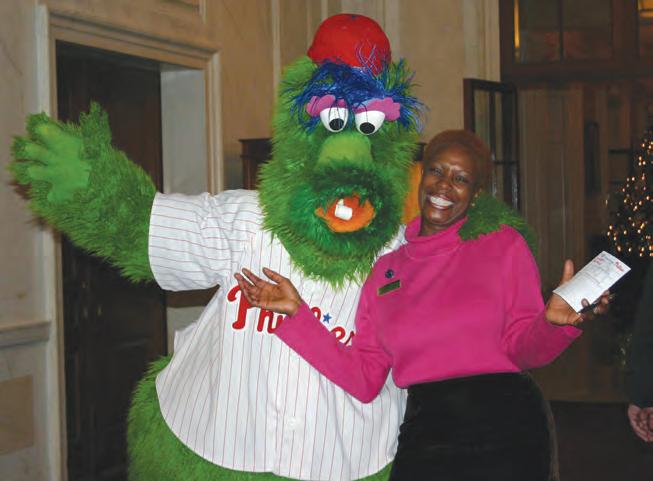
Bel-Air Bay Club, Pacific Palisades, CA, Distinguished Club with Iconic designation Barrett Eiselman, GM/COO
• Long Tenure at Bel-Air Bay Club: Roberto Escalante recently marked 38 years of service at the Bel-Air Bay Club, reflecting a deep connection with the club’s culture and community.
• Importance of Club Culture: Roberto emphasizes that while he initially stayed for financial reasons, he remained due to the supportive environment, development opportunities, and familial relationships with both members and staff.
• Mentorship Influence: Significant mentors like John Collins and Rod March have shaped Roberto’s career, enhancing his management skills and deepening his wine knowledge.
• Club’s Efforts to Retain Staff: The Bel-Air Bay Club fosters long-term employee retention through empowerment, creative freedom, off-site events, and a generous scholarship program for associates and their families.
Roberto Escalante, pictured right with GM/COO Barrett Eiselman, recently celebrated his 38th anniversary as an employee at the Bel-Air Bay Club. “It’s hard to imagine, but we have one more associate, who at 44 years, has been here longer than me,” said Roberto.
So, what has inspired Roberto to stay long-term at BelAir Bay?
“You begin your tenure needing a job for the money, but you stay because of the culture, development and empowerment the employer offers, and ultimately, the relationships that you enjoy,” he added.
“I truly feel like this is a part of my family. Clubs try so hard to make their environment an extension of the members’ homes. They take it a step further at the Bel-Air Bay
Club (BABC). This club becomes an extension of the associates’ homes, as well, because of the way members treat staffers.”
For Roberto, mentors have had a significant impact during his long period at the club.
“John Collins, former food and beverage director, was very impactful earlier in my career. For the past 15-plus years, Rod March, current assistant general manager, has been an inspiring mentor by helping me develop my management skills and significantly enhancing my knowledge of wine,” Escalante commented.
“Robert has a fantastic work ethic. He puts a lot of effort and time into everything he does. He is also an exceptionally caring and genuine human being,” expressed AGM March. “He loves to discover new wines and find ways to add to the member experience. He’s also a very hands-on leader and puts energy towards growing and inspiring others.
“Over the years, he’s taken on more and more responsibility. It always fascinates me how diligent he is and how close to the members he is. He’s well-loved and a people person, and one of those guys that can name 150 different member numbers and their dietary requirements, not just their names,” March added.
“He’s always been passionate about service, but when he moved into the dining room, his passion for wine really grew. He helps educate our wine team and sources new wines to add to our expansive list.
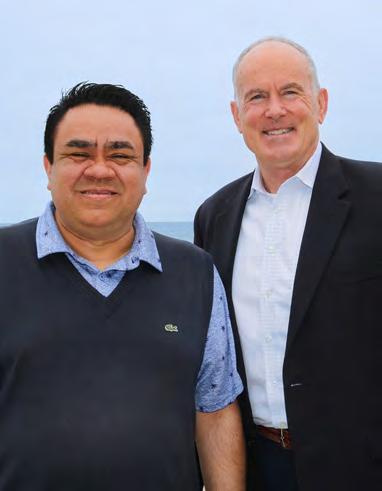
“Robert has spent almost his whole career here, which is phenomenal because he has this institutional knowledge. I worked in about 17 different operations before joining Bel-Air Bay Club, and it’s been a lot of fun teaching him different skills and approaches from what I learned at those places. I care about Robert and would do anything to help him grow. He’s like family to me,” March said.
So, what do private clubs do to encourage employees to stay long-term?
“The hospitality business is all about creating memorable experiences for people. We need to ensure associates feel they can contribute to this,” said GM/COO Barrett Eiselman.
“Don’t just empower but allow them to be creative and implement their ideas to enhance these experiences. If you don’t, they begin to feel just like an order taker, and then, it becomes a job to collect a paycheck.
“On top of your typical annual associate holiday function, we schedule multiple off-site events for the staff. Some of these functions are for the family and others are just for staff,” he added.
“Taking in a Dodgers game, getting competitive at the bowling alley, or enjoying a nice dinner and magic show are all functions we have enjoyed within the last year. The greatest thing about our team is that it really doesn’t matter who is on your team or who you sit next to; everyone enjoys each other’s company.
“Another perk is our annual scholarship program. We have a very generous membership that allows several associates or their family members to receive scholarships that pay for their college or trade school education.
“Relationships are everything in our industry. Without long-term staff, you cannot form long-lasting relationships that both our members and staff appreciate,” he added.
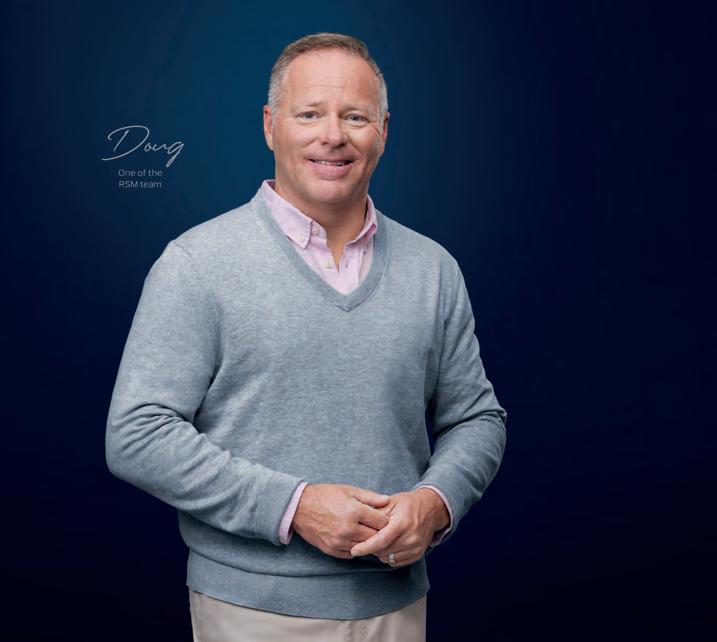


The Club at Admirals Cove, Jupiter, FL, Distinguished Club with Elite designation Brett Morris, GM/COO
• Simona Vasu’s Origin: Originally from Transylvania, Romania, she moved to Italy after the 1989 revolution and later to the U.S., joining The Club at Admirals Cove in 2006.
• Career Growth: Started as an assistant manager and rose to director of hotel operations under Brett Morris’s mentorship.
• Reasons for Staying: Attributed her long tenure to a strong sense of community, camaraderie among staff, and robust employee benefits, including the Admirals Cove Foundation’s educational support.
• Impact on the Club: Manages all hotel reservations and concierge services, playing a vital role in member and guest experiences at the club.
A native of Transylvania, Romania, Simona, at age 26, set her sights on Italy after the 1989 revolution against the Ceausescu dictatorship evolved from bad to worse. Armed with a suitcase, a mere 35 cents, her friend, Liva, hosted Simona and two friends, Carmen and Aurora, until they got on their own feet. Her ambition...to earn a university degree in Italy.
She also lent a helping hand to her brother, Iulian, and sister-inlaw, Iuliana, as they made their way to Italy. They provided unwavering support for Simona during the subsequent five years as she juggled two jobs while sustaining herself at university. In 2005, Simona proudly graduated cum laude with a Master’s degree in new media and multimedia communication.
My journey took an unexpected turn in 2006 when I arrived at The Club at Admirals Cove. Initially intending to stay for just one season before returning to Italy, I was deeply enamored with the members, guests, staff and the club itself. By my second season, the club sponsored my H1B visa and promoted me to assistant manager. Over the years, I climbed the ranks to become guest services manager. With the appointment of Brett Morris as our general manager, I ascended to the position of director of hotel operations.
What has inspired you to stay so long at The Club at Admirals Cove?
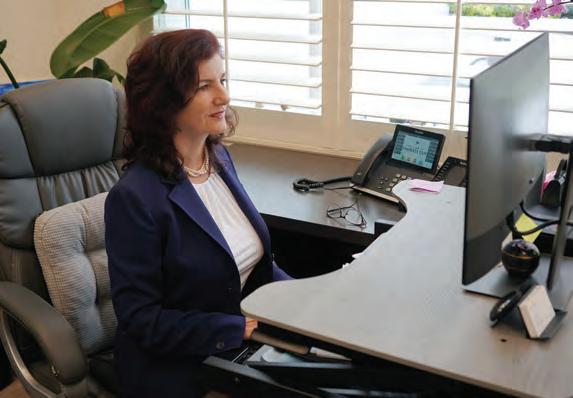
“A rich tapestry of factors, each weaving its own thread of motivation,” explained Vasu. “While loyalty, job satisfaction, career prospects and the rapport with club members remain foundational pillars, there are nuanced elements that further fortify this bond.
“Central to the fabric of loyalty is the tight-knit camaraderie among staff members, a hallmark of The Club at Admirals Cove. Here, the ethos is one of unwavering support, where every team member is not just a colleague but a valued member of a closely-knit family. This sense of belonging fosters a deep-rooted commitment to the club’s mission and values,” she added.
“And beyond the intrinsic rewards of camaraderie, private clubs like Admirals Cove offer a robust benefits package that serves as a beacon for long-term engagement. From the simple pleasure of complimentary meals to the peace of mind afforded by comprehensive health coverage and retirement plans, these perks speak volumes about the club’s dedication to employee well-being.”
In Vasu’s opinion, Admirals Cove’s visionary approach to employee development through initiatives such as the Admirals Cove Foundation sets it apart.
“By extending scholarships to staff and their children, the club invests in individual growth and the future of its workforce. This tangible commitment to personal and professional advancement fosters a profound sense of employee gratitude and loyalty.
“The synergy of a supportive work culture, enticing benefits and opportunities for advancement creates an environment where dedication thrives organically. This convergence of factors cultivates not just a workforce but a community united in purpose and bound by shared values,” Vasa said.
“The journey I’ve shared with our members and families is what makes my relationship with Admirals Cove so special. Witnessing children grow into adults, celebrating their milestones like weddings and eventually welcoming their children into the fold, each moment is a testament to the deep connections forged within our community.
“These experiences underscore the significance of my role, making me feel like an integral part of a larger family beyond colleagues and members,” she intoned.
Mentors, of course, have played a significant role in Vasu’s success at Admirals Cove.
“I’ve been fortunate to have mentors whose guidance and encouragement have played a pivotal role in my journey. Among my mentors, I am particularly grateful to general manager/COO Brett Morris. His belief in my potential and his continuous support have been instrumental in my professional development. Under his guidance, I embarked on the path toward earning my Certified Club Manager (CCM) certification through the Club Management Association
of America. That symbolizes both personal and professional growth,” Vasu added.
“His endorsement of my aspirations, including facilitating my membership with the CMAA, speaks volumes about his dedication to nurturing the next generation of club leaders. The mentorship provided by individuals like Mr. Morris has encouraged my stay at the club and inspired me to strive for excellence in every aspect of my role.”
As GM Morris suggests, this is part of a multifaceted approach to foster long-term employee retention.
“The retention of long-term staff stands as a cornerstone for the prosperity and resilience of all organizations, particularly private clubs,” Morris stated.
“While loyalty undoubtedly plays a role, a comprehensive strategy encompasses several vital components. This includes ensuring competitive compensation and benefits, facilitating avenues for career advancement, cultivating a positive workplace atmosphere, acknowledging and valuing employee contributions, actively seeking feedback, and nurturing a cohesive company culture. By addressing these facets, private clubs can effectively cultivate an environment that fosters enduring commitment and loyalty among their workforce,” said Morris.
“Admirals Cove prioritizes the growth and well-being of its employees through a range of supportive initiatives. We provide educational assistance, empowering our team to pursue higher education or professional development opportunities.
“Additionally, our comprehensive employee benefits include access to onsite health screenings and confidential counseling services through our employee assistance programs. We understand the importance of recognizing hard work and achievements, so we have implemented Employee Recognition Programs...programs that boost morale and cultivate a positive work environment for our employees and their families,” Morris added.
So, why should someone consider working at a private club?
“It offers a unique and deeply rewarding experience unlike any other,” expressed Simona.
“Unlike traditional hospitality settings where interactions with guests are transient, private clubs provide an unparalleled opportunity to cultivate lasting relationships that transcend mere transactions. At The Club at Admirals Cove, for instance, our members view the club as an extension of their home, creating an environment where genuine connections flourish. The bonds forged with colleagues and members are akin to family ties, fostering a sense of belonging and community that is incomparable,” she added.
“While the demands of the job may require dedication and passion, the rewards—both personal and professional—are immeasurable. I oversee all hotel reservations, provide top-notch concierge services to members and guests and lead a dedicated team of seven front desk clerks, ensuring seamless operations around the clock. Together, we also manage the switchboard and cater to the diverse needs of our esteemed members.
“The club afforded me a once-in-a-lifetime chance for professional and personal growth. I’m deeply thankful to be part of an exceptional team of industry experts. The opportunity to make a meaningful impact in the lives of others, coupled with the sense of fulfillment that comes from being an integral part of a
tight-knit community, makes working at a private club a truly rewarding endeavor,” Vasu concluded.
Oh, yes… long-term employees are valuable assets for private clubs because they can be significant factors in a private club’s success and the member experience. Conversely, loyalty to long-term staffers is essential for many reasons, including member relations, whereby they often form strong bonds with club members.
This frequently translates into increased member satisfaction as members feel valued and are recognized by familiar staff members who understand their members’ needs and preferences. Long-term staffers bring consistency and trust to members, who consider the club their home away from home. Members know they can trust their loyal staff to offer high-quality service and standards.
These employees also possess a wealth of knowledge and expertise about their club’s operations and its members. This institutional memory is valuable for maintaining continuity and high levels of service.
Clubs can also save money. Today, recruiting, hiring and training new staff members can be expensive and time-consuming. Experienced staff members are often more efficient because they have developed effective processes and procedures. This expertise frequently contributes to streamlined operations, improved productivity and greater efficiency.
In my travels to different clubs, many of the best-run clubs have common traits related to staff loyalty, and this starts with effective onboarding. New staffers visit and understand every part of the club and how it benefits the members.
Through an introduction to private clubs, they learn:
• That clubs are often the largest employers in the suburbs
• They are environmentally sensitive
• That members are some of the most generous people in the world
• That members have worked hard and sacrificed much to be a member
• That a member’s wealth can buy any experience they want outside the club.
That’s why we must provide them with a better or different experience. The clubs have a culture of recognition through effective communications, organizational culture and values. Strong leadership and support are essential in cases of inappropriate behavior by members or board situations. Staff must believe the clubs’ leaders will back them up.
Career development and personal growth opportunities, along with nurturing employee well-being and support, contribute to a positive work-life balance.
Finally, these staffers contribute to a positive work culture within the club, which, in turn, contributes to a strong club culture that helps build the club’s long-term success and sustainability.
In my travels to different clubs, I have found that many of the best-run clubs exhibit these characteristics, all for the betterment of the club and member experience.
At least, that’s the way I see it. BR
John G. Fornaro, publisher

DICK KOPPLIN
Richard (Dick) M. Kopplin, CMAA Fellow, is a partner with Kopplin, Kuebler and Wallace, a private club industry executive search and consulting firm. You can reach Dick via email: dickopplin@aol.com
Over the many years I have worked with private club boards, the annual board retreat is one common strategy that high-performing, successful clubs have in place.
Attendance is typically mandatory for board members who are serious about their leadership role as volunteers serving their fellow members.
The retreat’s purpose is for board members to take time away from their clubs to look at club issues strategically and with both future and historical perspectives.
It is difficult to objectively review many of the issues flowing from club committees and staff to the board without appropriate context. Especially if some of these decisions impact the long-term well-being of the club. Everyone’s best interest is served if the directors can gather once a year away from the club to discuss their leadership roles and the direction they see for the club operations.
The progress that can be made when club issues are viewed dispassionately and with some reflection is truly amazing. This methodical review cannot be achieved during normal monthly board meetings. Only an annual “brainstorming” session where board members can freely exchange comments and observations will produce results of substance and tenure.

You can select a variety of ways to conduct this retreat, but I have found the following process works effectively for many clubs. Select a half-day. Usually, a Friday or Saturday works best. Try to time this retreat when the activity at the club is slowest but also when board members are not away on vacation, sometimes a difficult balancing act.
Hold the retreat at a site away from the club. This is important. Very often another club in your area will be happy to provide you their boardroom in exchange for you extending the same courtesy in the future. You might also have access to a board member’s corporate meeting room or you can rent space at a nearby hotel or resort.
A recent board retreat I helped facilitate was held in the tasting room of a neighboring vineyard. (A wonderful environment, a great feast for the senses and some wonderful wine at the end of the retreat.)
My preference is for a half-day meeting rather than a full day. If the agenda is thoughtfully developed, most board members participate with enthusiasm if they know there is a time limit to reviewing the issues. Board member attention will significantly wane after lunch no matter how enthused the facilitator or how important the topics are to the club.
I often suggest that the retreat start by 8 a.m. and finish with lunch at noon, where discussion can continue, often followed by a round of golf and dinner. A great way to cover important issues and build camaraderie among board members.
This annual opportunity to review issues dispassionately within a strategic framework will provide club leaders with a powerful and effective process for leading their club. It will also ensure that the general manager/COO (who should attend this retreat) will align with the board on many of the operational issues that are dealt with daily.
Club boards that have “retreated” annually have seen dramatic results in moving their clubs forward. In today’s high-tech environment taking a break from the daily routine of club management and governance is one of the most important strategies the board can adopt. The annual retreat allows directors to stay productive and engaged in their important roles while getting the perspective they need to make sound decisions. This much I know for sure. BR


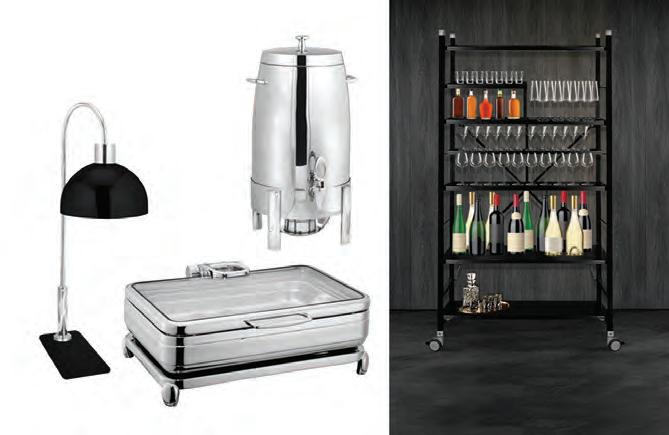
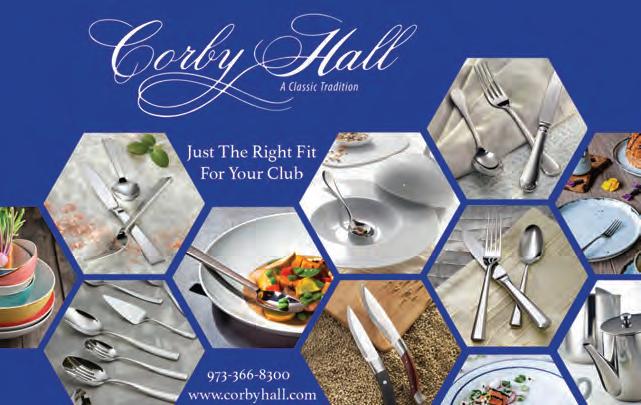
























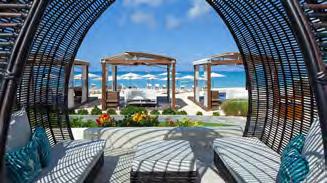


CLUBS AND PEOPLE MENTIONED
Matt Allnatt, GM/COO, Jonathan Club, Los Angeles, CA
Caesar Barcarcel, director of support services, Jonathan Club, LA, CA
Joseph F. Basso, GM/COO, Naples Lakes Country Club, FL
Laila Bensouda, GM, Madaëf Golfs, Morocco
Michael W. Carr, president, Detroit Golf Club, Detroit, MI
Jarrett Chirico, USPTA, PTR, PPTA, PPR, PPTR is director of racquets at Royal Oaks Country Club, Dallas, TX
Frank Cordeiro, CCM, COO, Colonial Country Club, Fort Worth, TX
Barrett Eiselman, GM/COO, Bel-Air Bay Club, CA
Roberto Escalante, operations manager, lower club, Bel-Air Bay Club, CA
Brandon Farrell, DO/Sommelier Eastern Yacht Club
Dr. Bonnie Knutson, the Country Club of Lansing and the Michigan Athletic Club
Paul Kornfeind, clubhouse manager, The Austin Club, Austin Texas
Bill Langley, COO/GM,The Club at Quail Ridge, Boynton Beach, FL
Nancy Levenburg, member, Spring Lake Country Club, Spring Lake, MI
Ben Lorenzen, creative director, Champions Run, Omaha, NE
David Mackesey, past-president, Diablo Country Club
Michael McCarthy, CEO/GM, Addison Reserve Country Club, FL
Allison Mitchell, president, Huntington Country Club, Huntington, NY
Cassell Moore, banquet supervisor, Union League of Philadelphia, PA
Brett Morris, GM/COO The Club at Admirals Cove, FL
Johnny Morris, founder, Big Cedar Lodge, Missouri Ozarks
Michael Rappaport, president, Hunters Run Country Club, Boynton Beach, FL
Duncan Reno CCM, CCE, GM/COO, Del Rio Country Club, Modesto, CA
Larry S. Savvides, GM/COO, Hunters Run Country Club, Boynton Beach, FL
Ira Schwartz, president, Naples Lakes Country Club, FL
Robert Sereci, CEO, Colleton River Club, Bluffton, SC
Christopher Shirling, president, Indian Hills Country Club, Mission Hills, KS
Roger Simon, COO/GM New York Athletic Club, NY NY
Ward Sutton, GM, Kent Country Club, Grand Rapid, MI
Josh Tanner, COO, Ironwood Country Club, Palm Desert, CA
Robert Tibbetts, GM/COO, Indian Hills Country Club, Mission Hills, KS
Simona Vasu, director of hotel operations, The Club at Admirals Cove, FL
Keith Wandell, president, Colleton River Club, Bluffton, SC
Craig Welch III, president, Kent Country Club, Grand Rapid, MI
Golf Les Dunes, Morocco
Golf Oued Fès, Morocco
Golf Tazegzout, Morocco
Royal Golf Dar Es Salam, Morocco
Royal Golf El Jadida, Morocco
Royal Golf Fès, Morocco
Talisker Clubhouse
The Club at Las Campanas
The Moorings at Hawk’s Nest
Union League of Philadelphia


